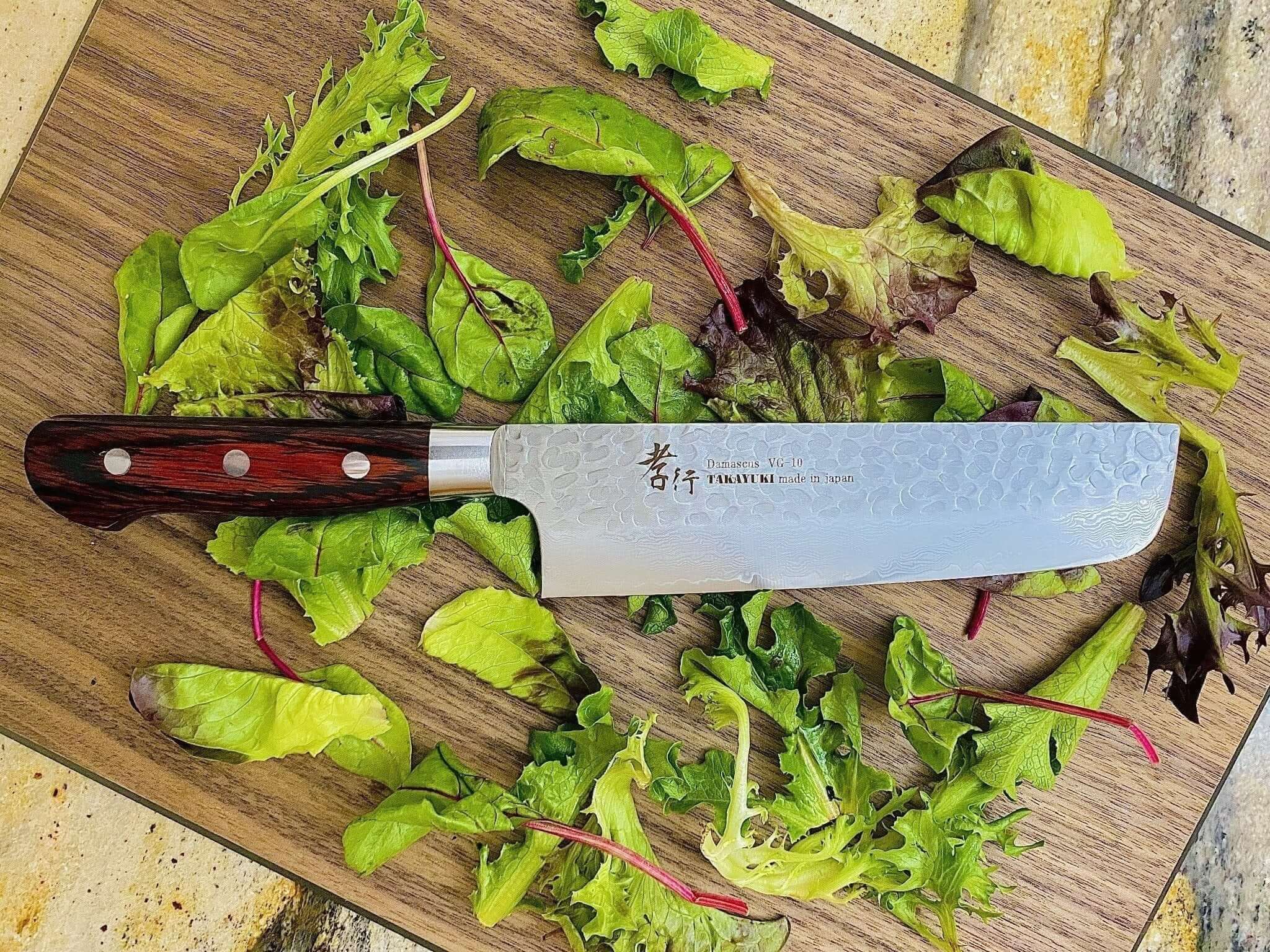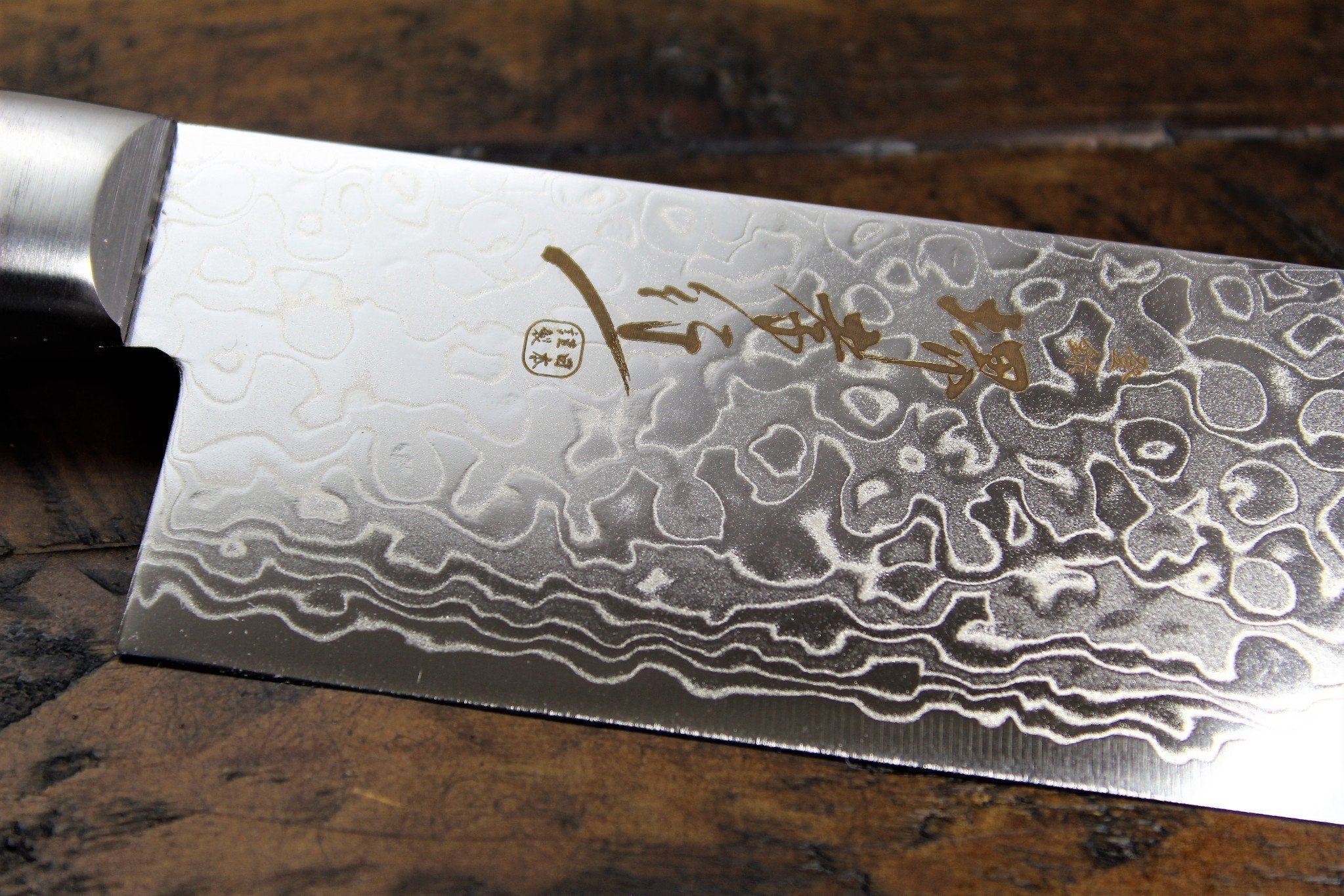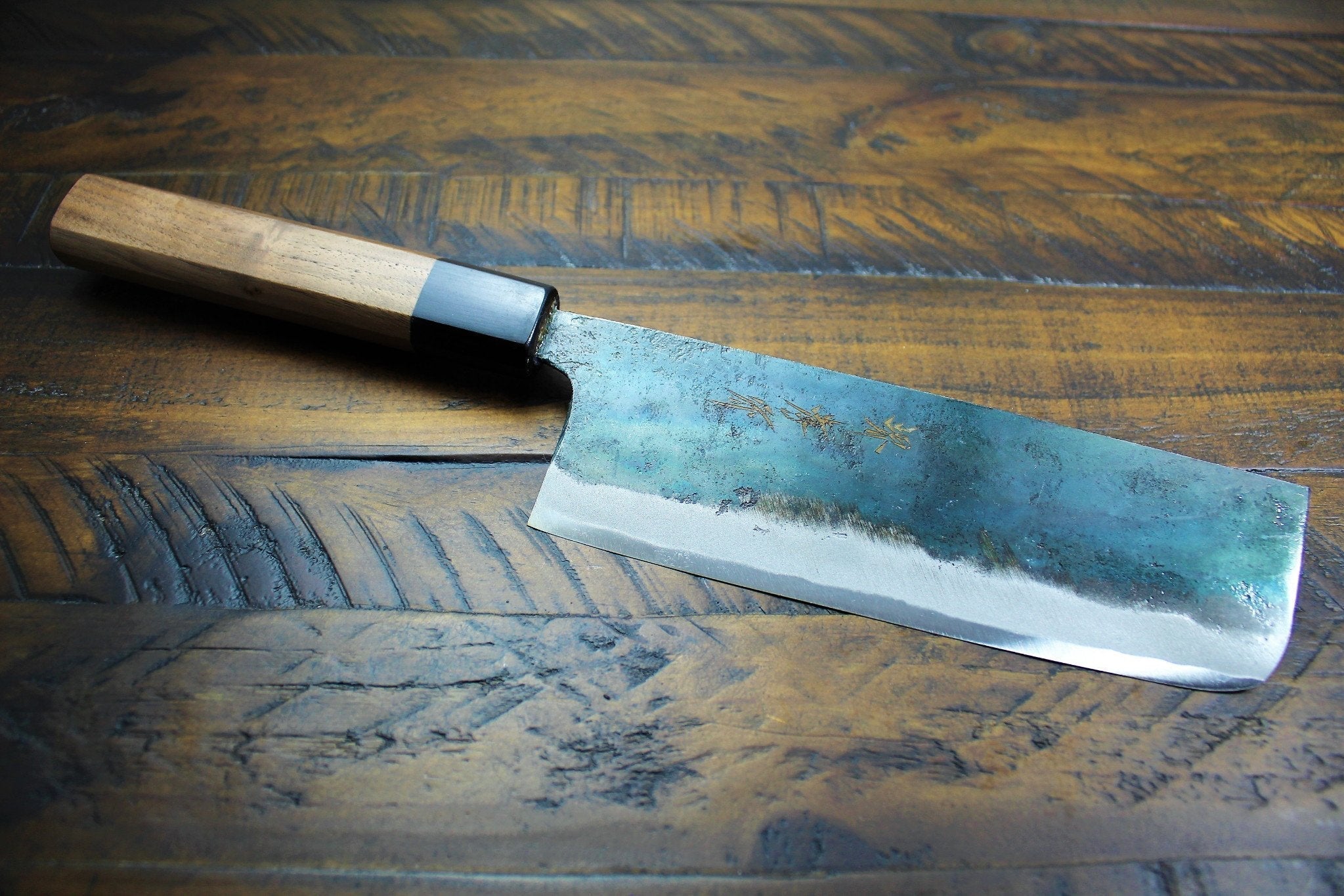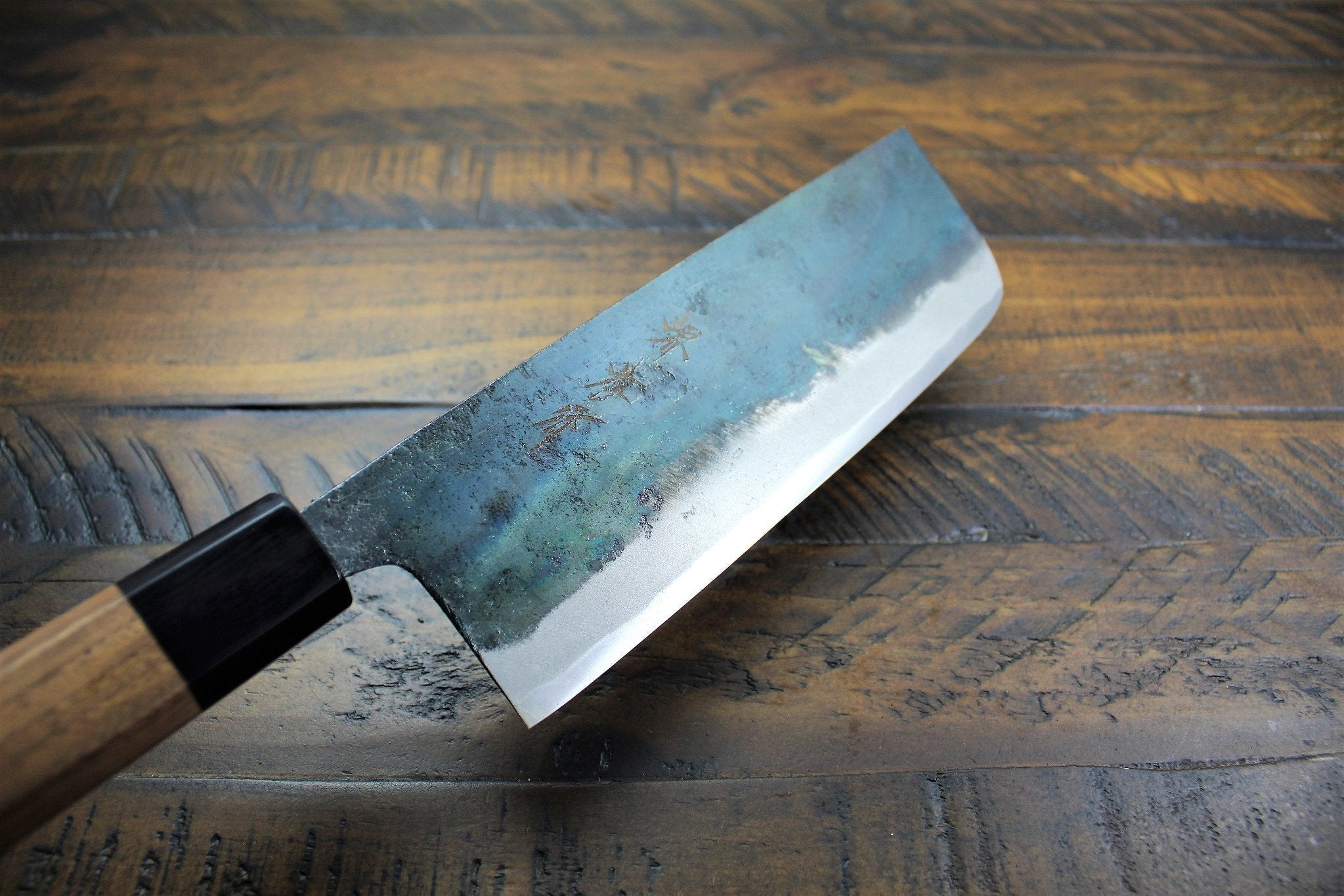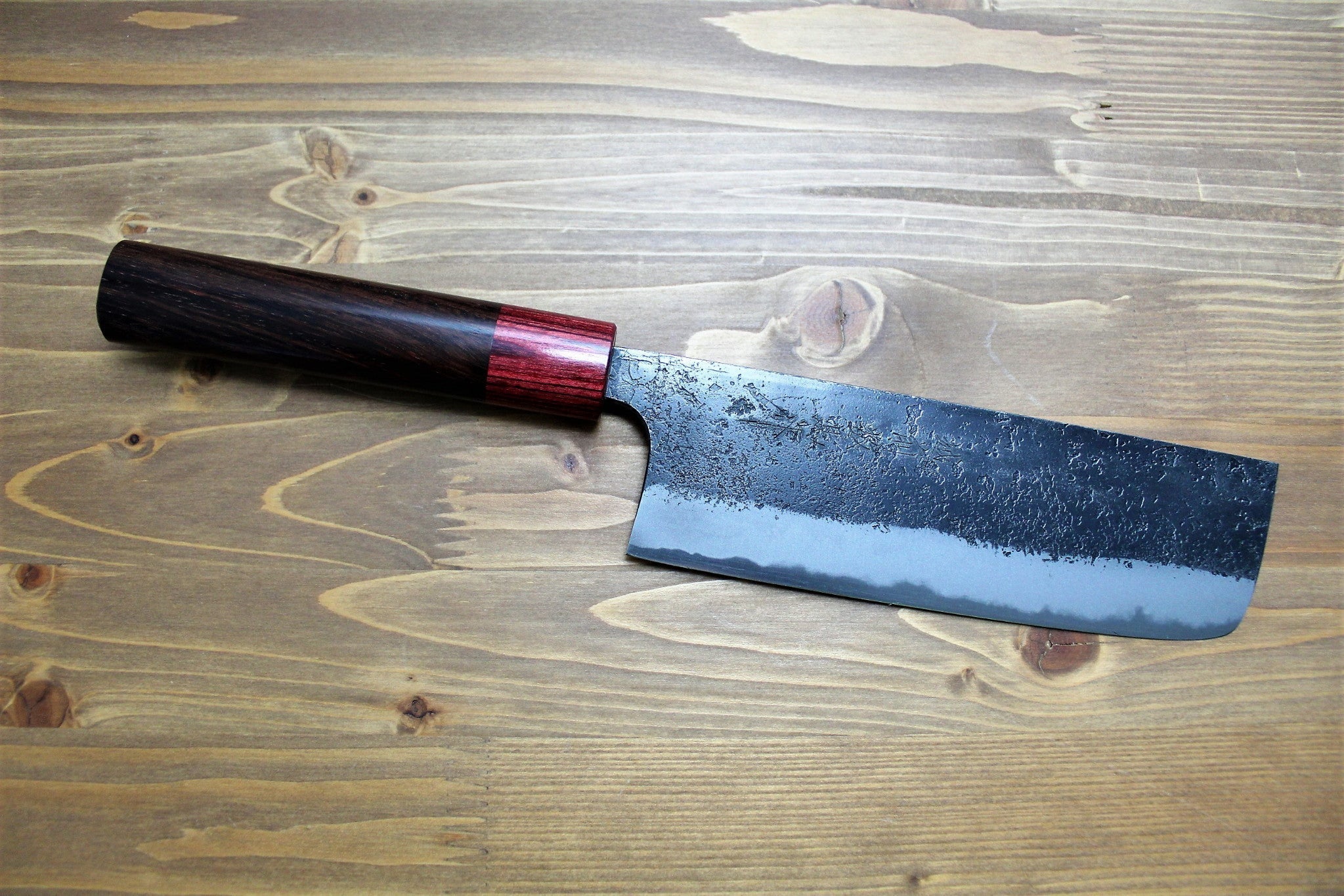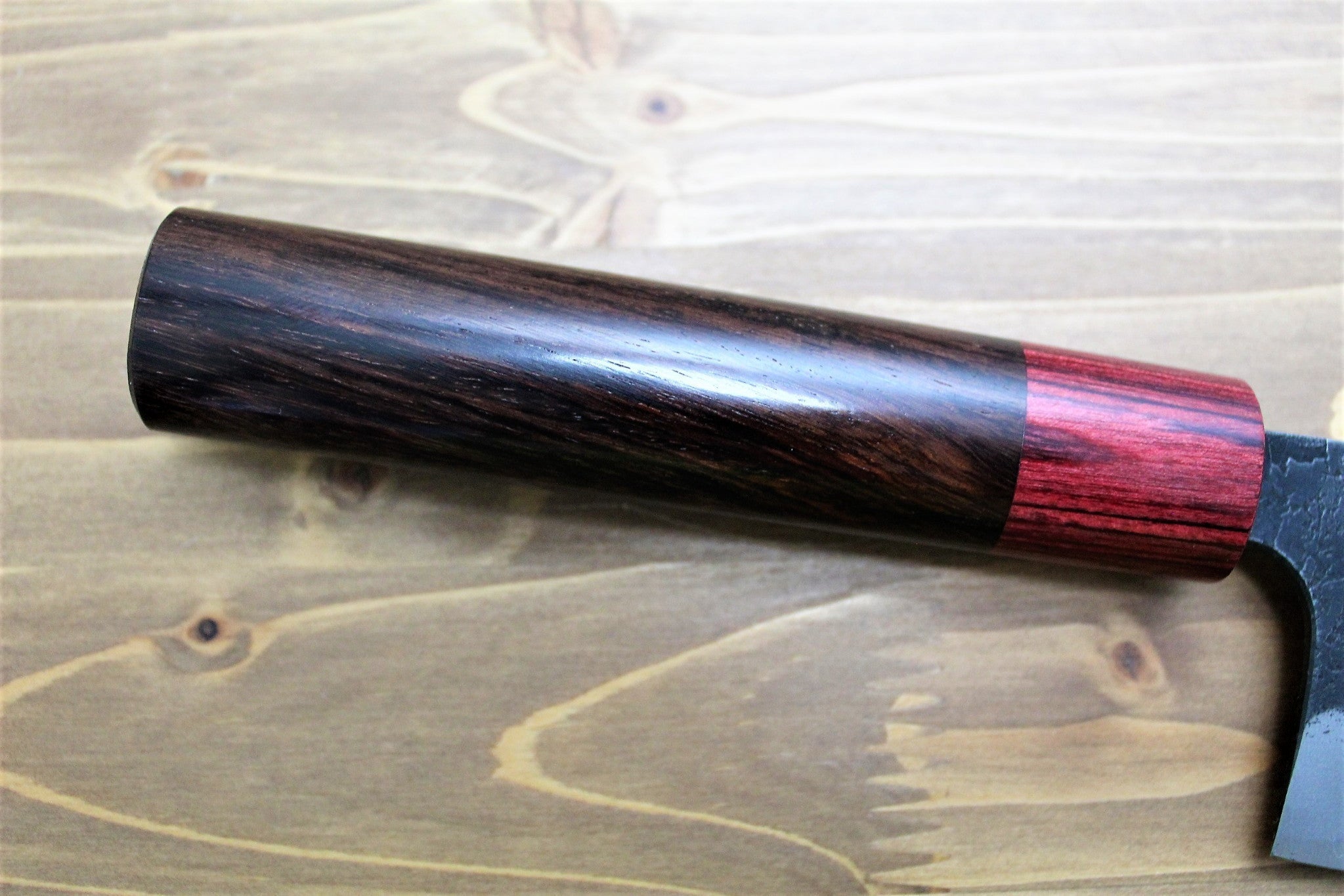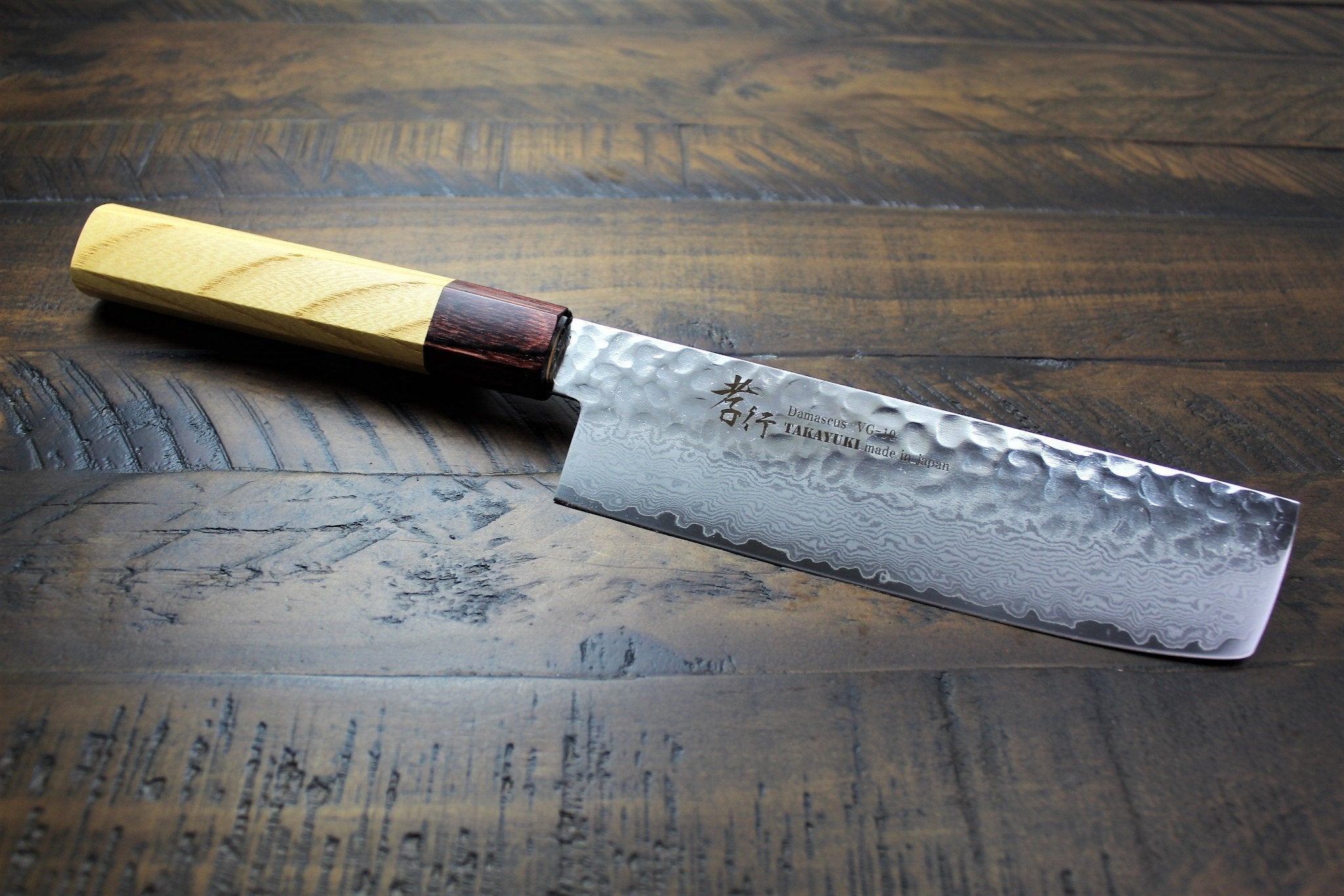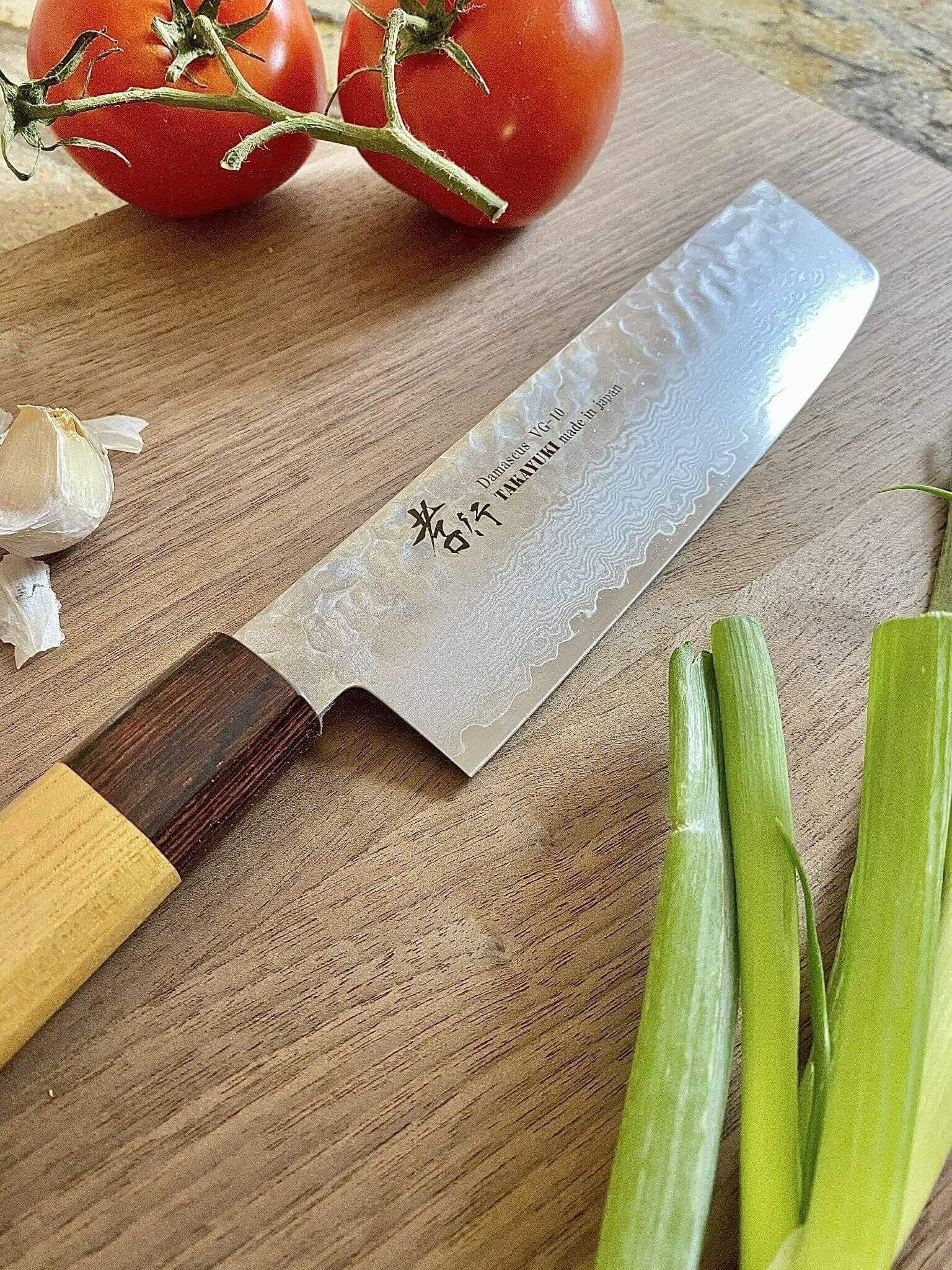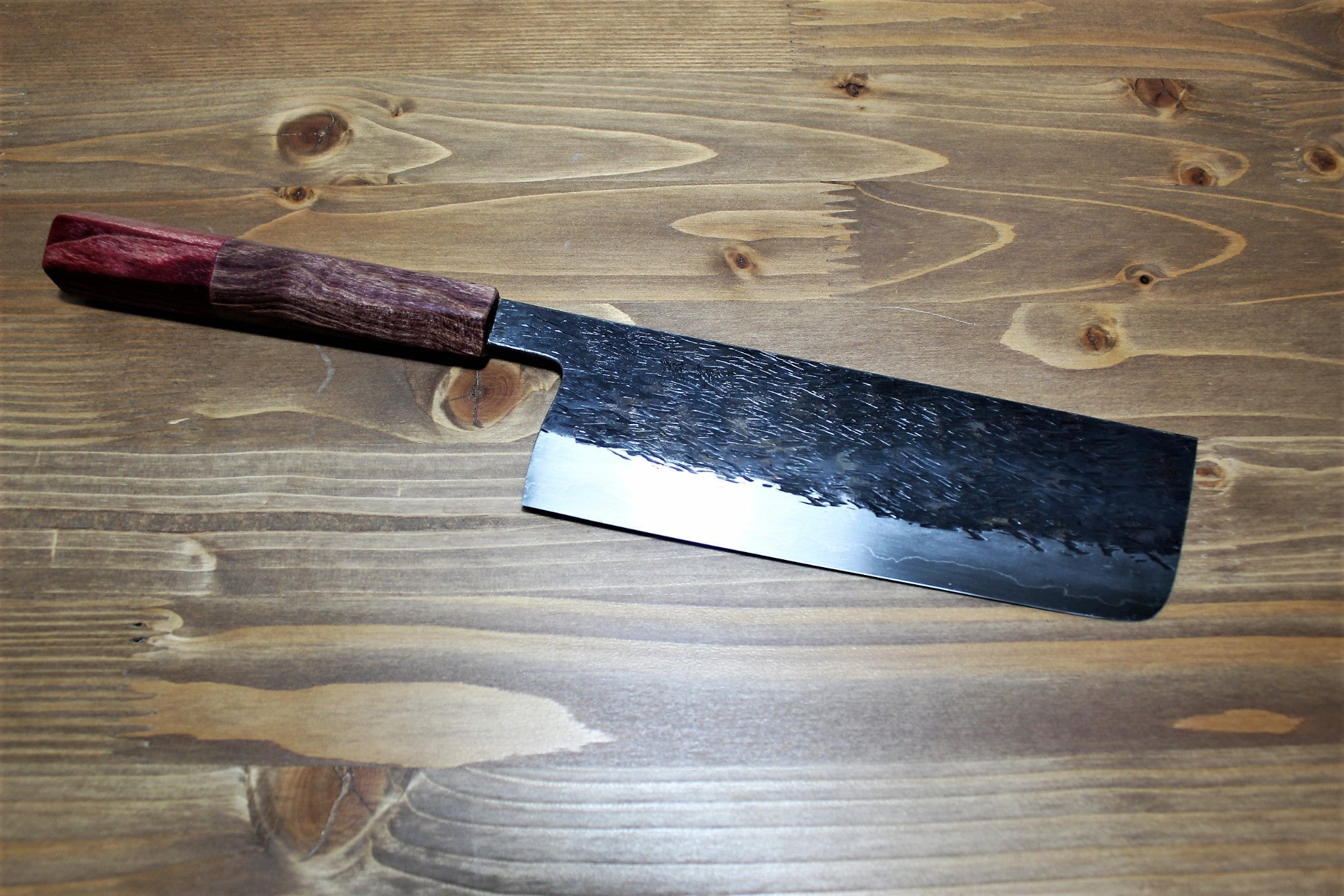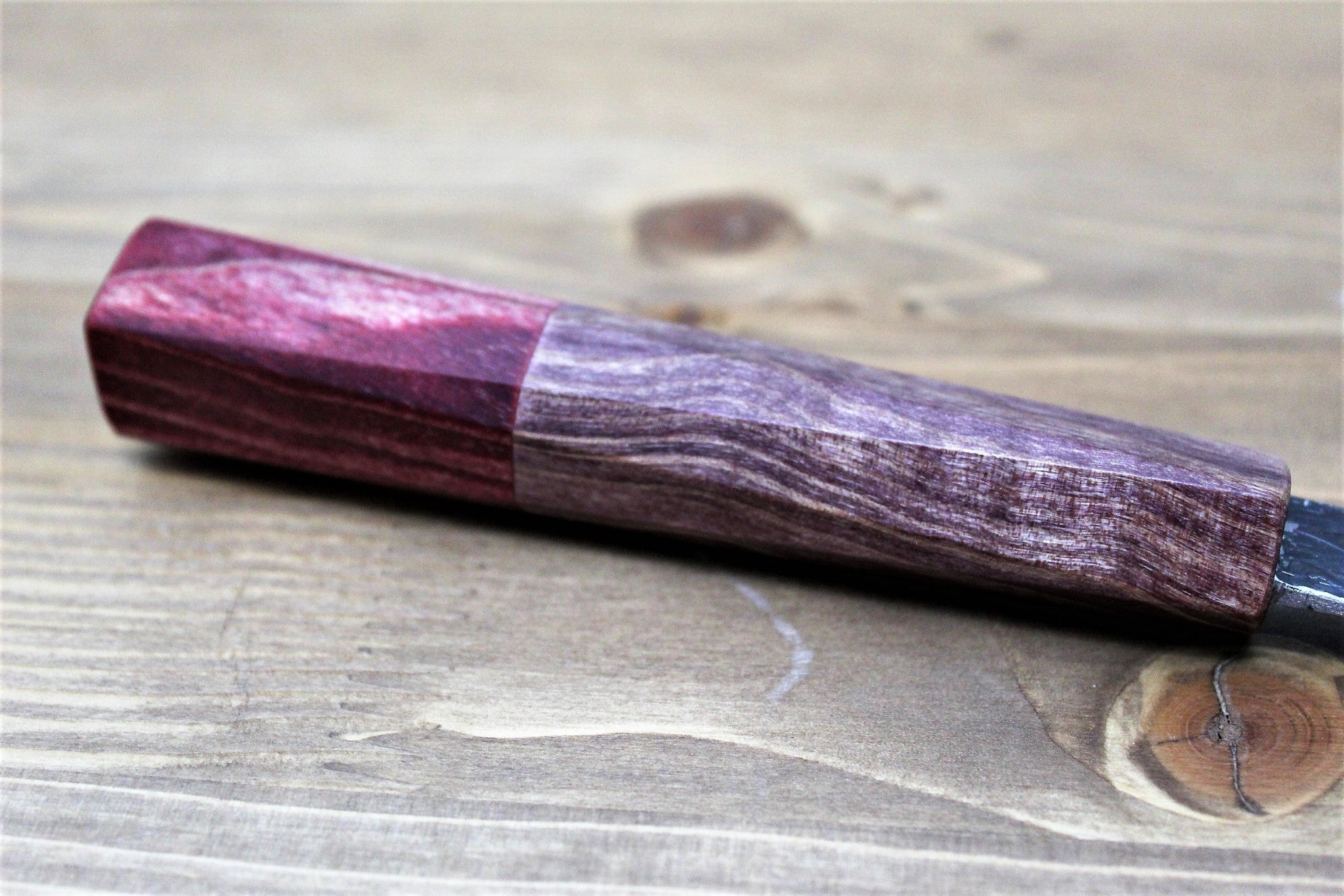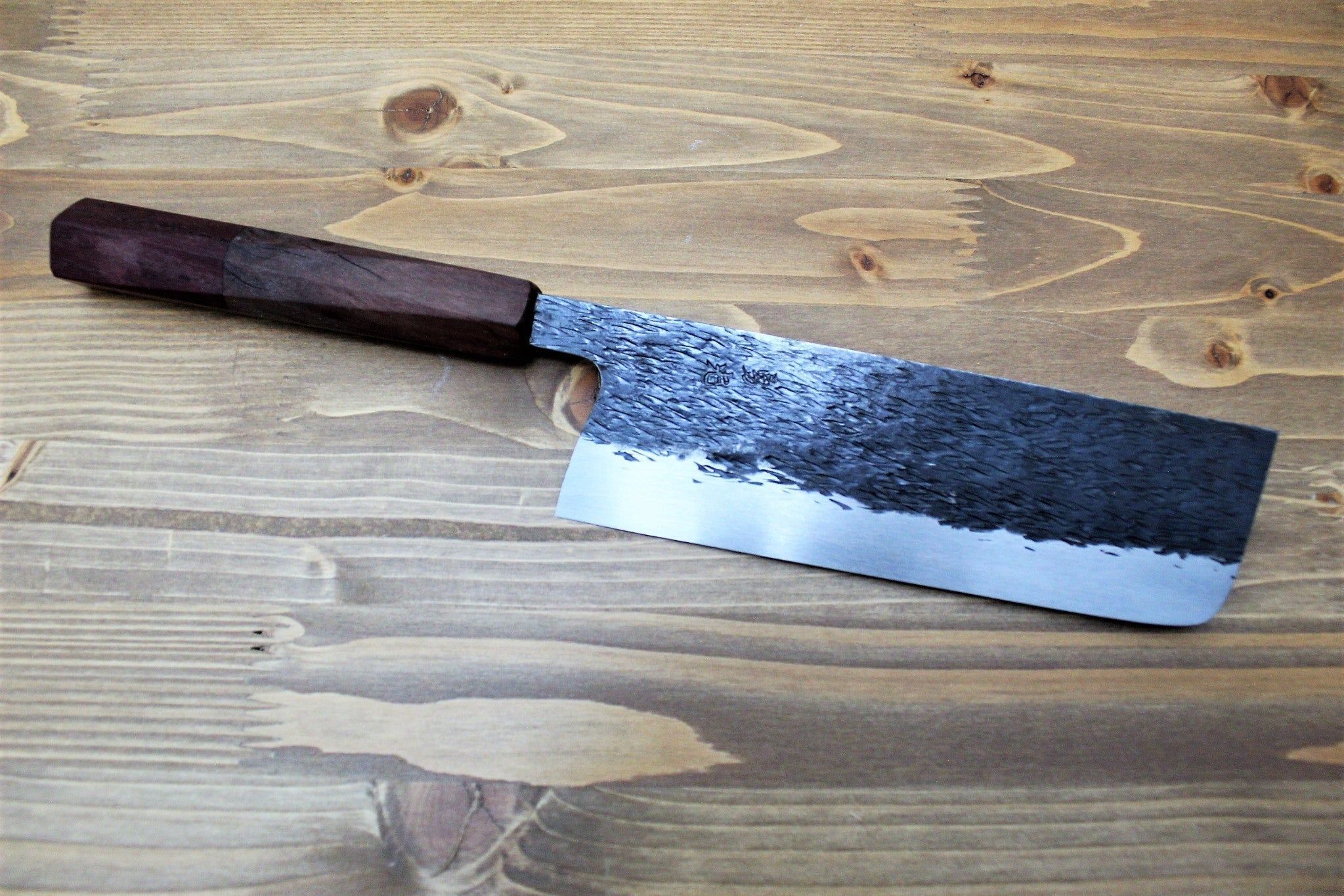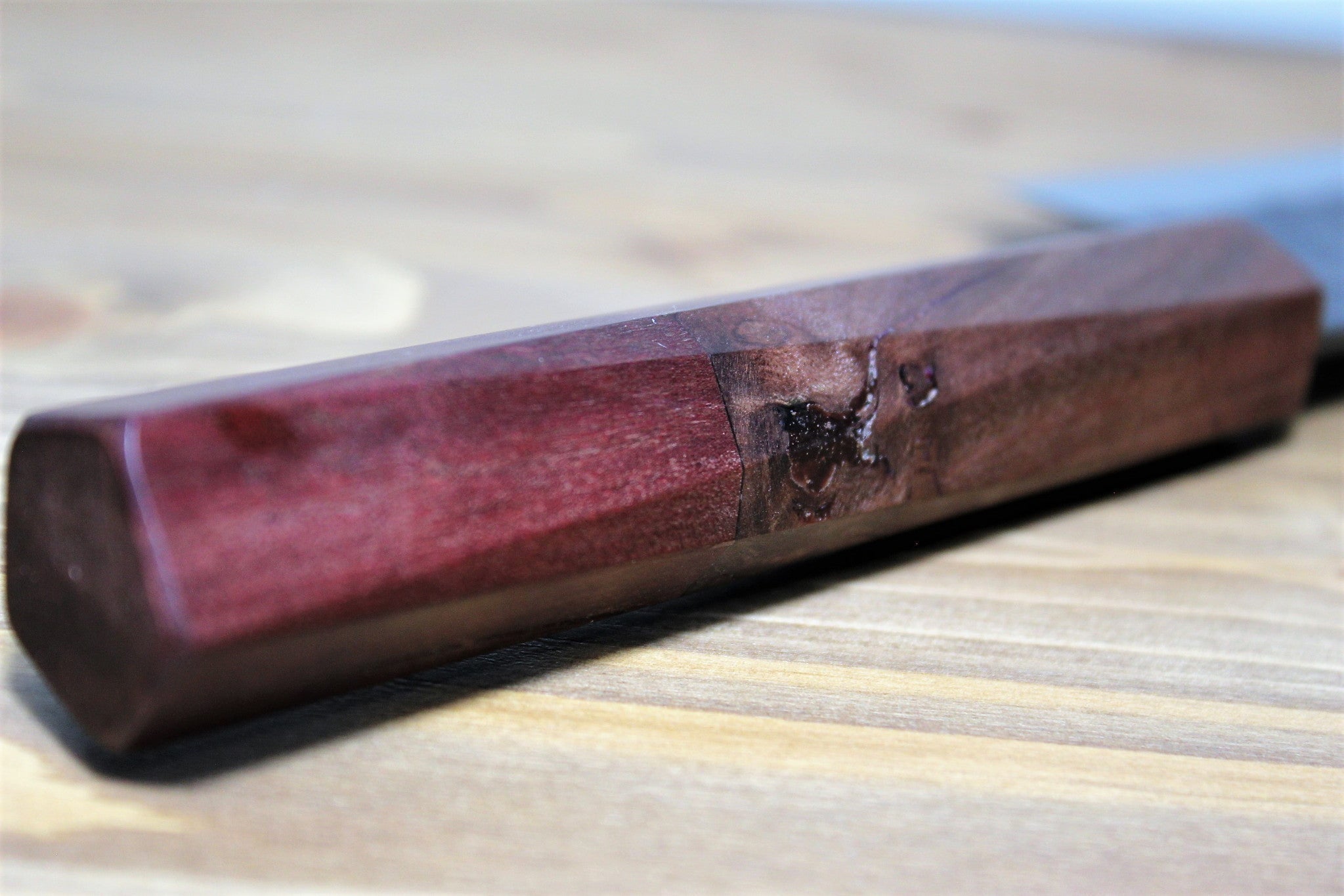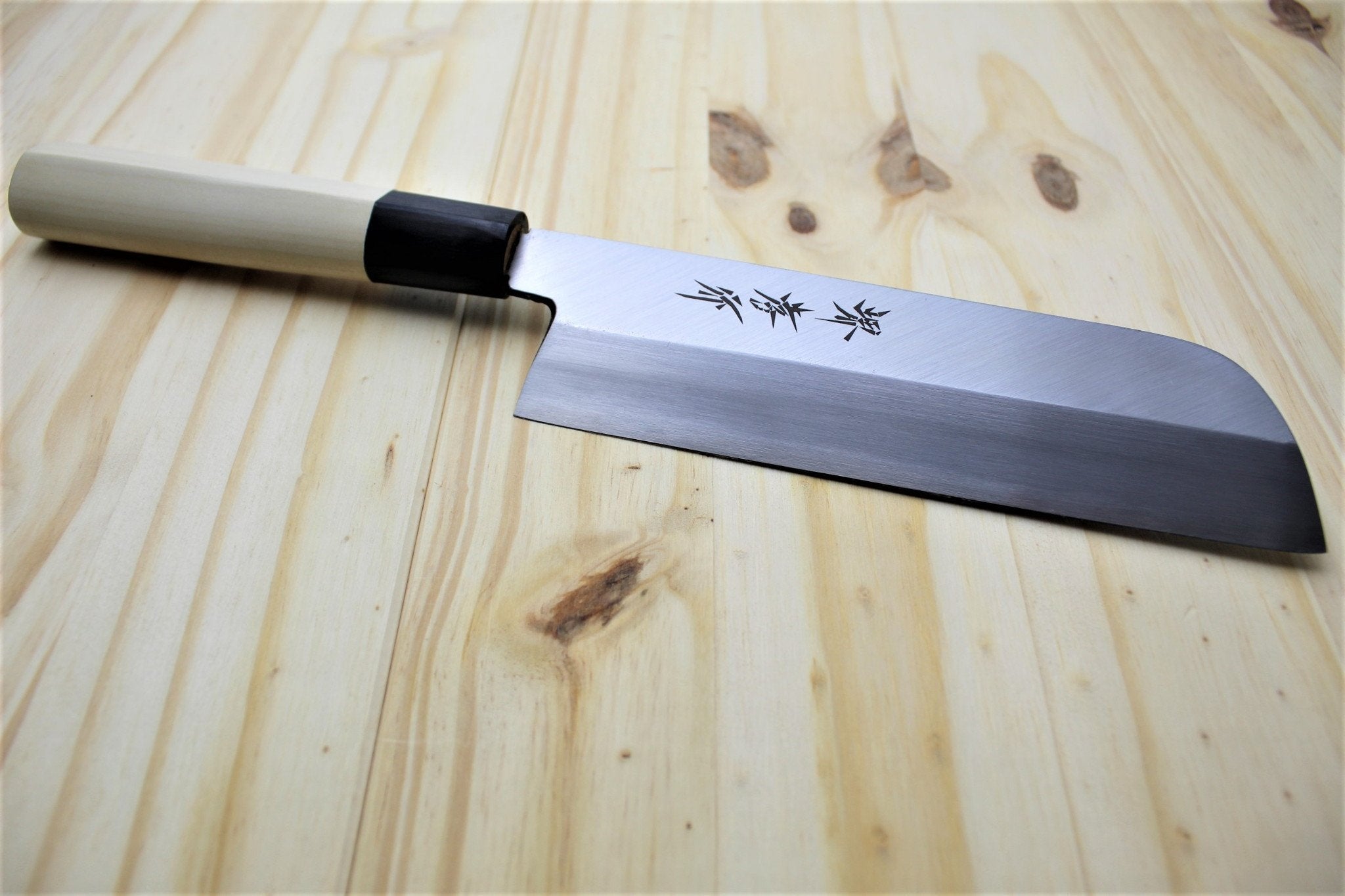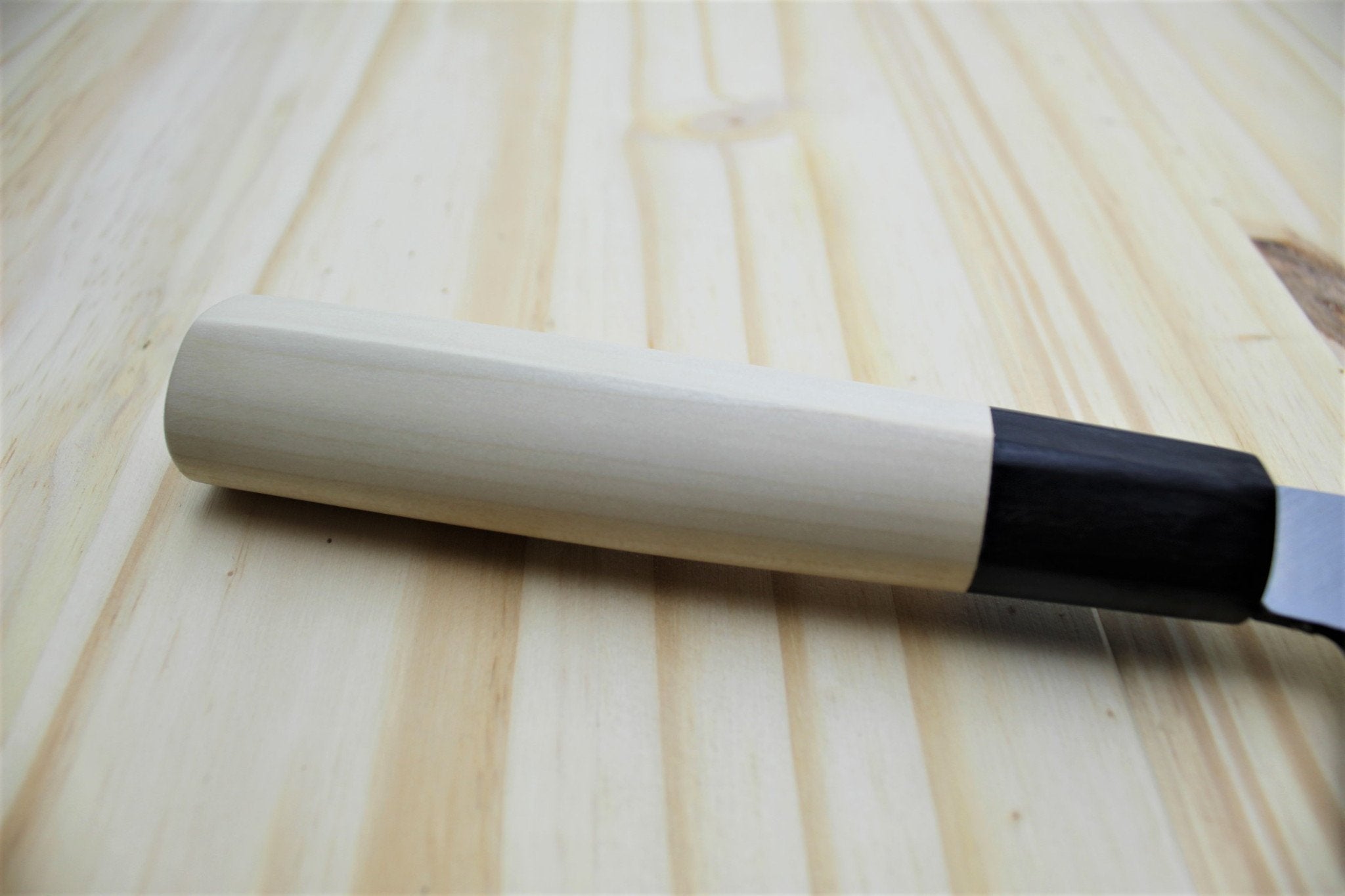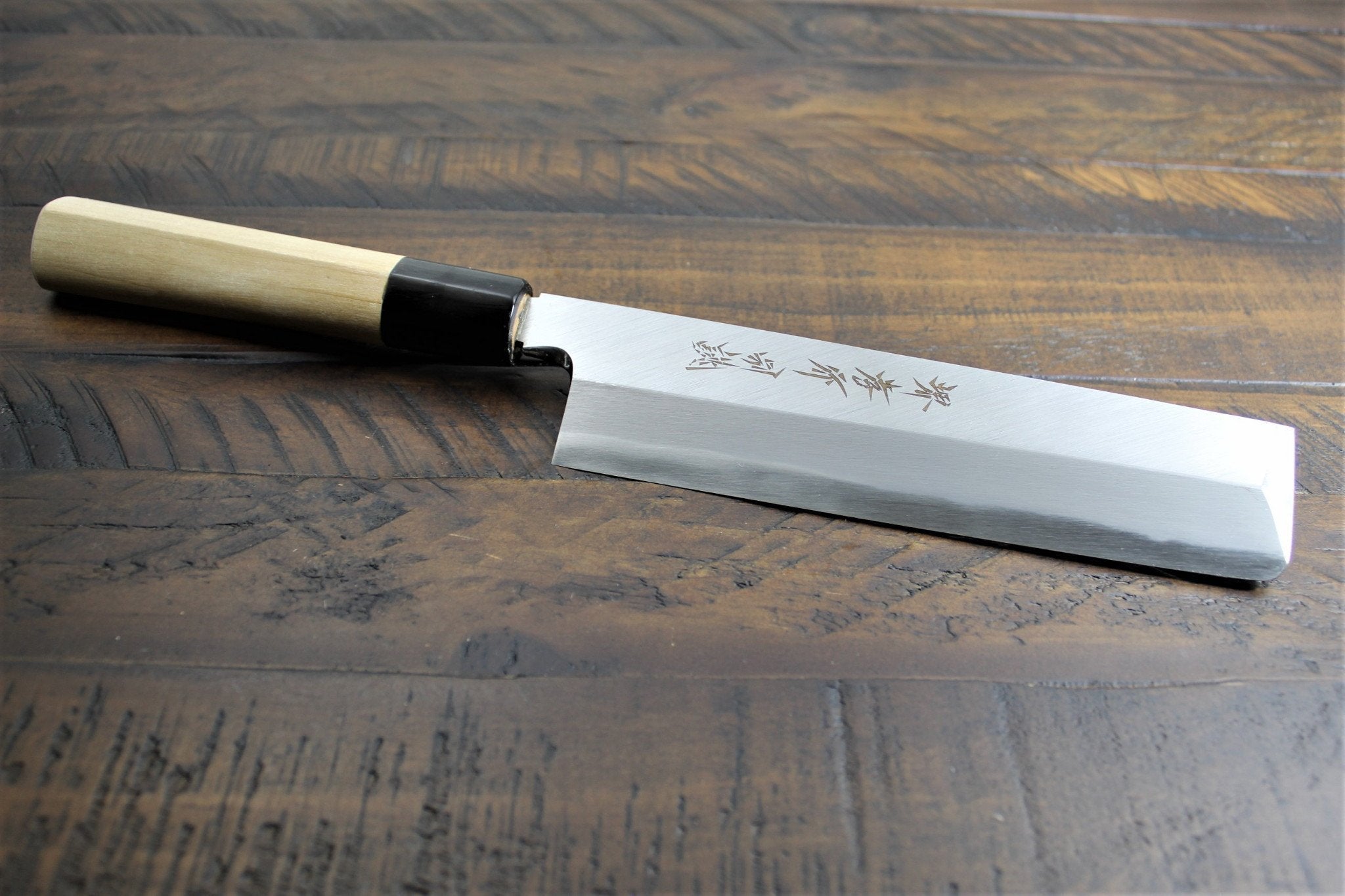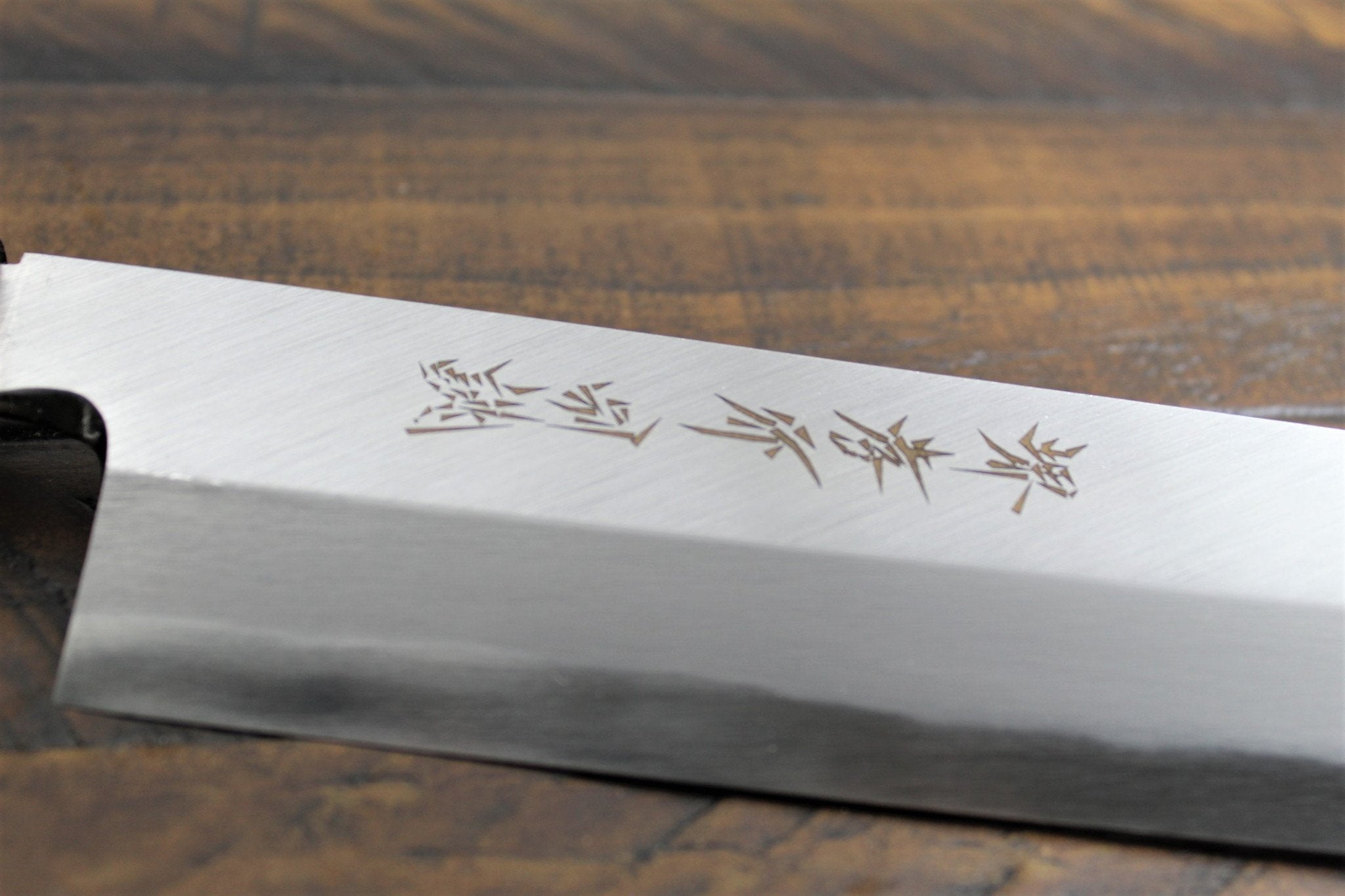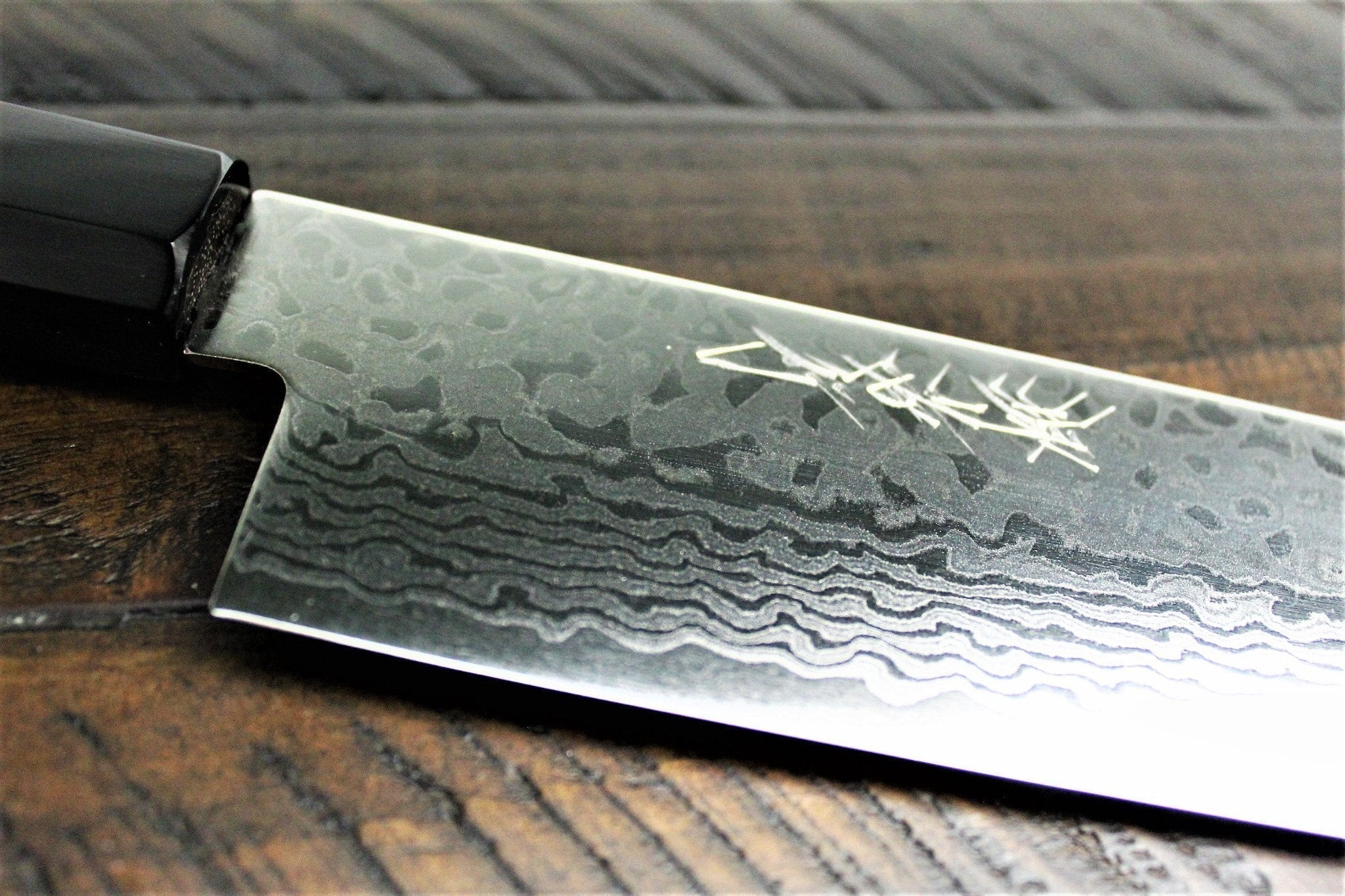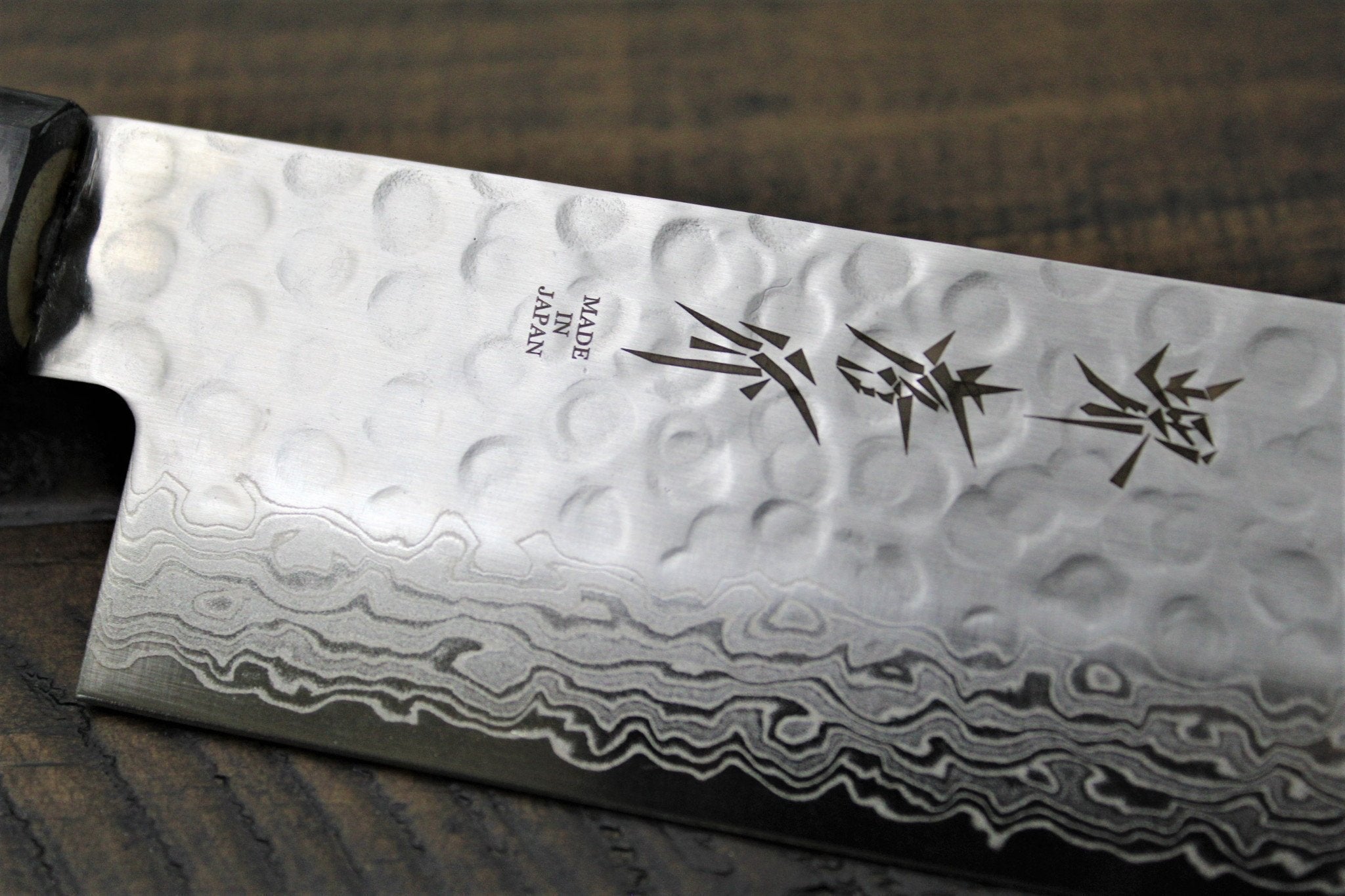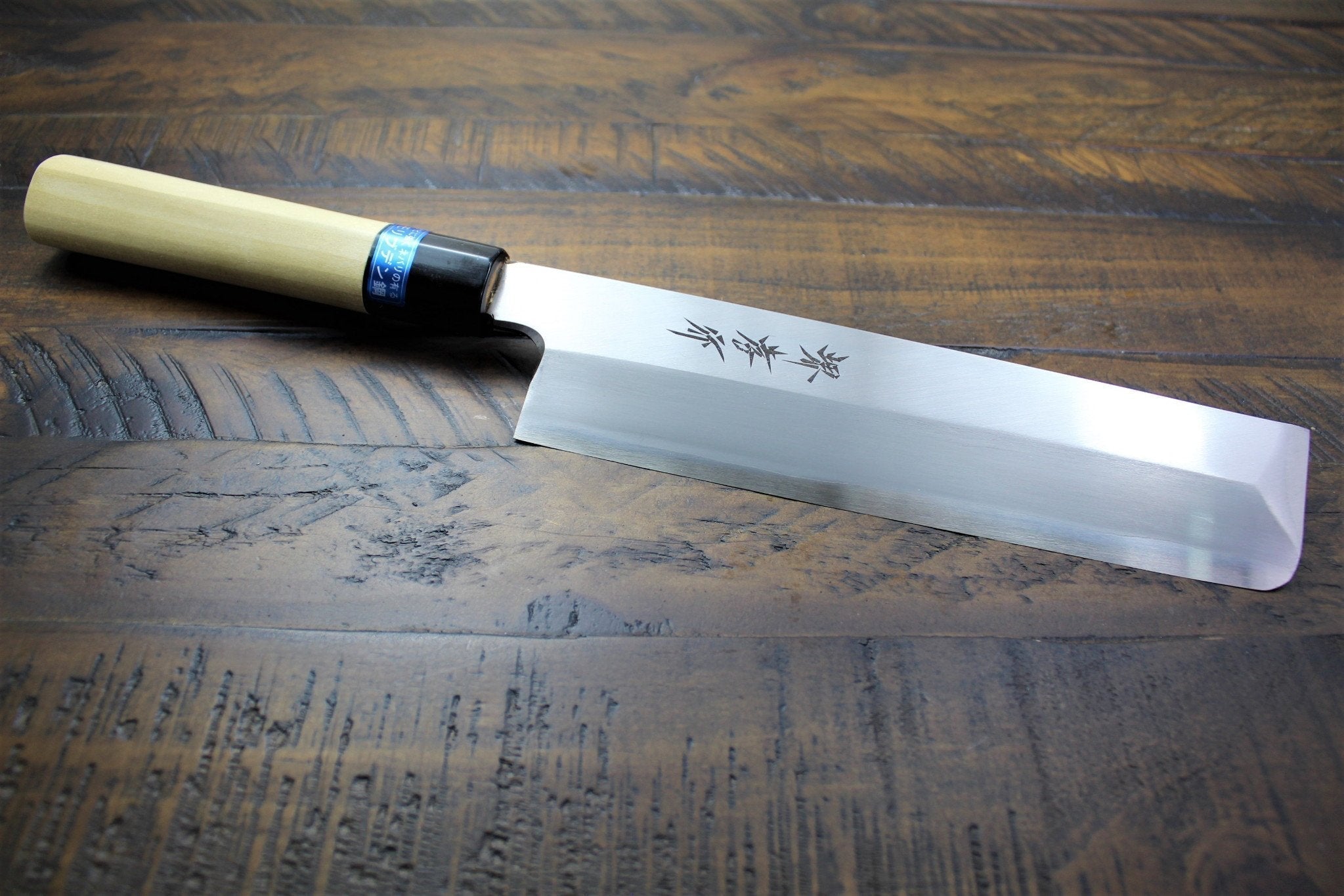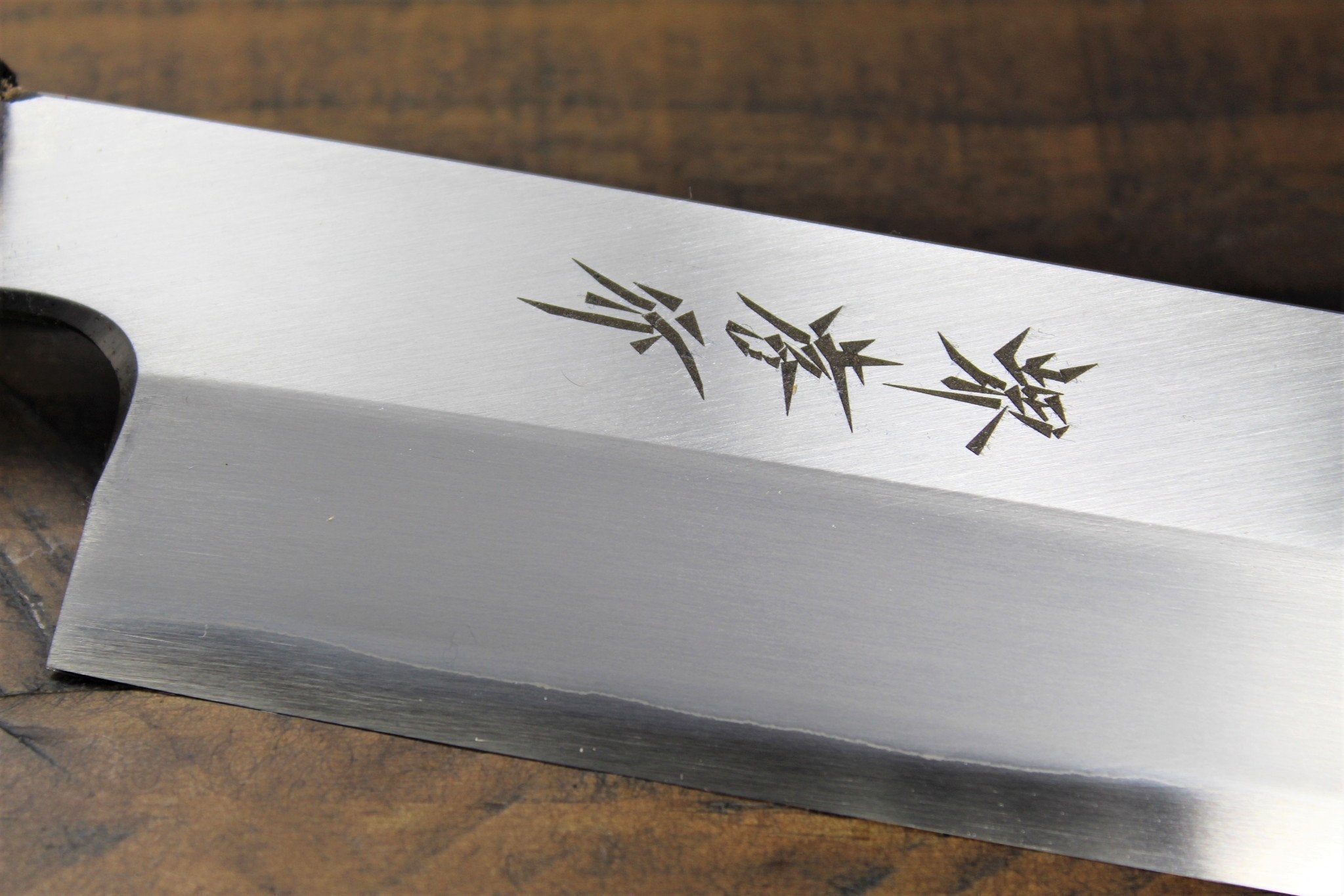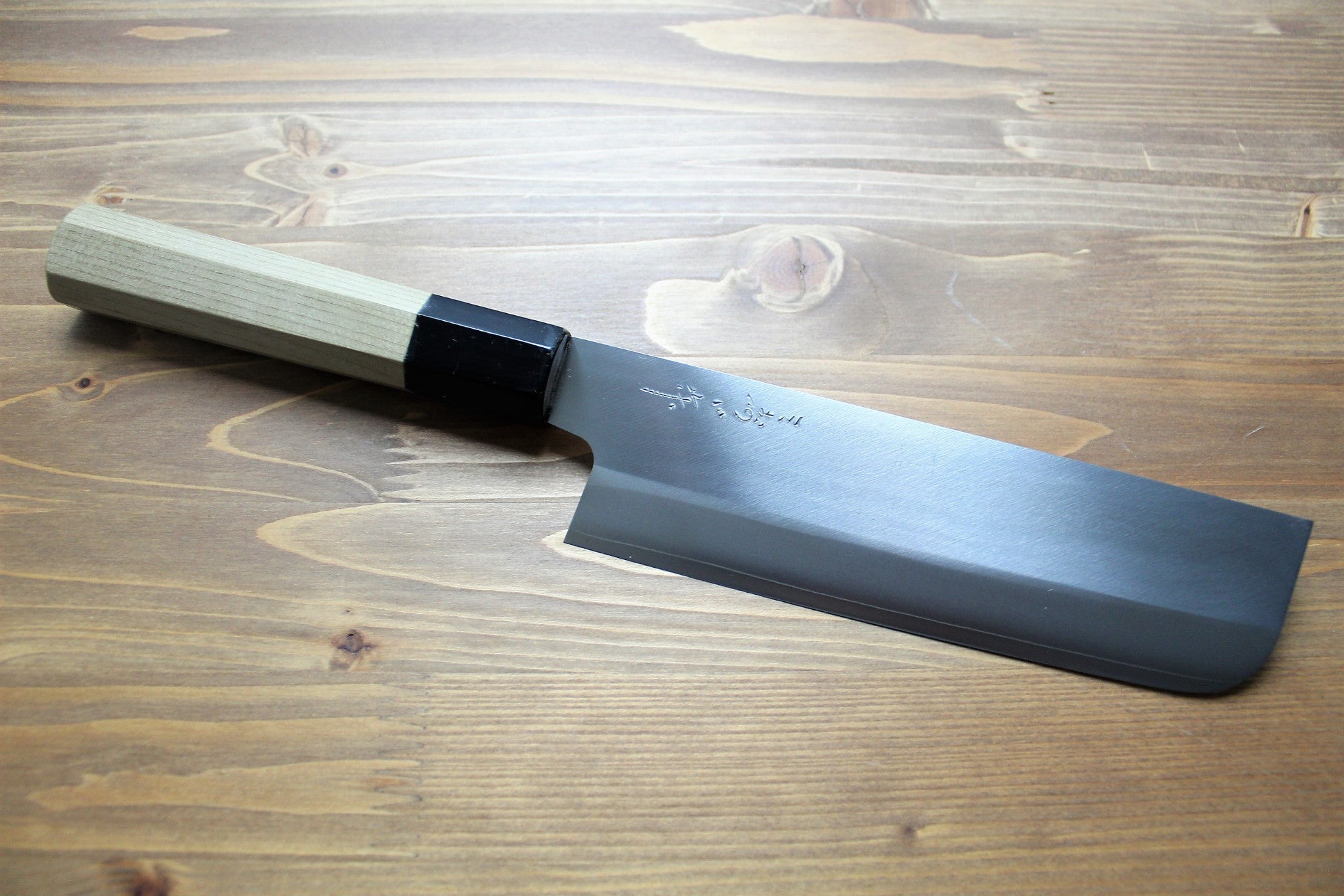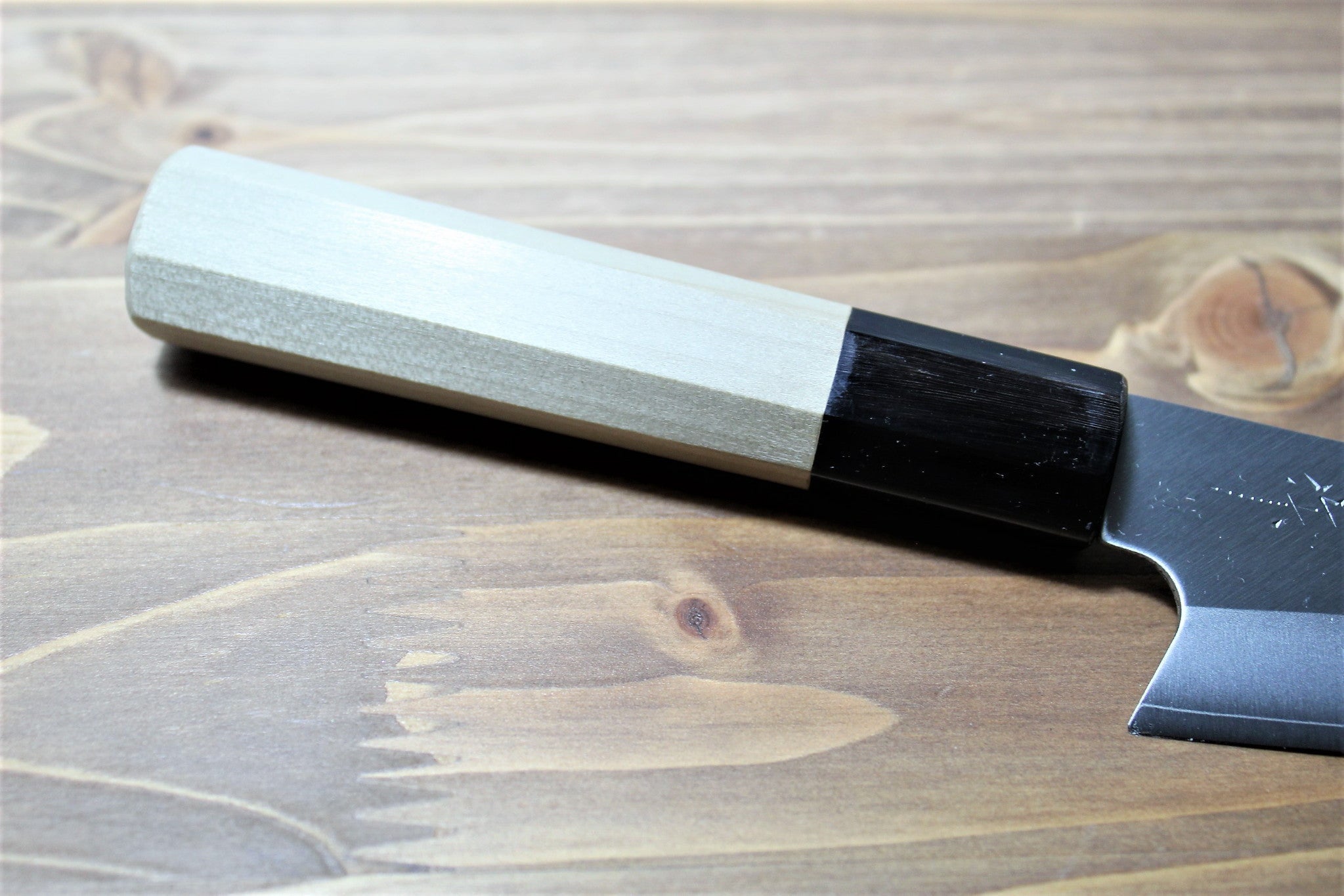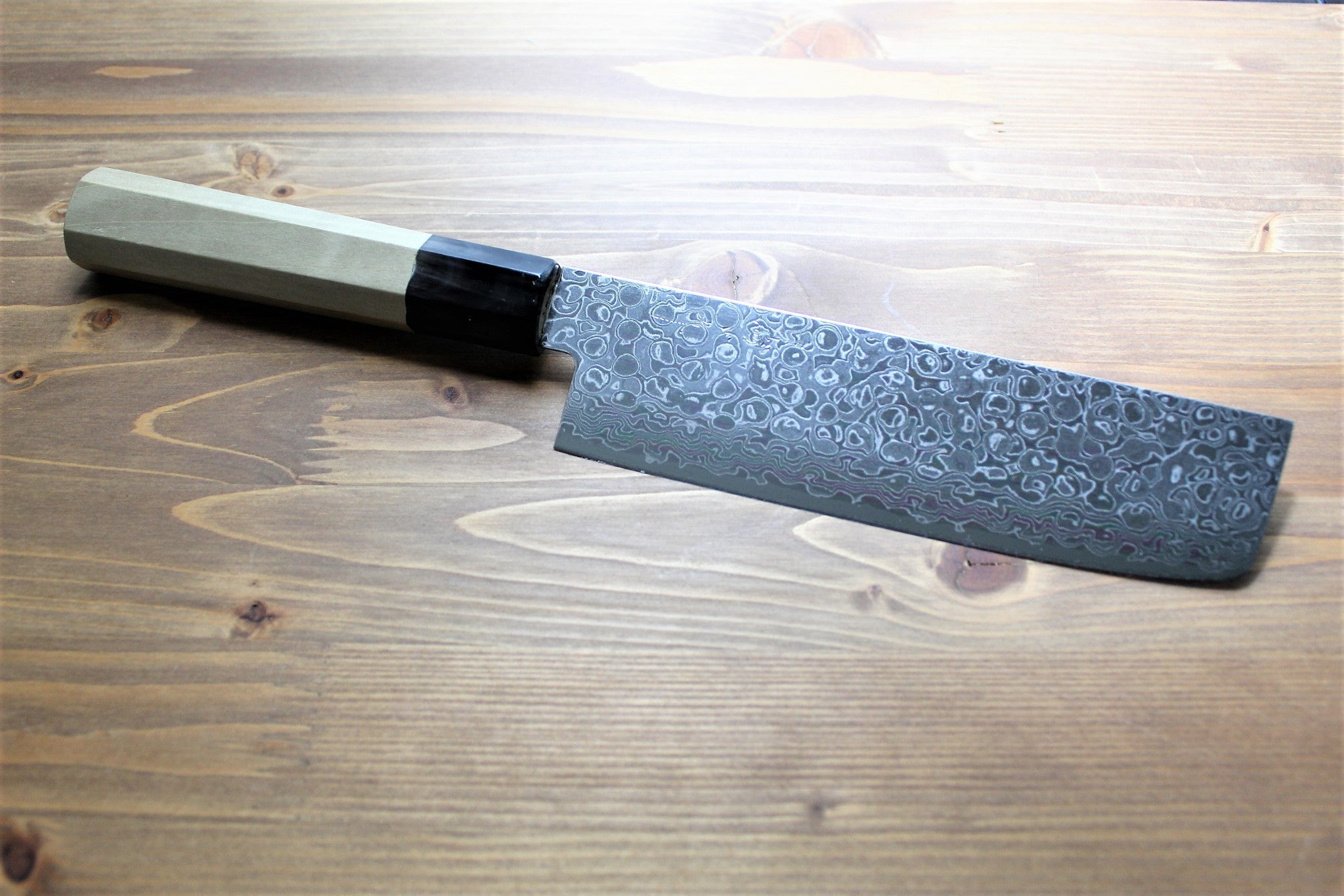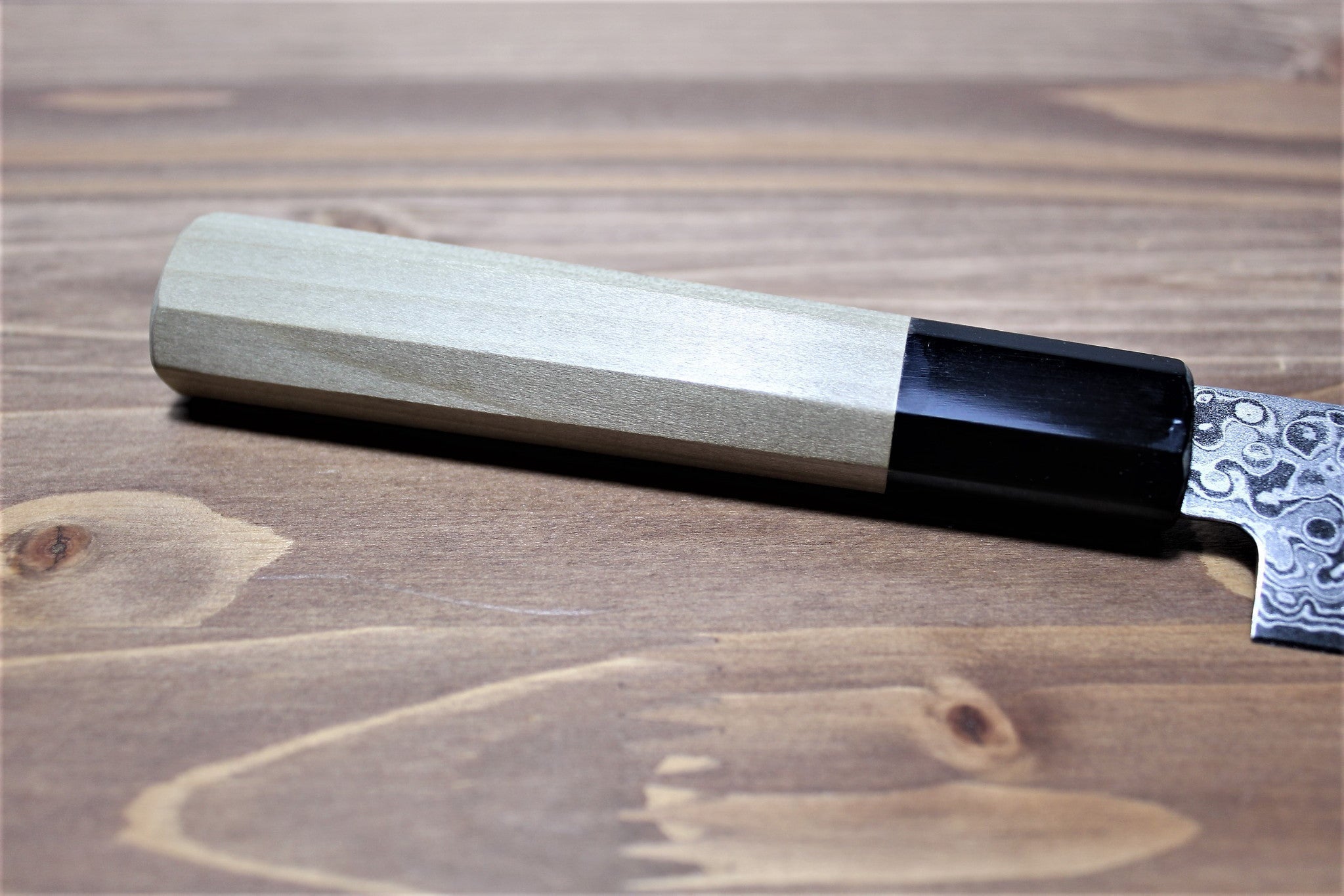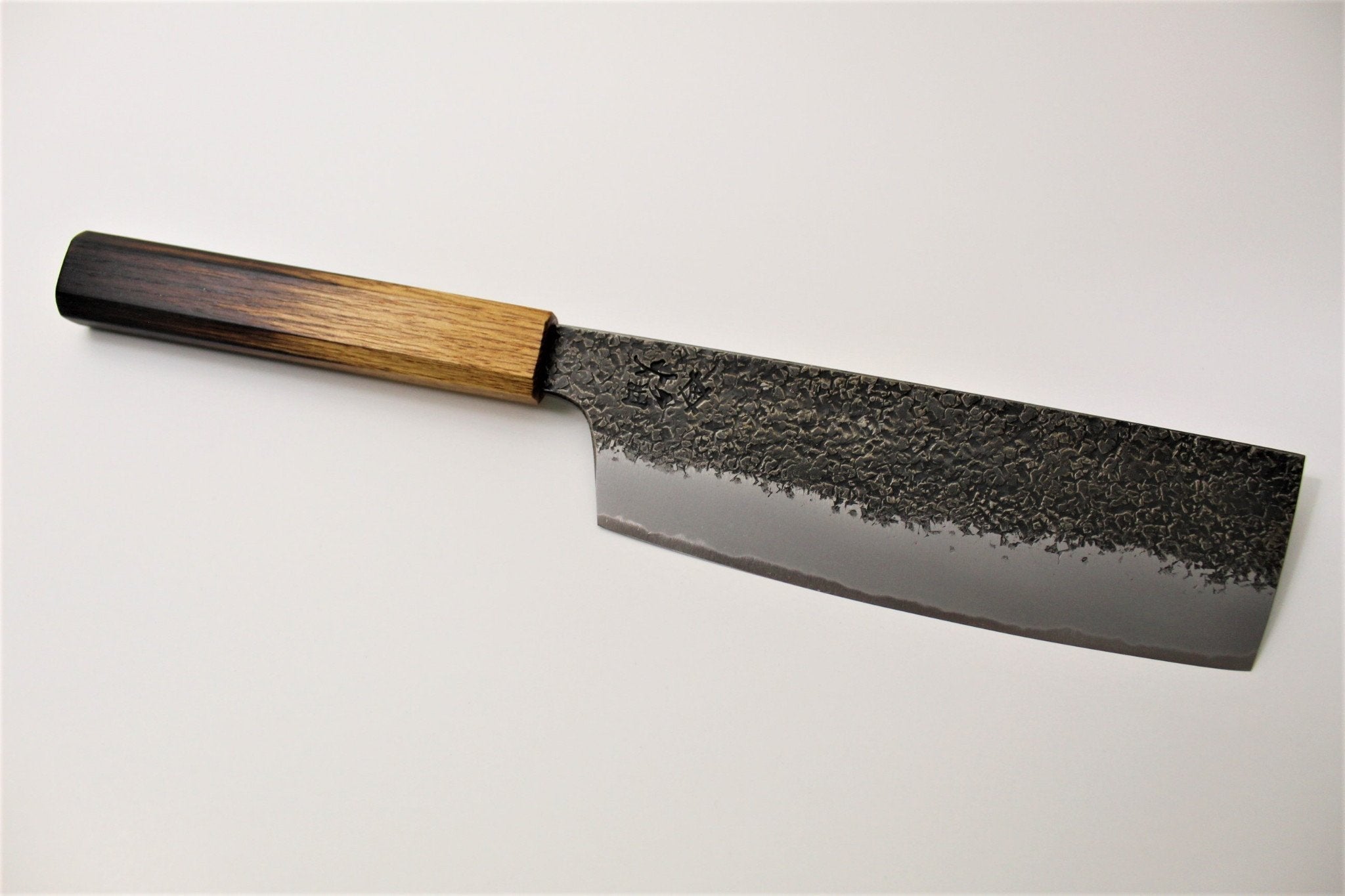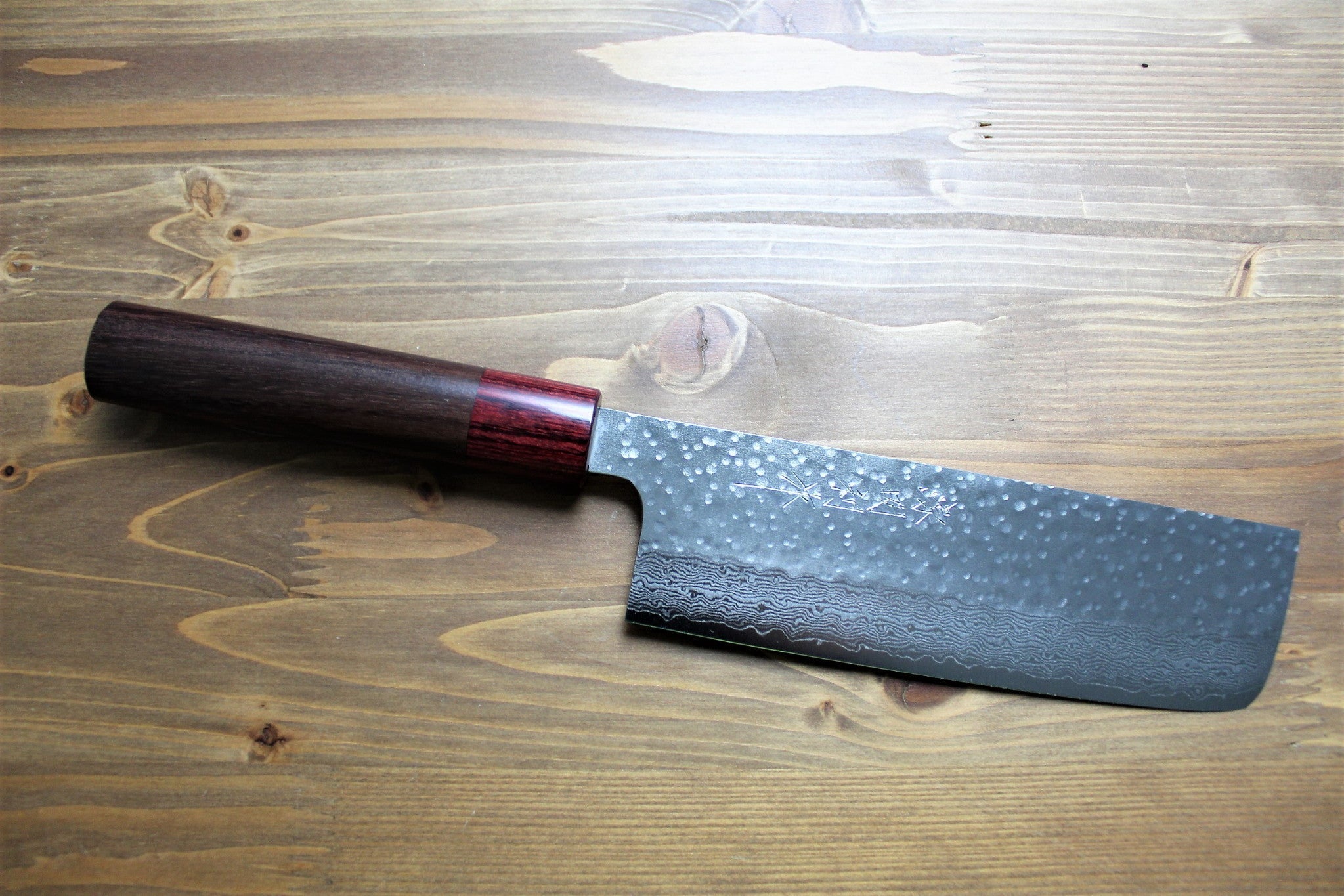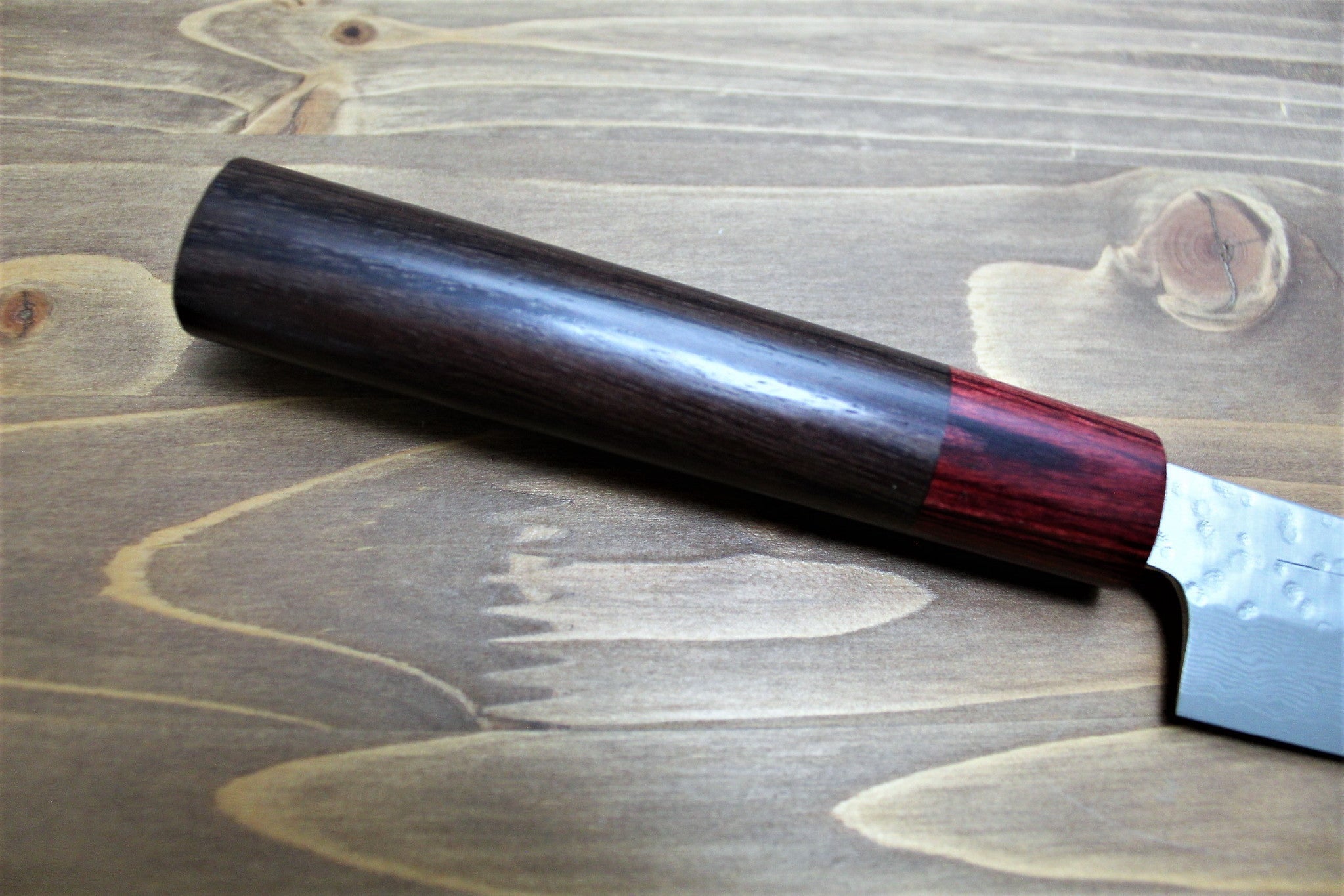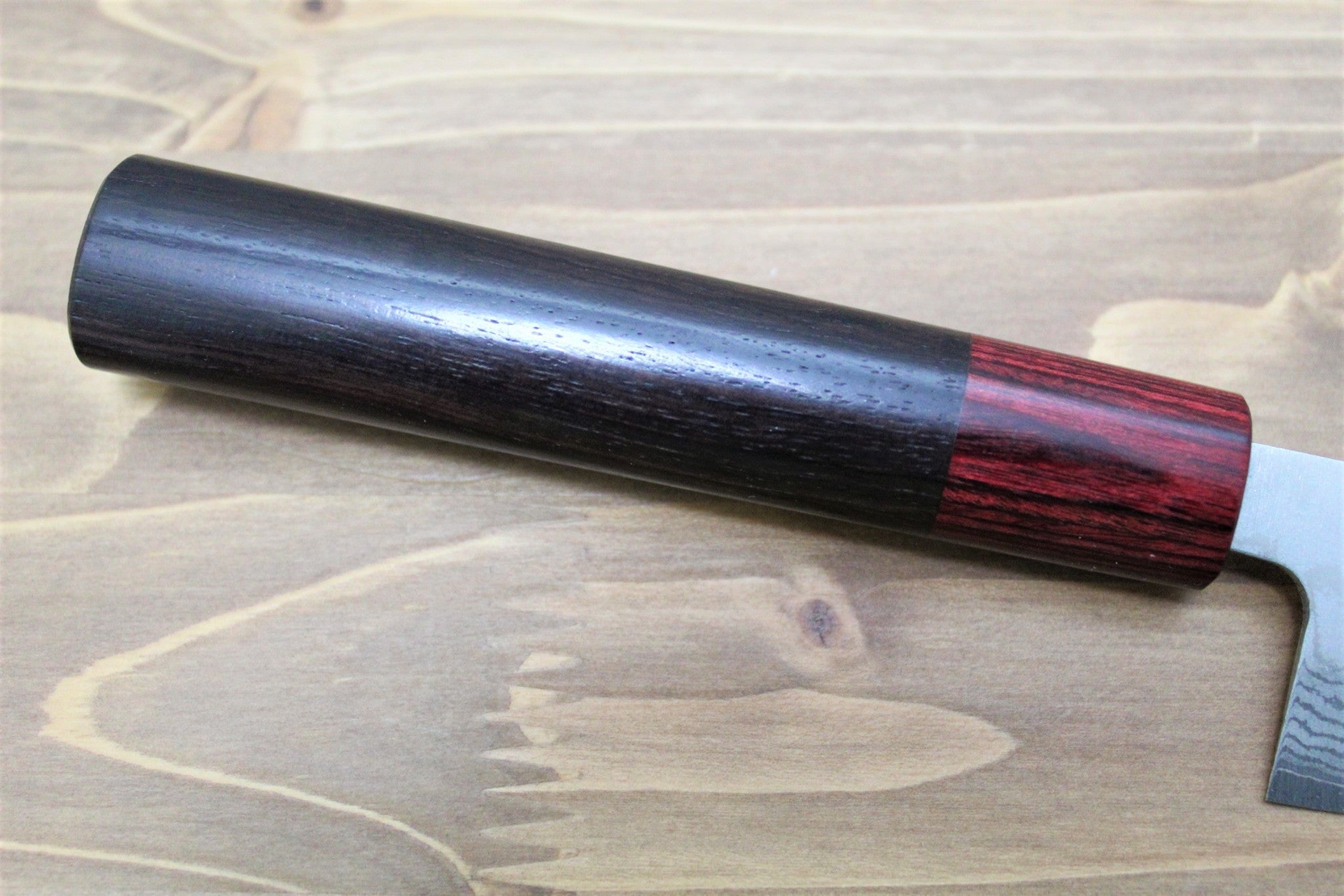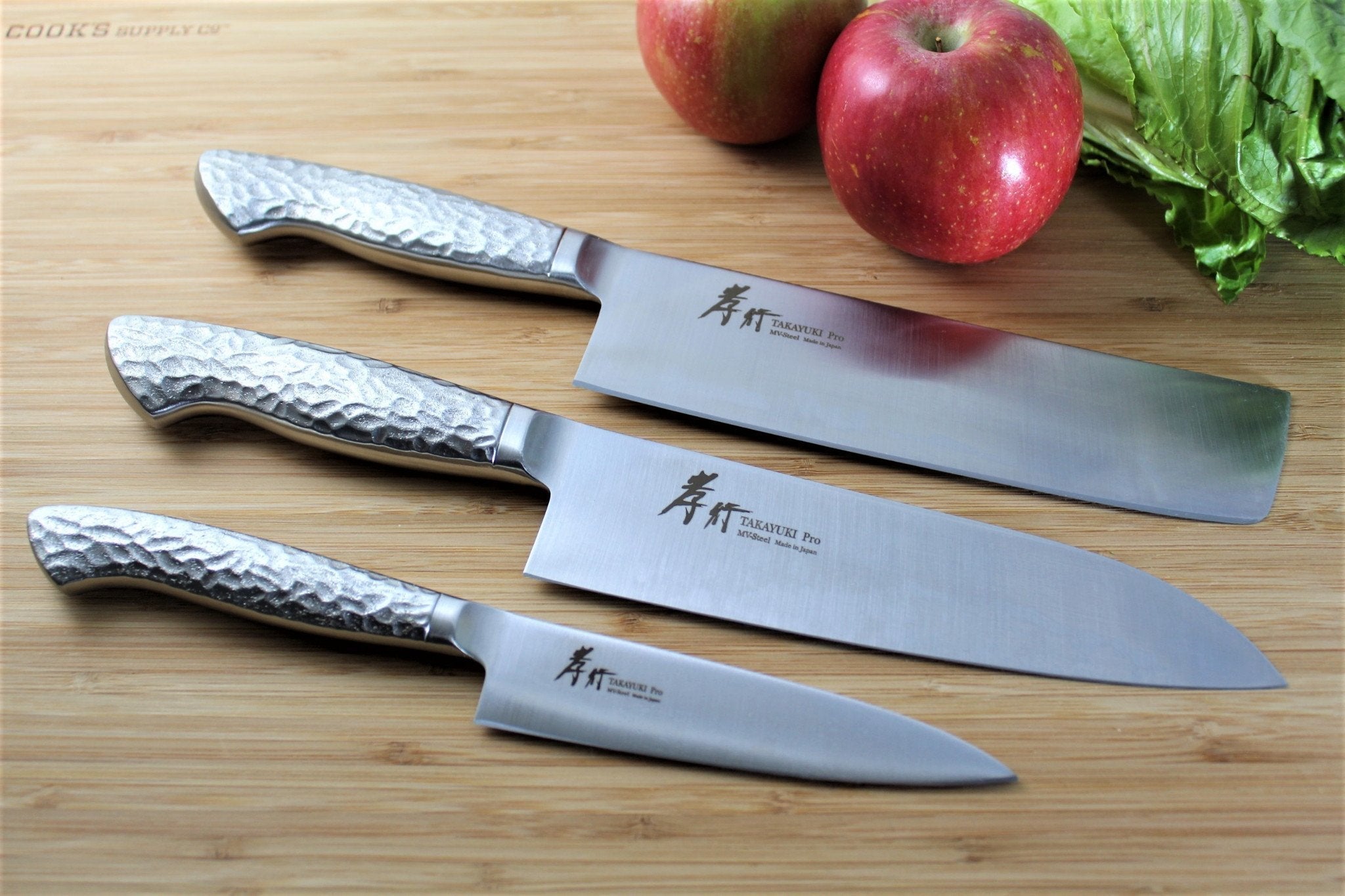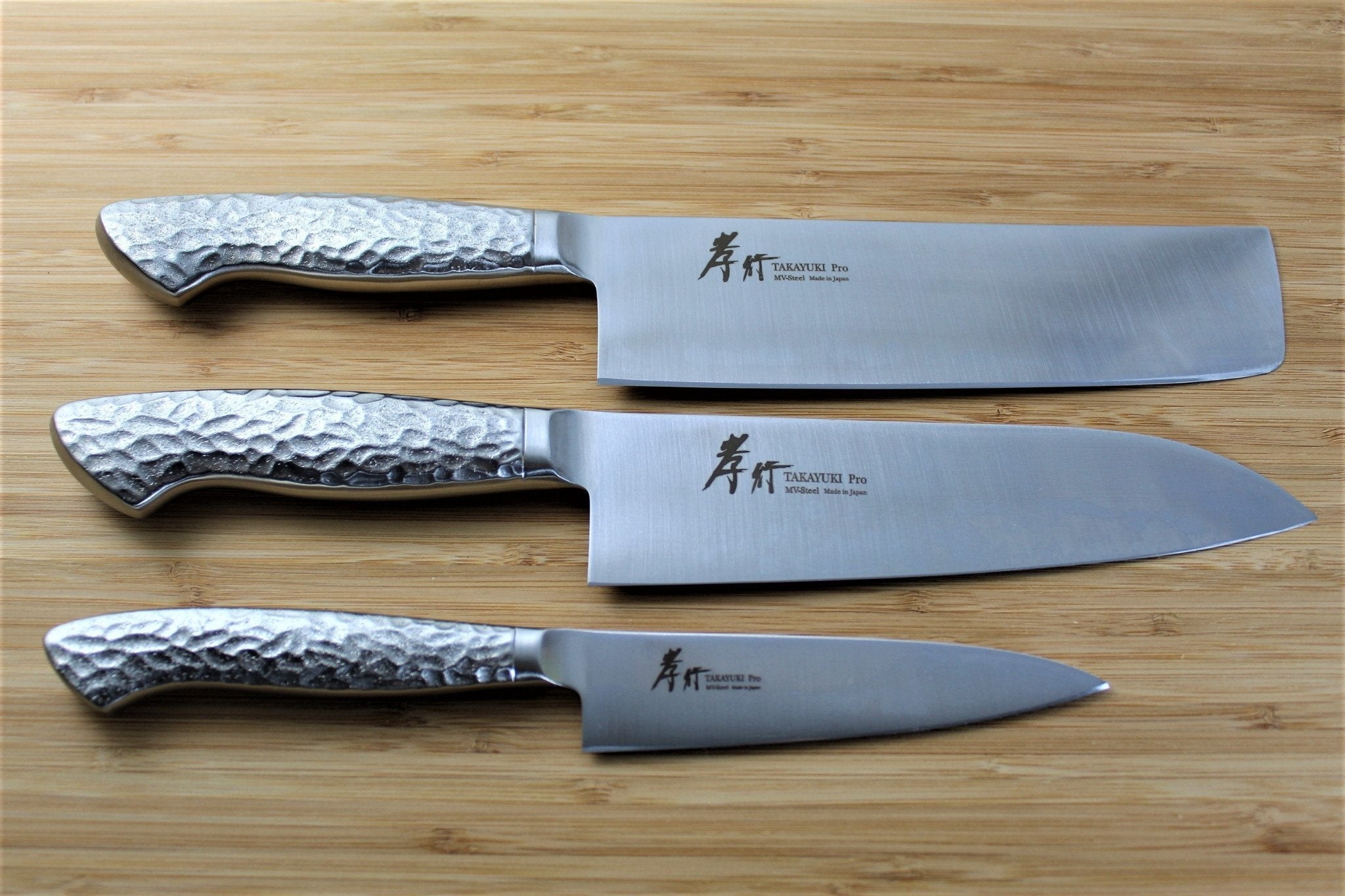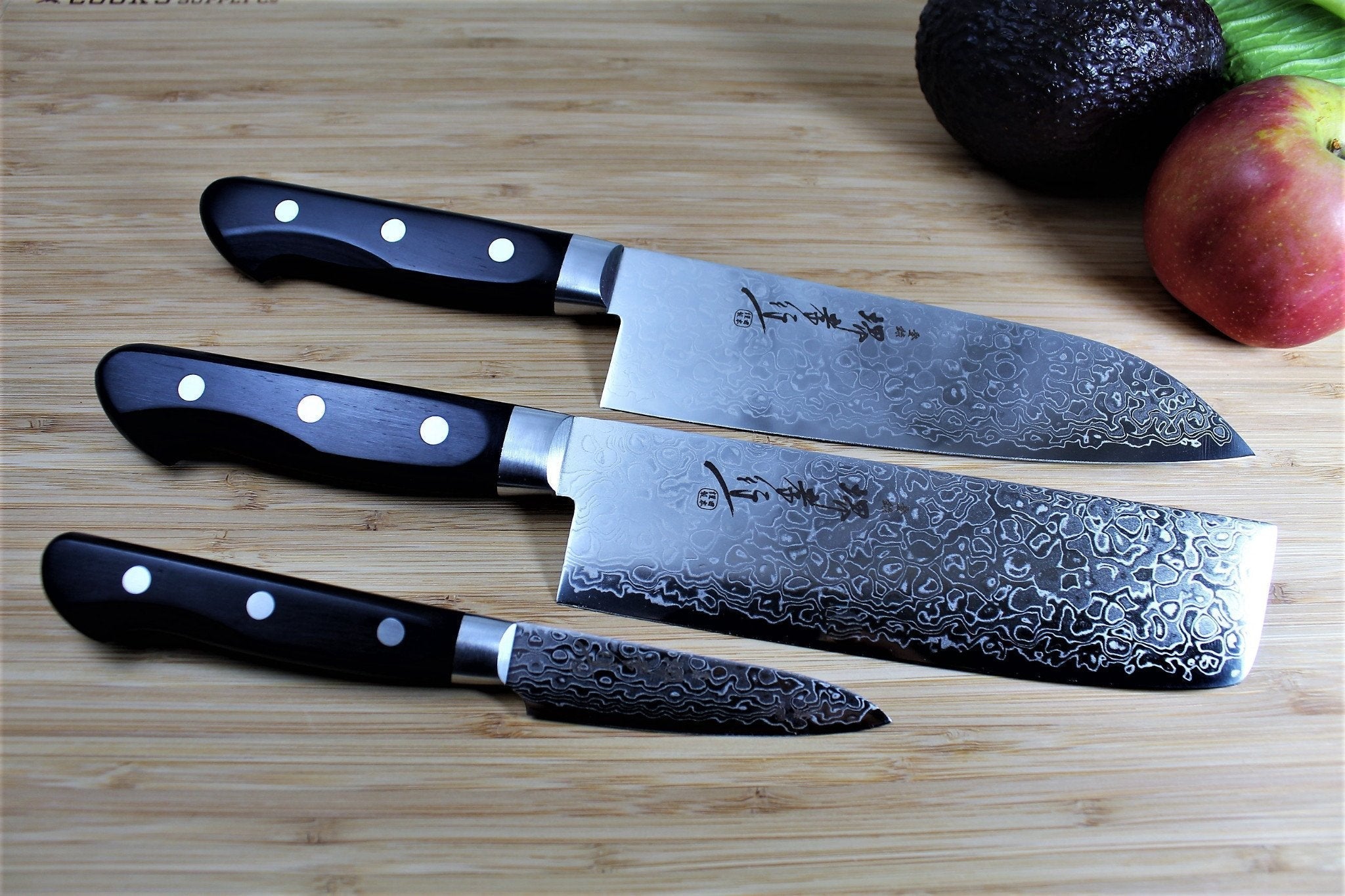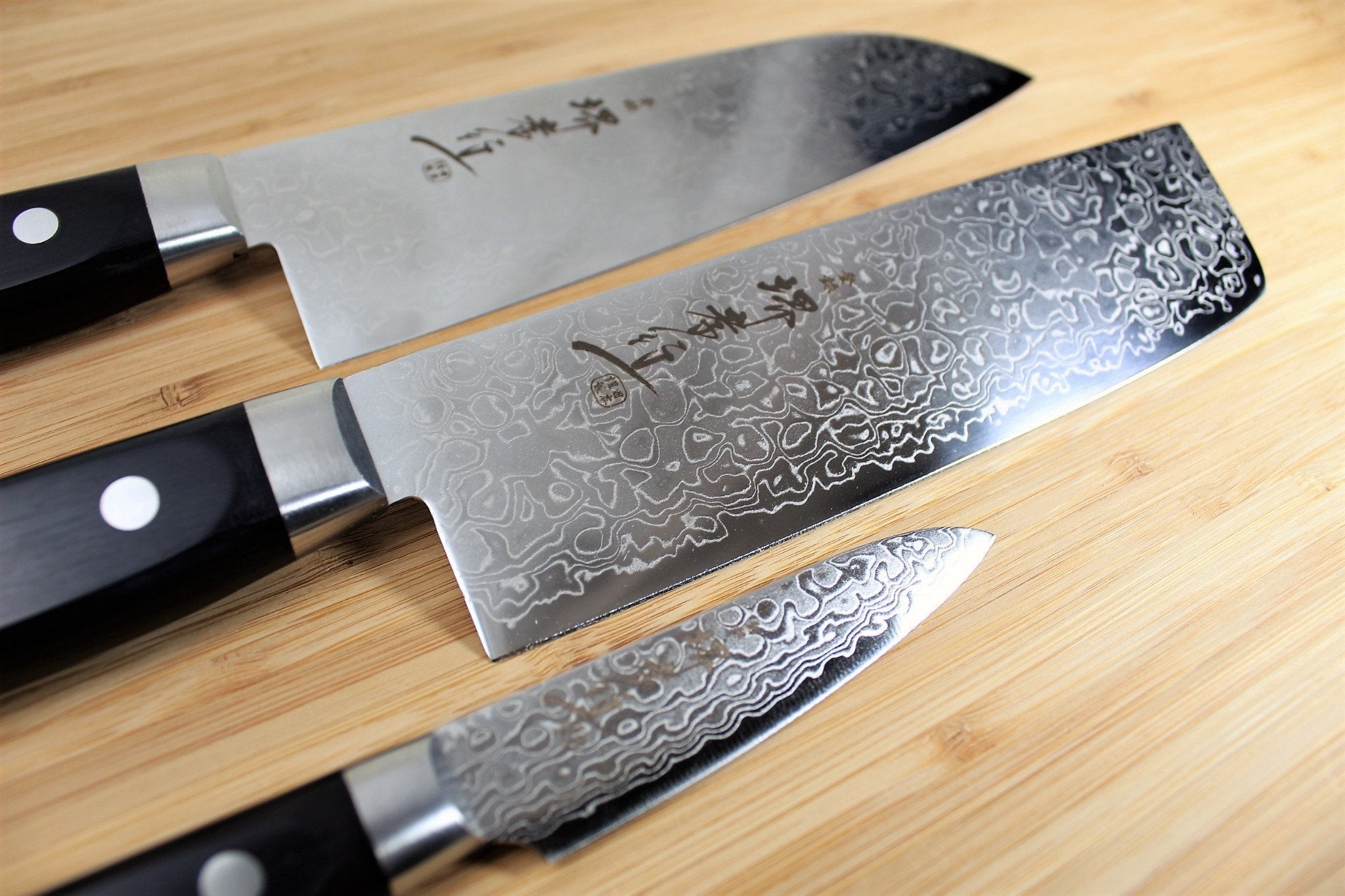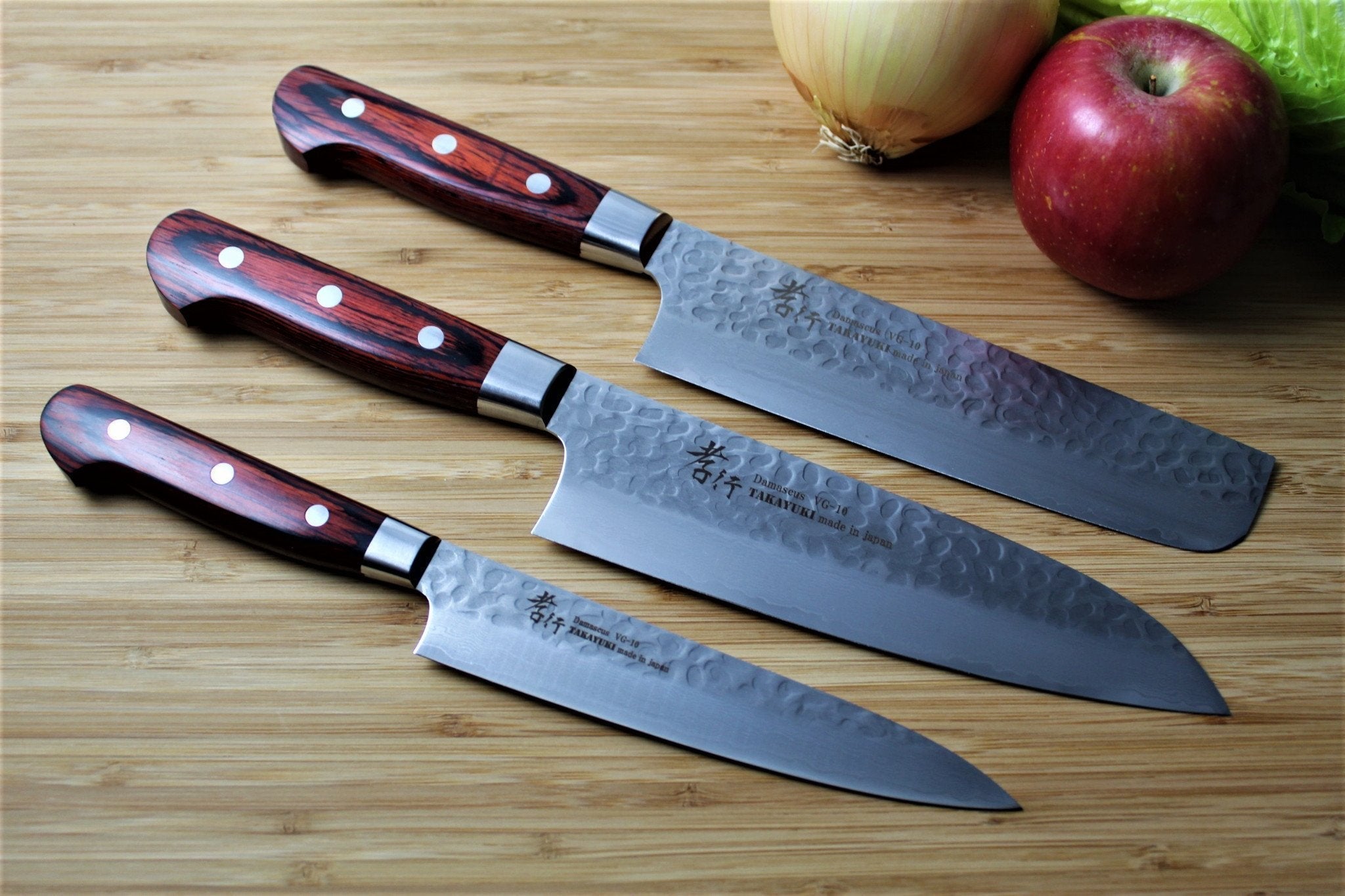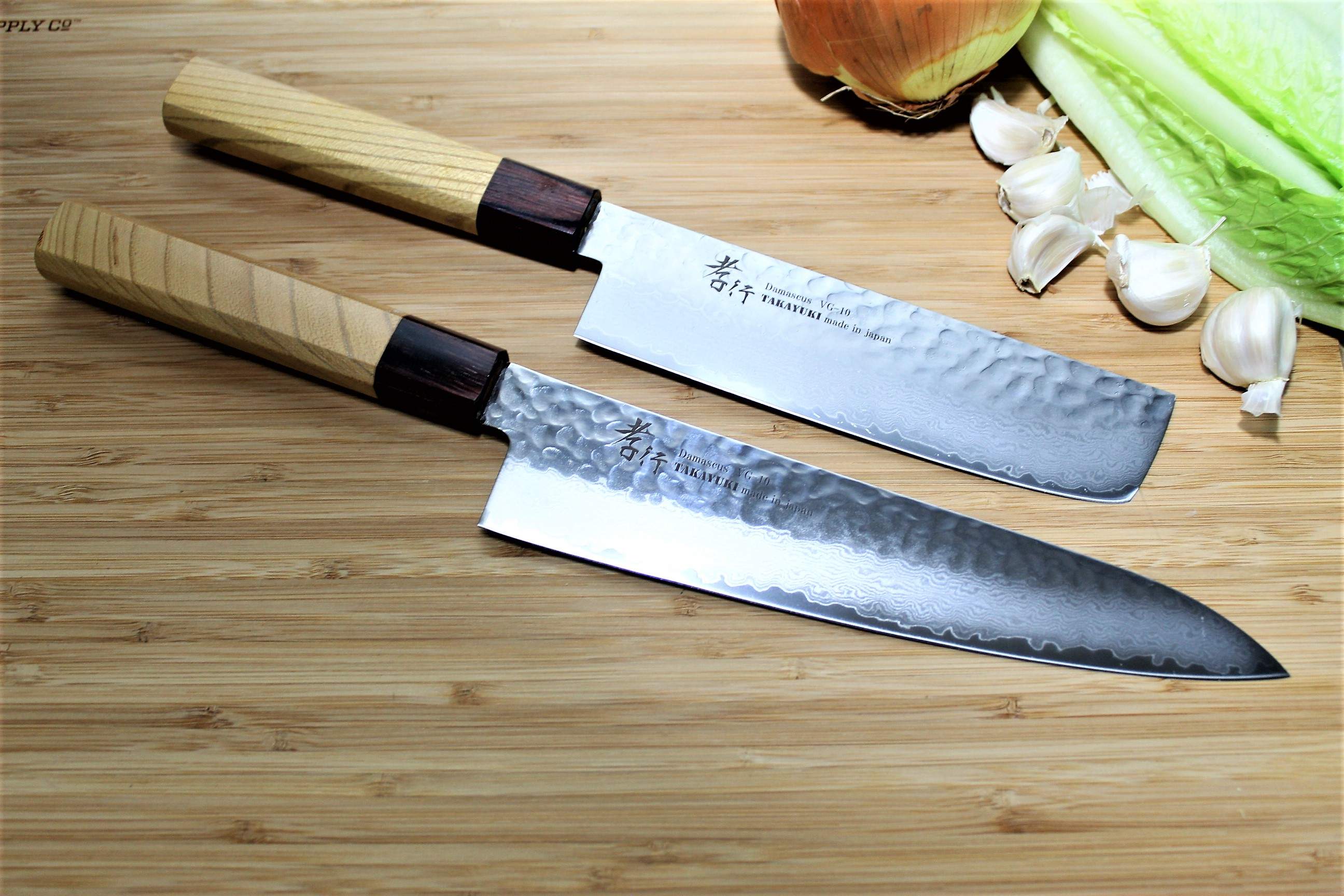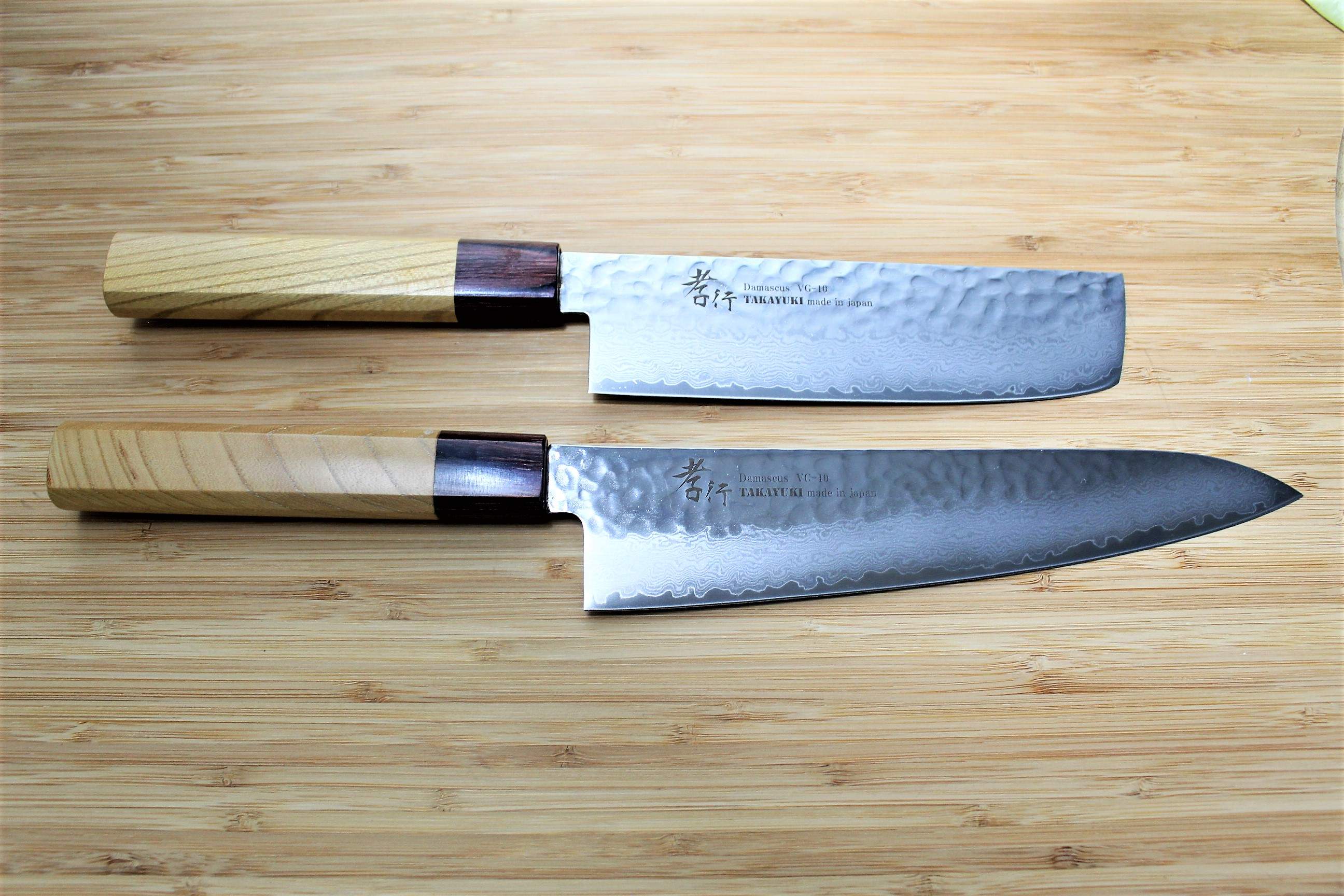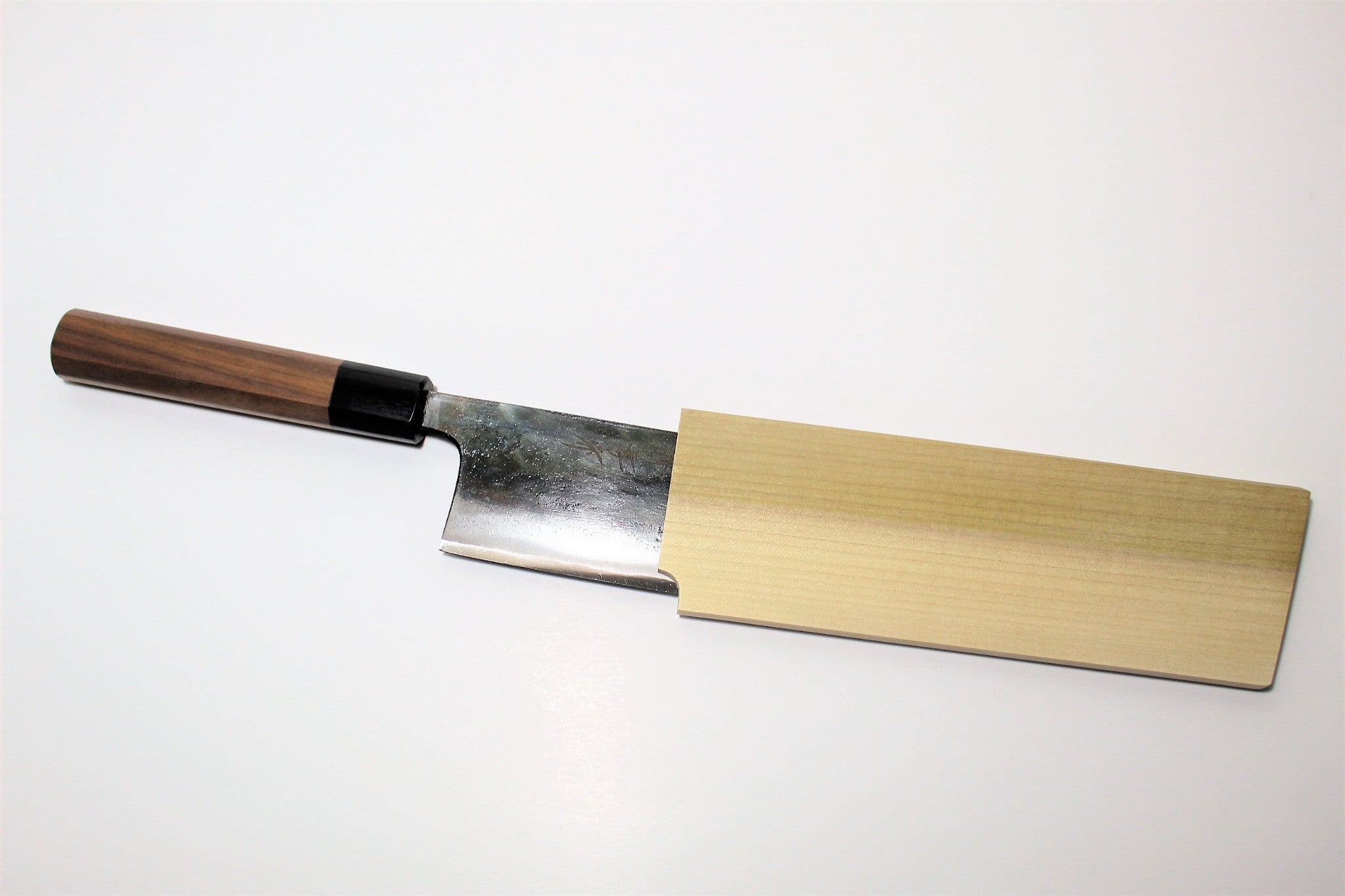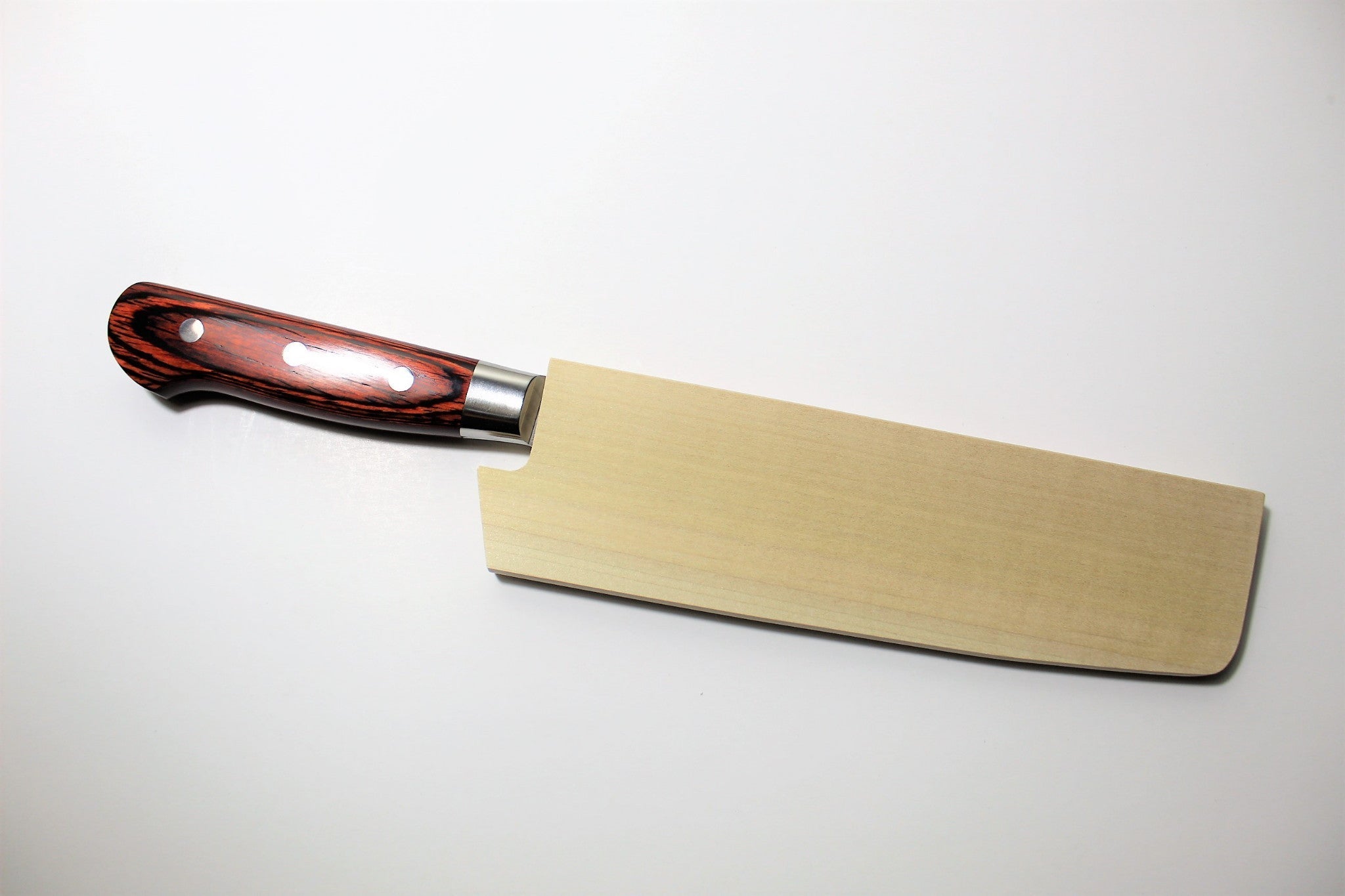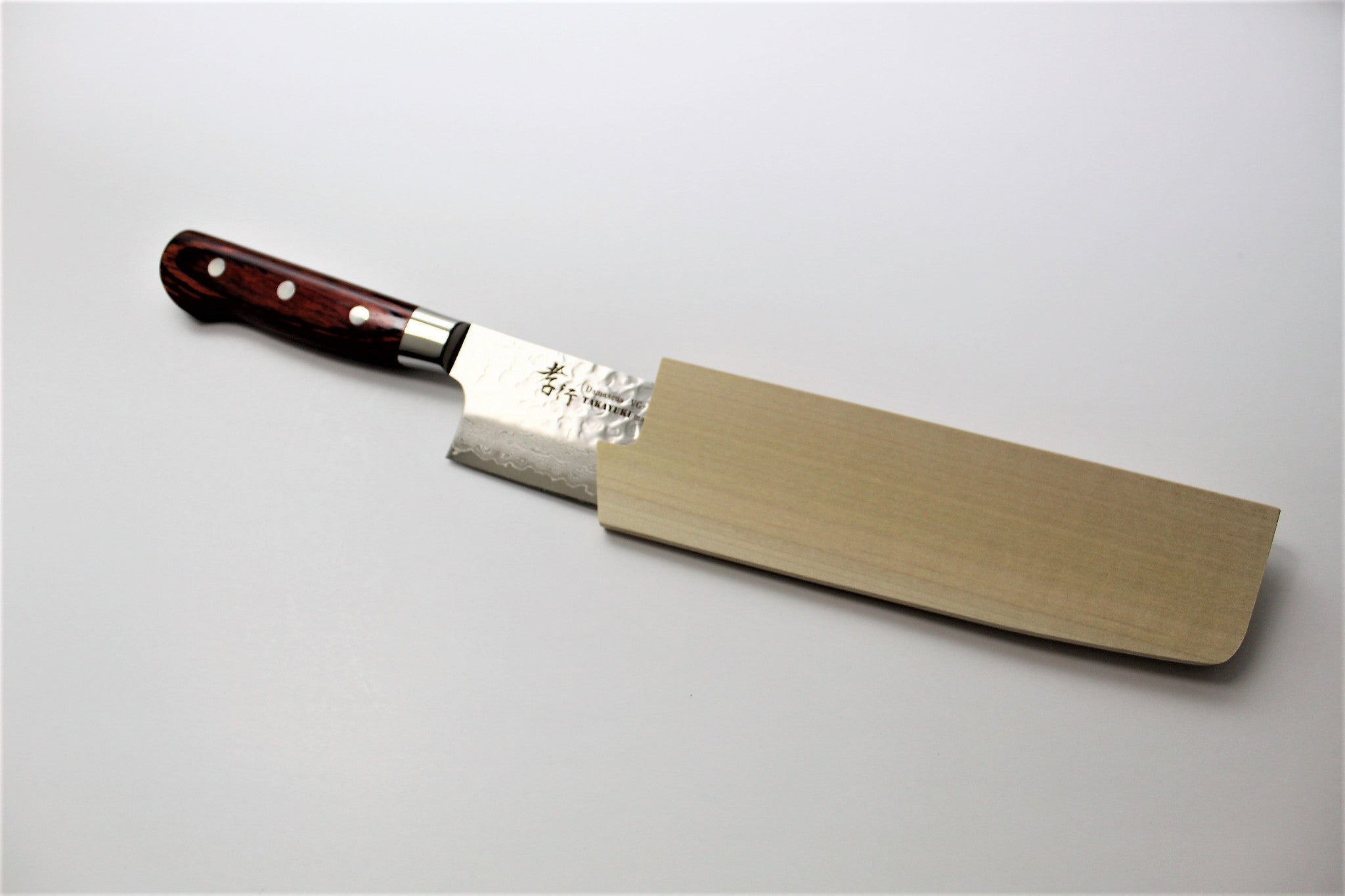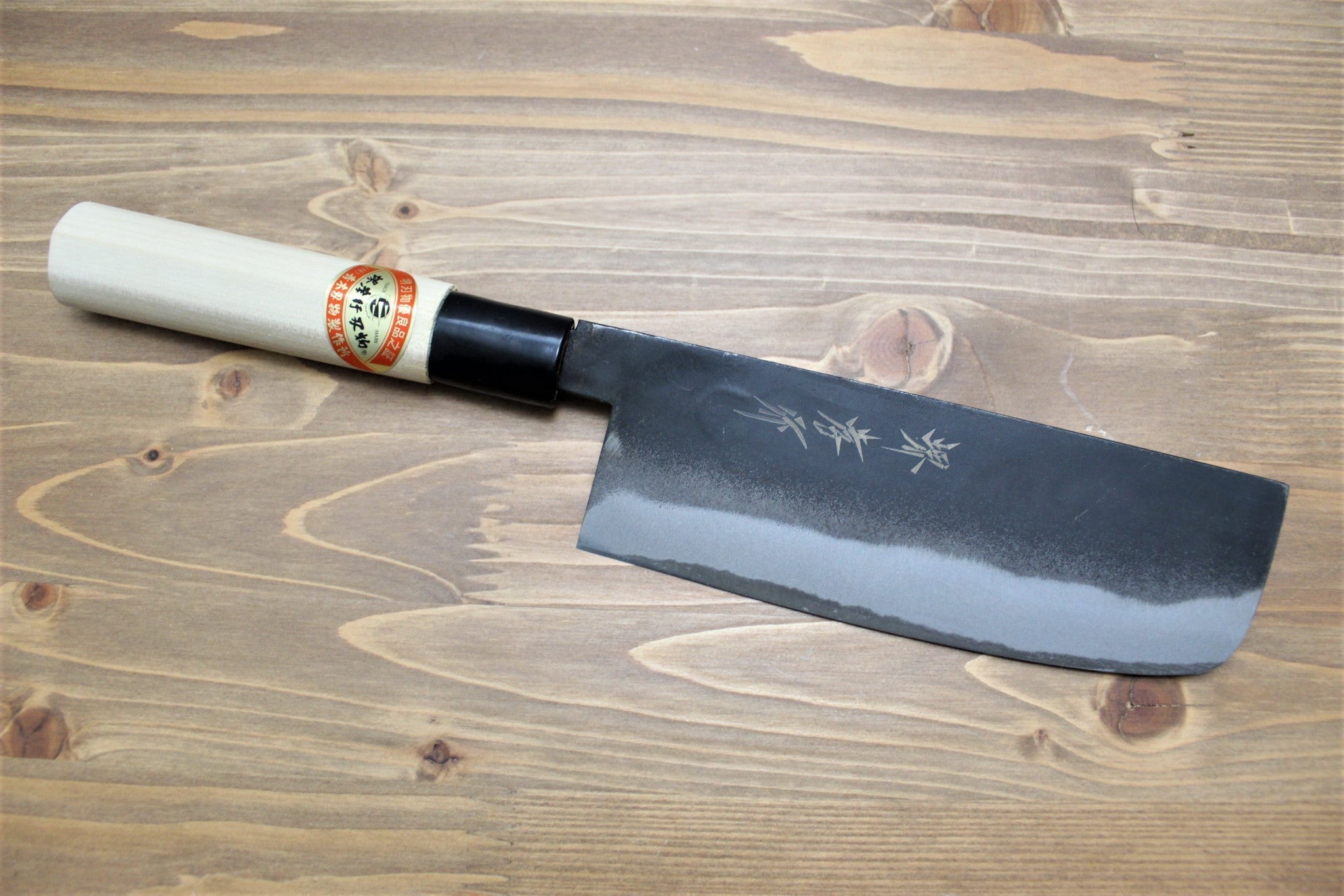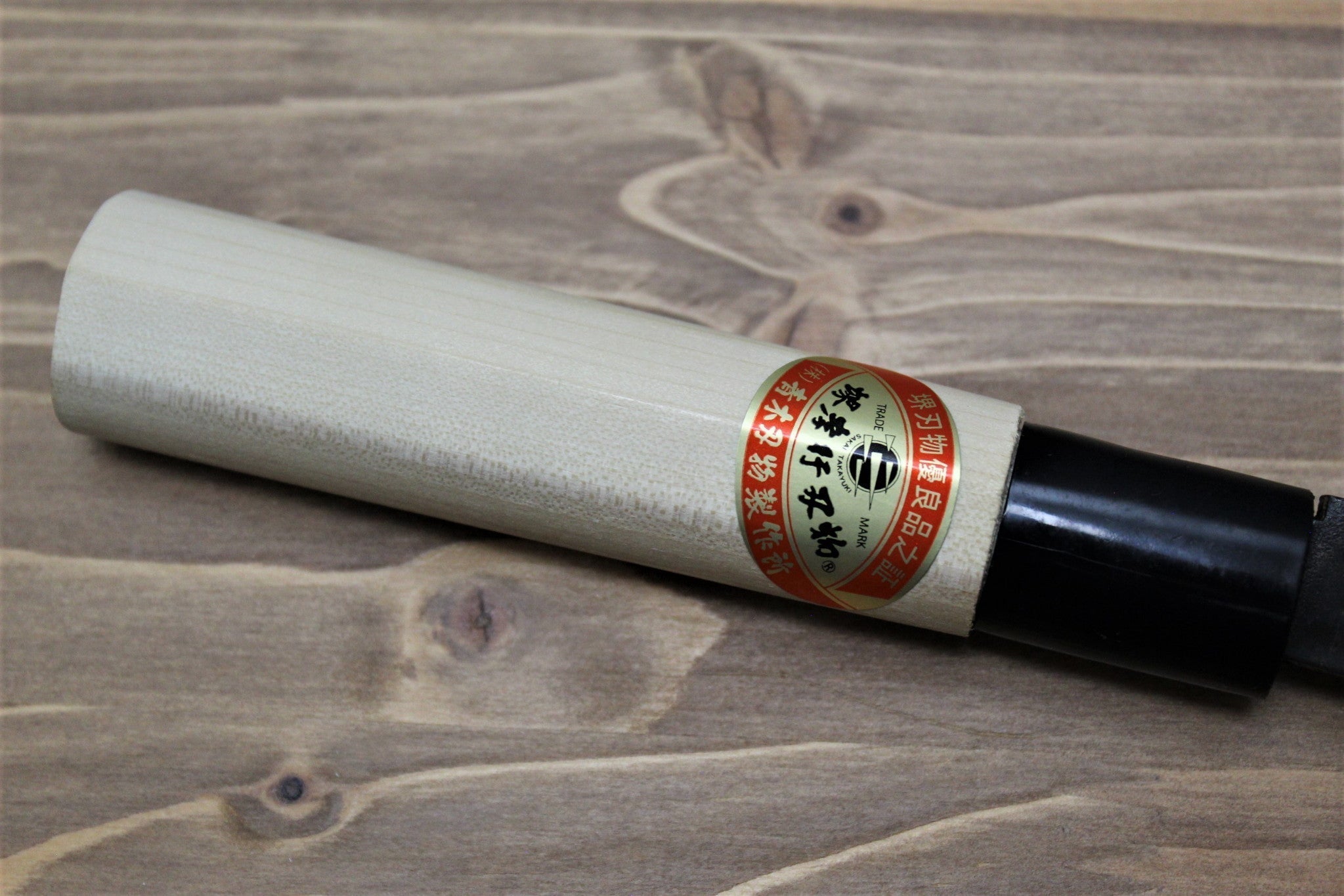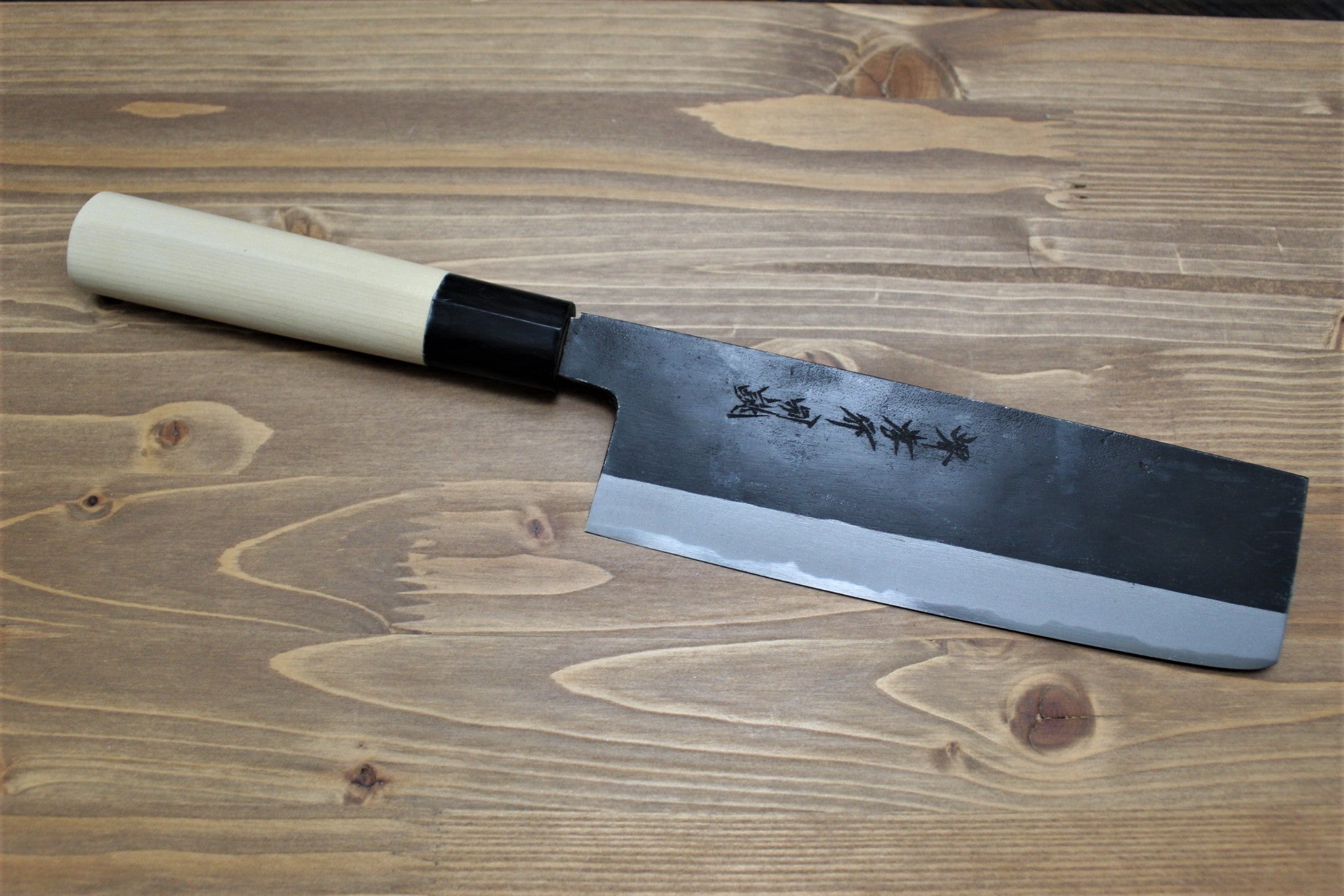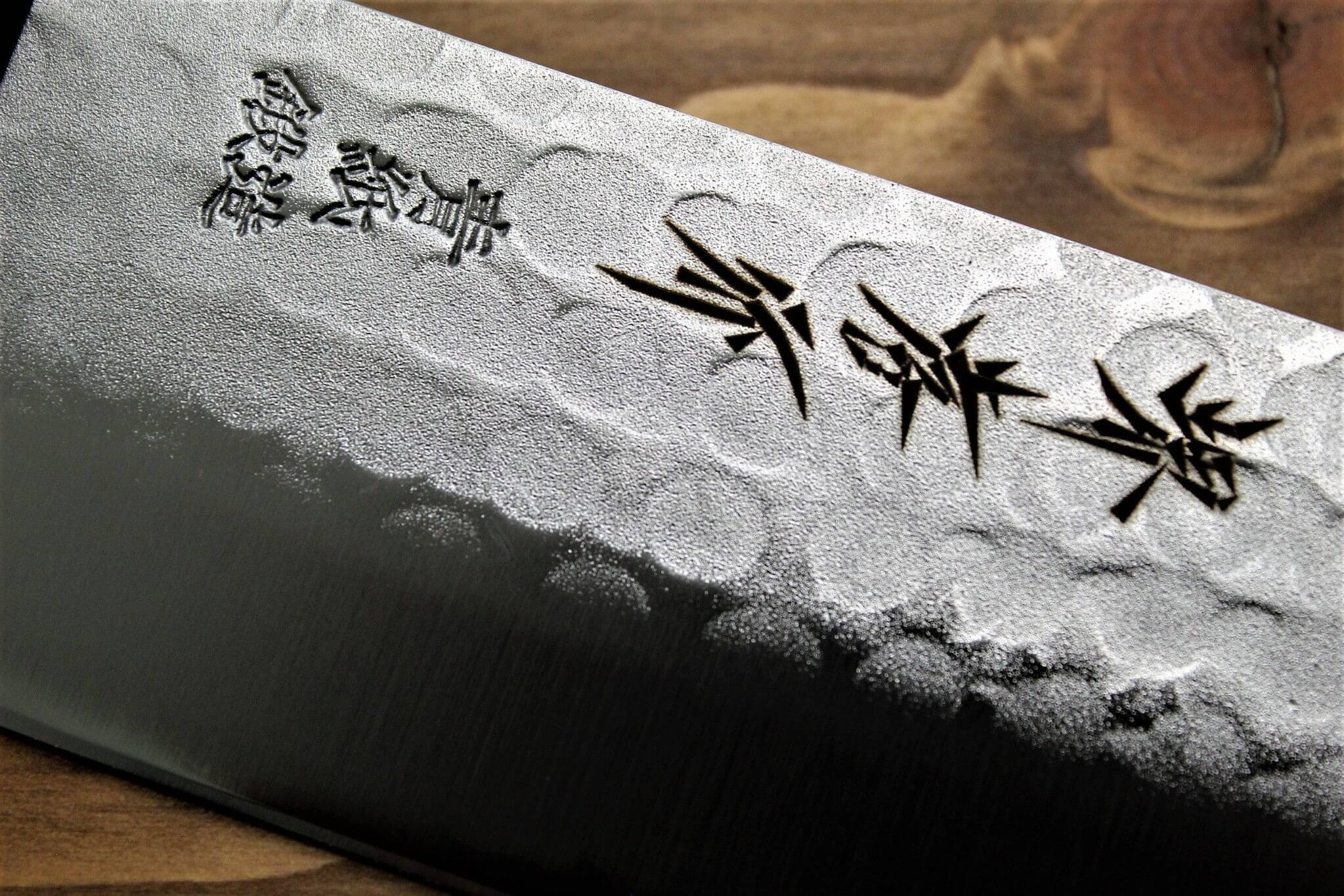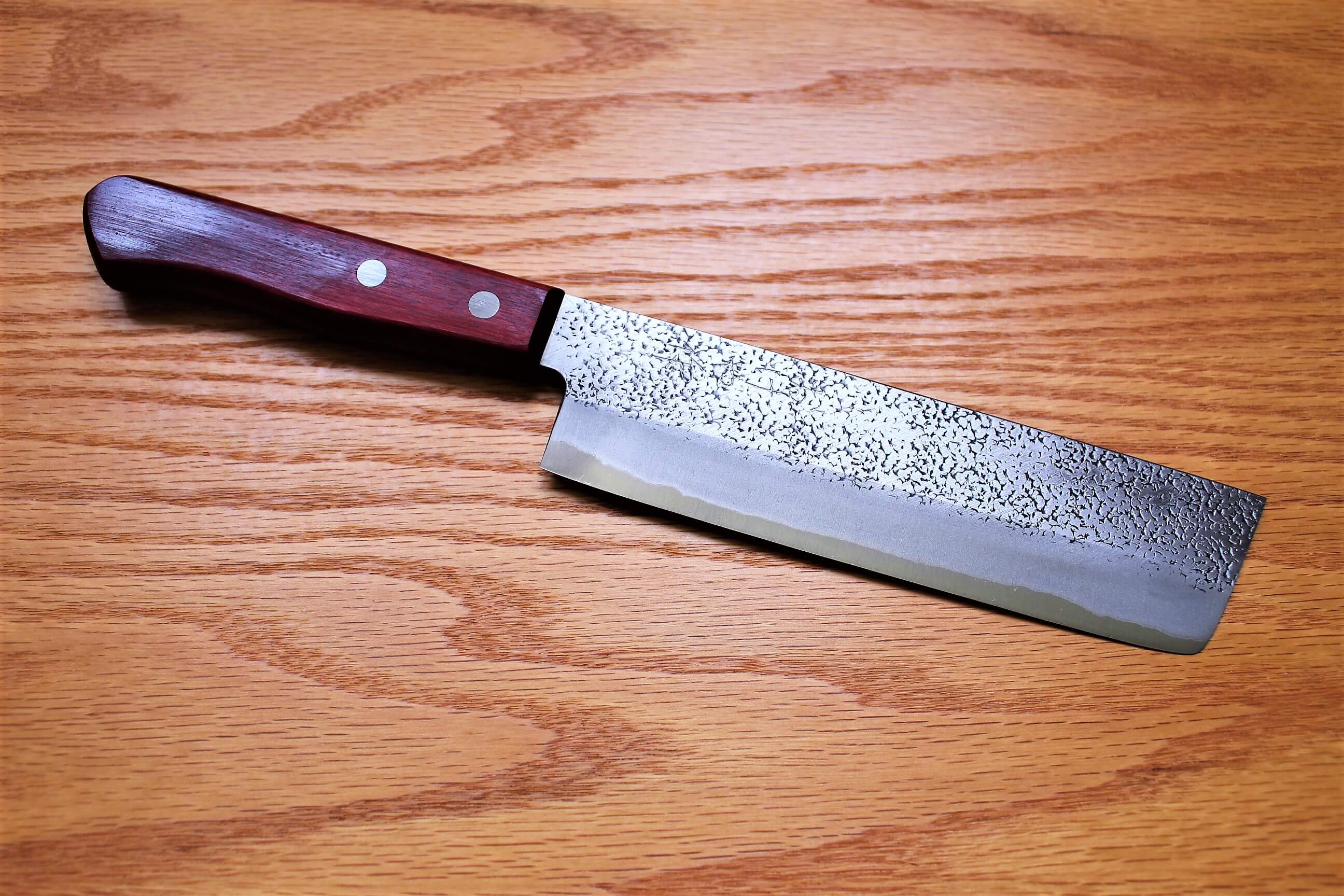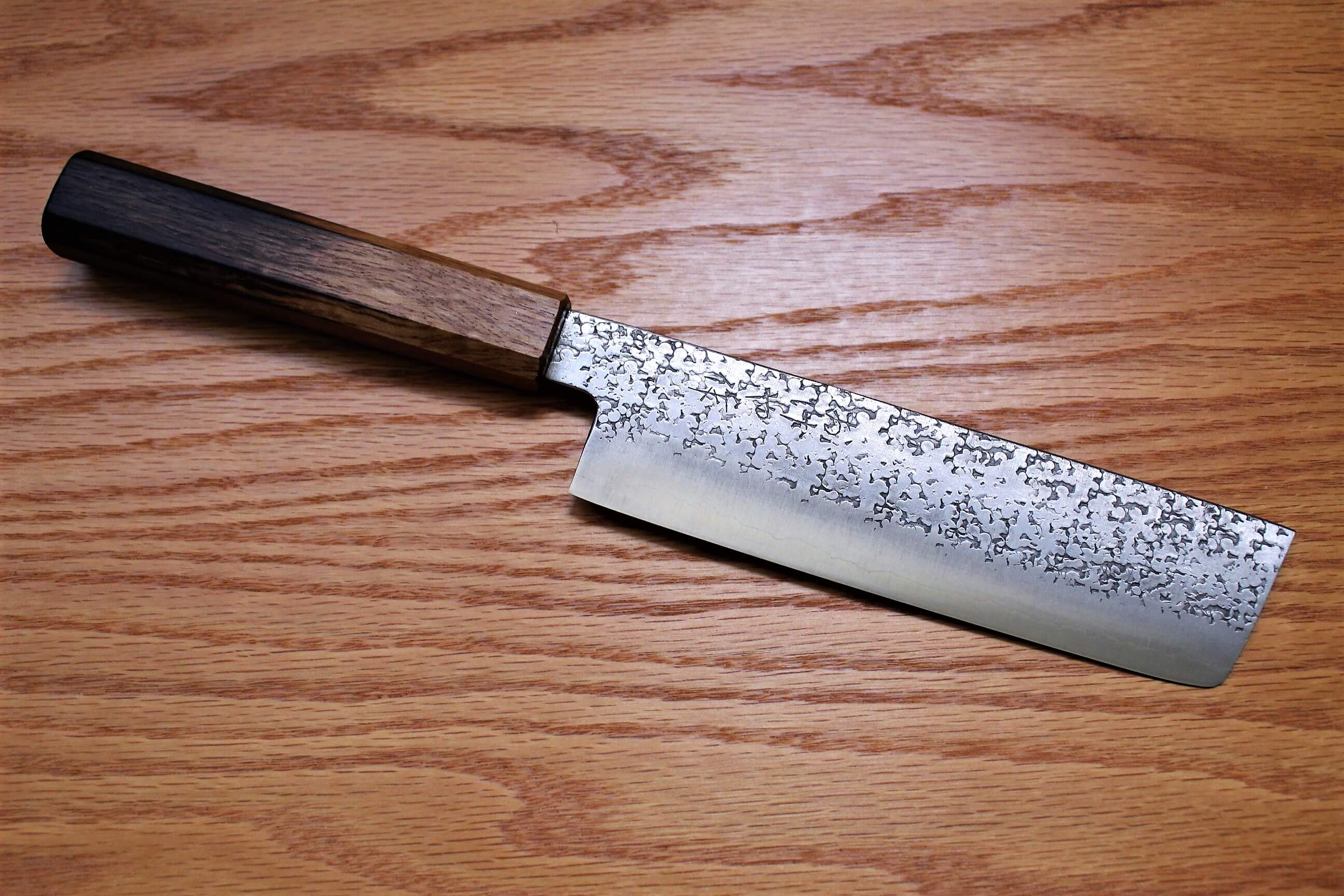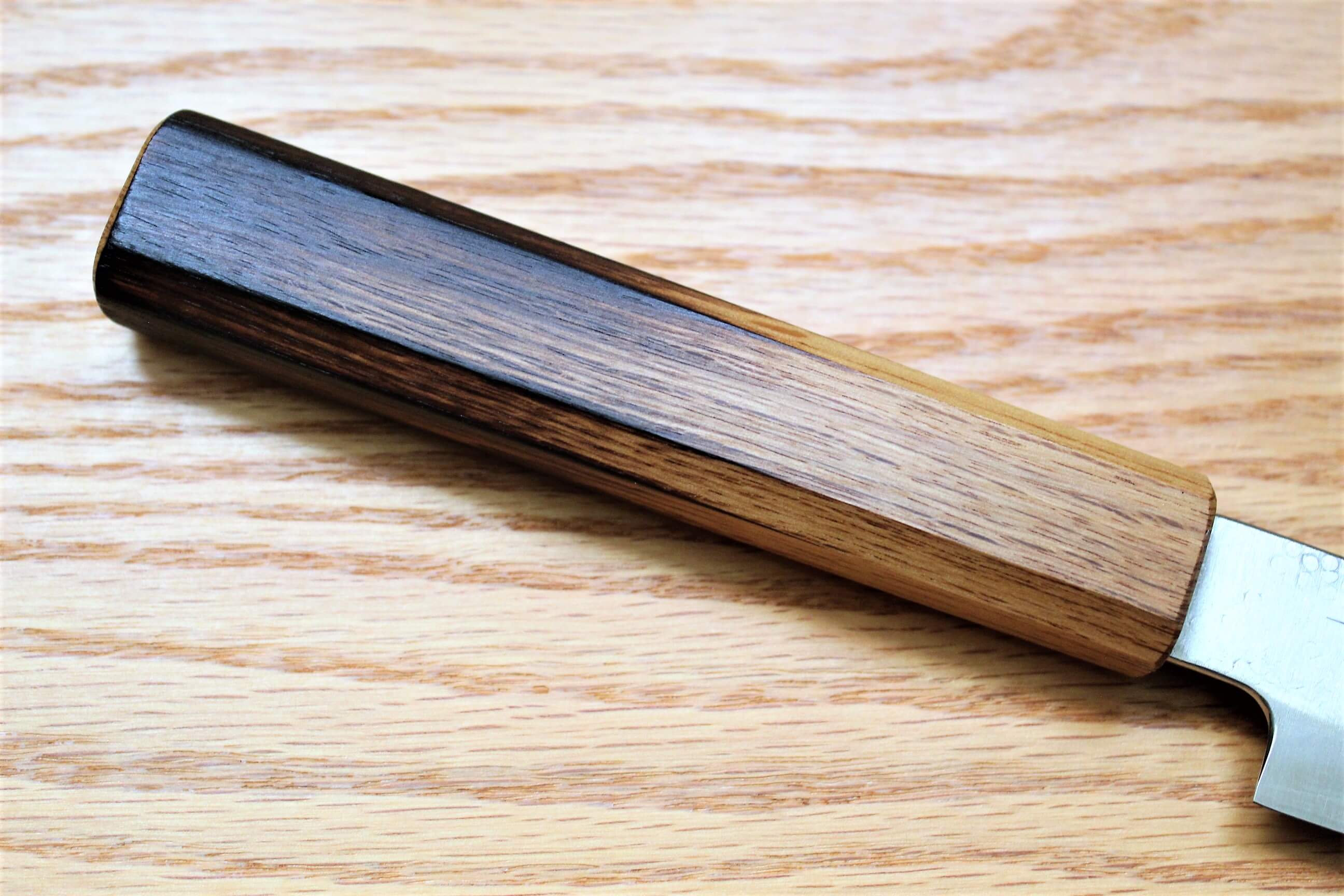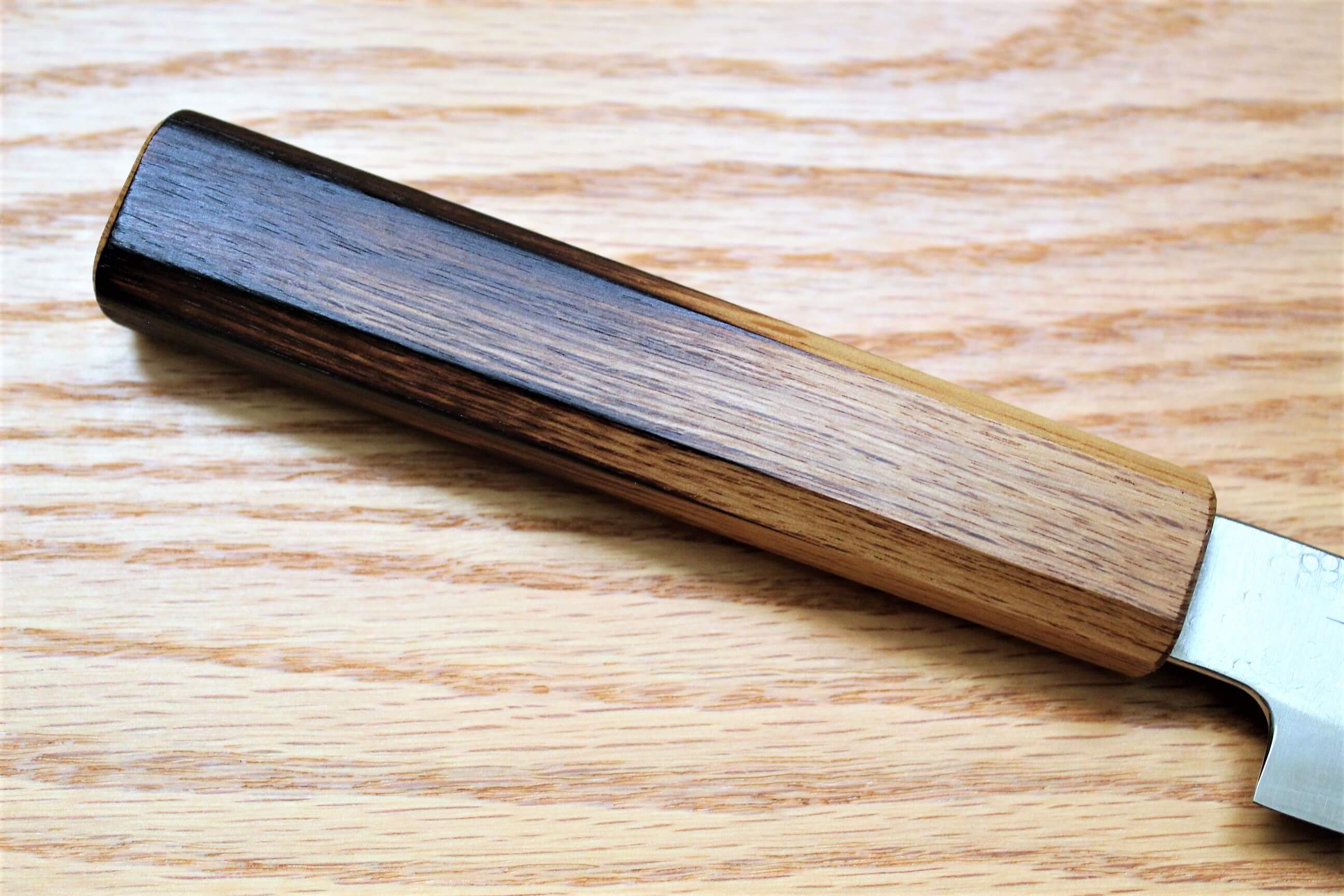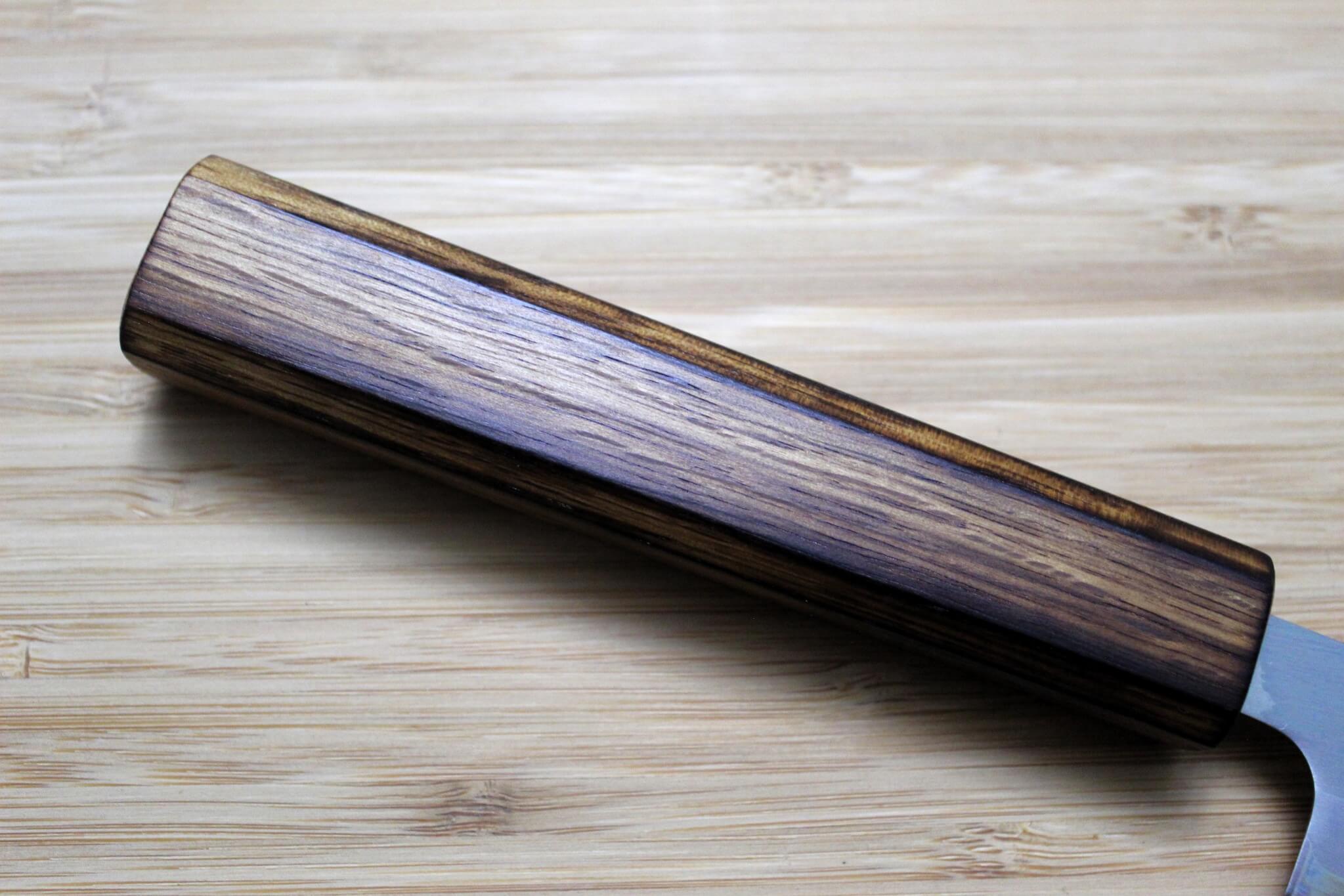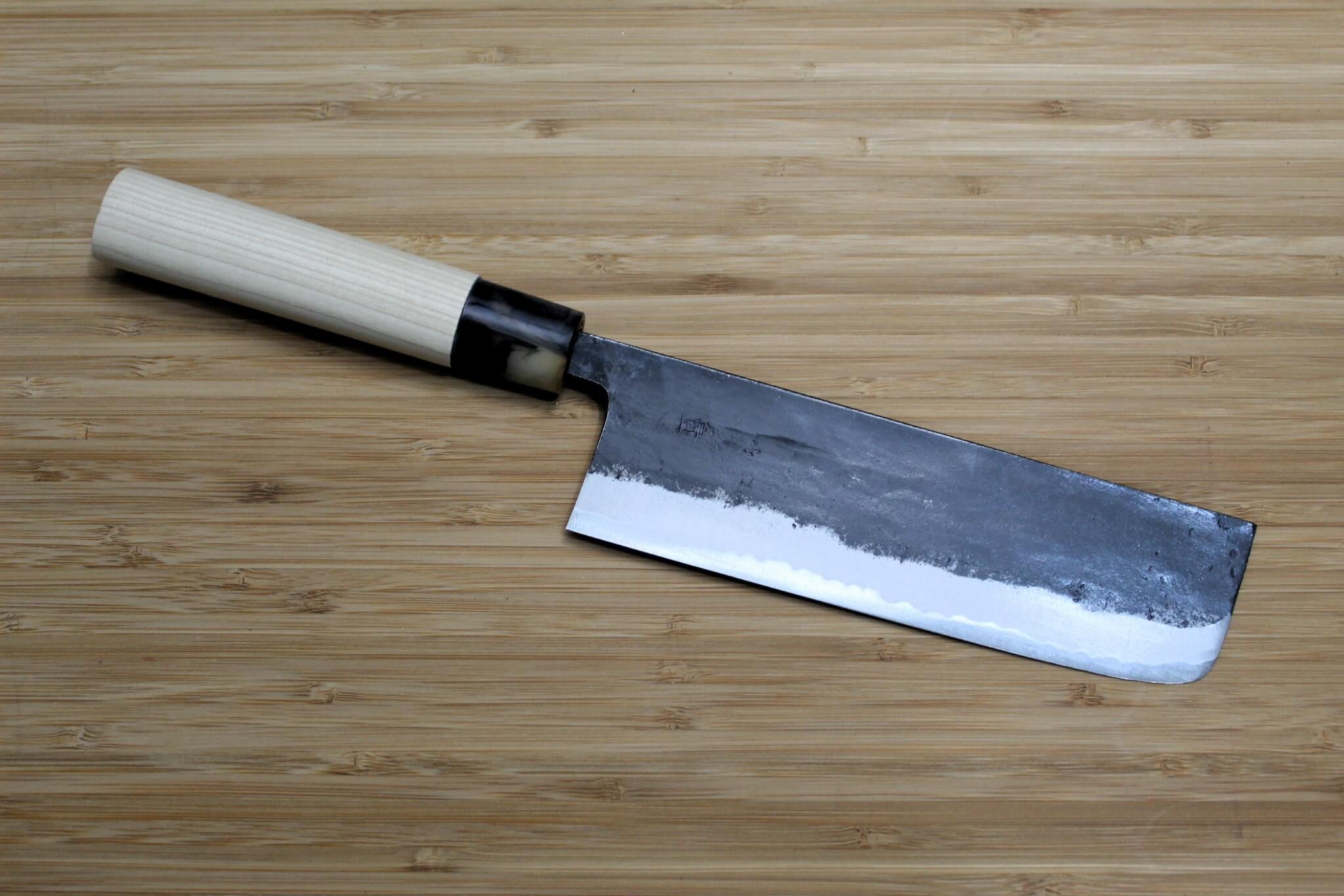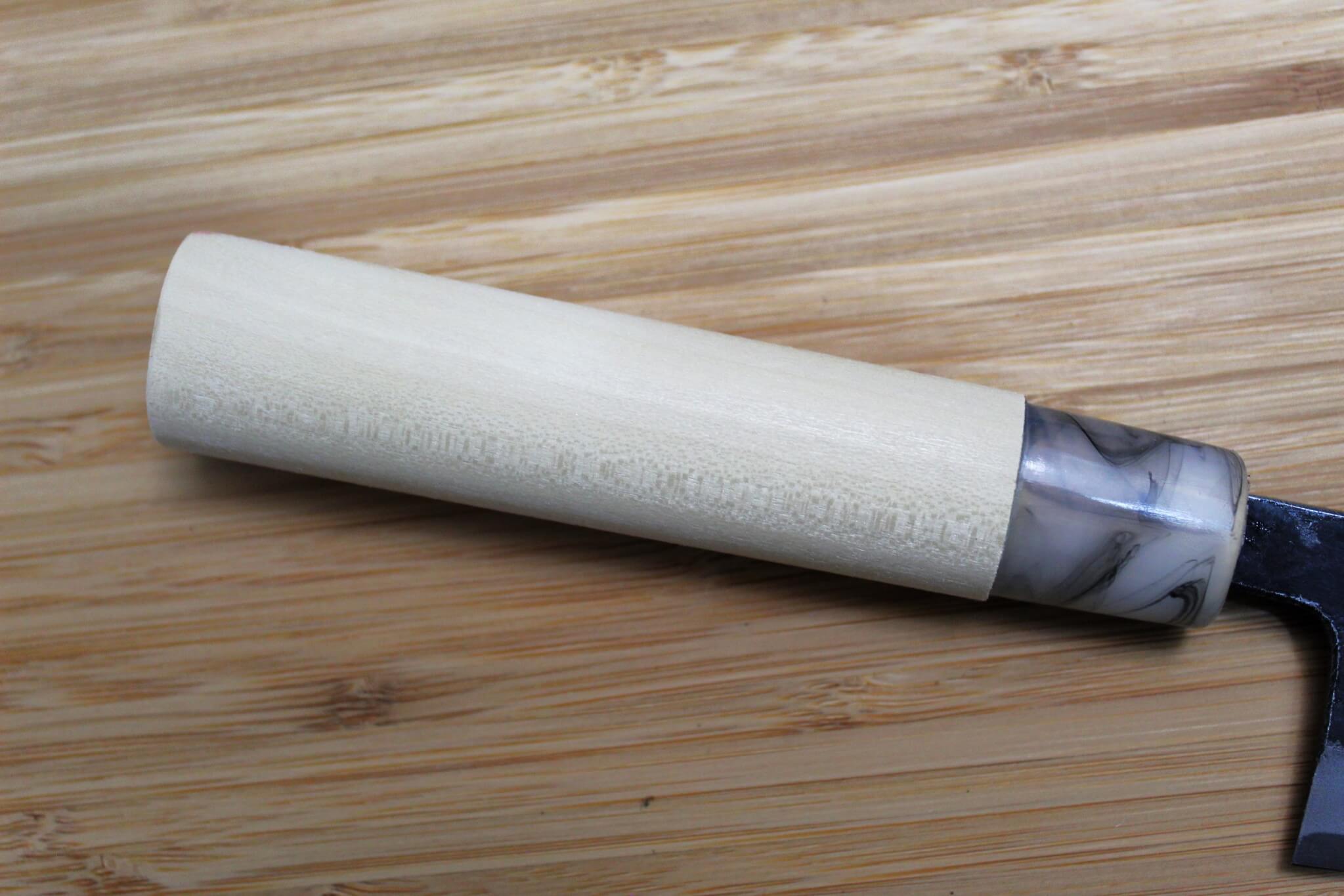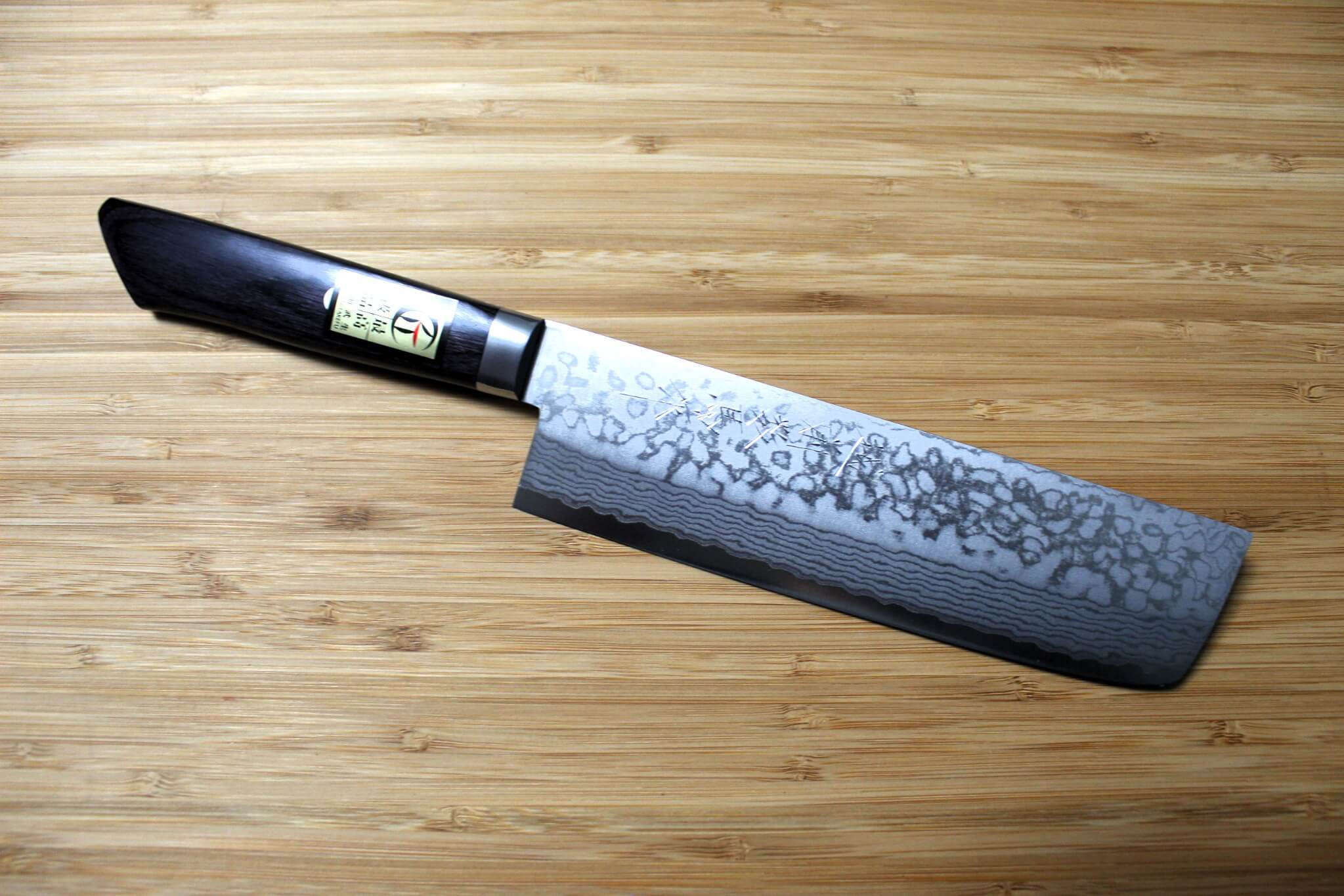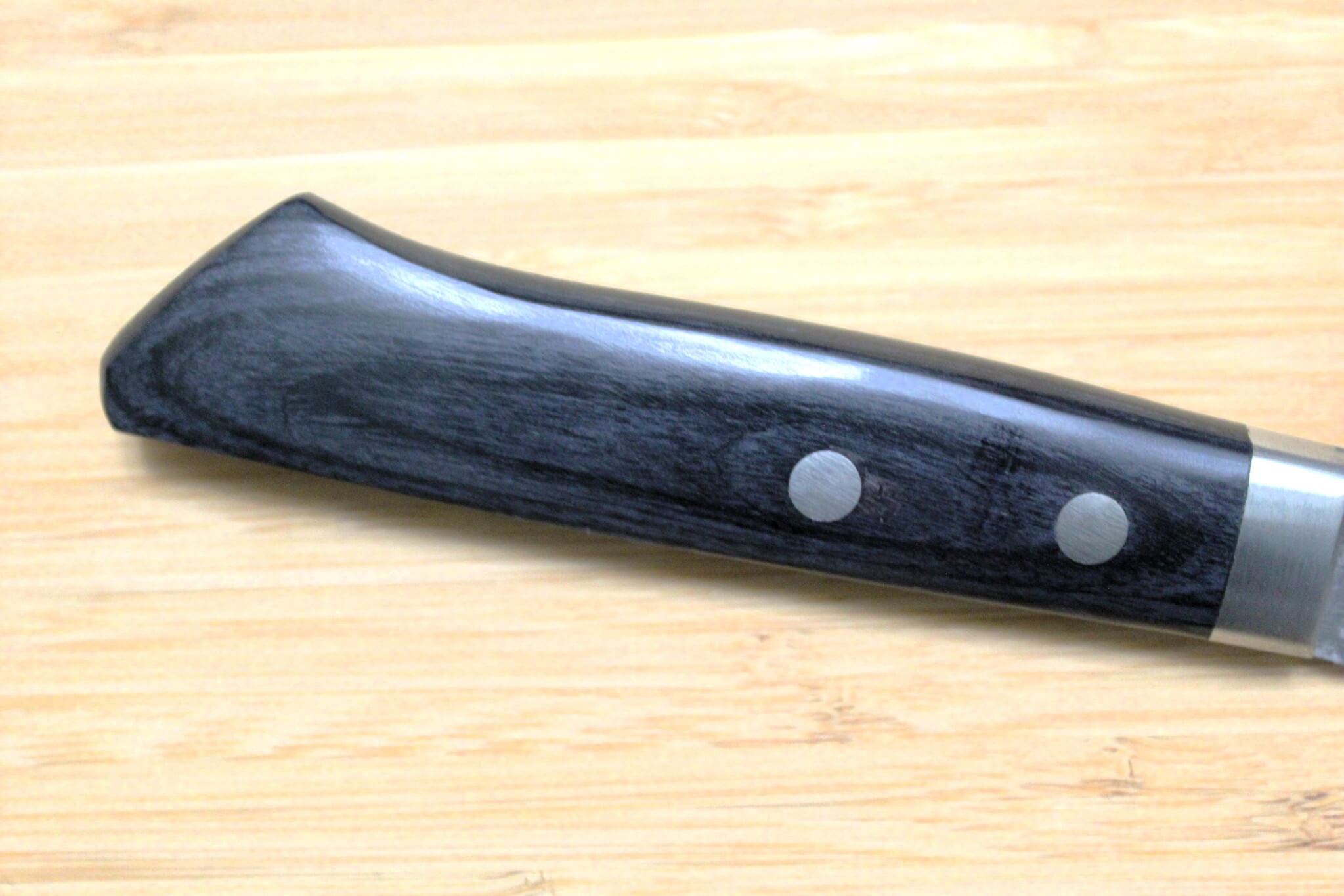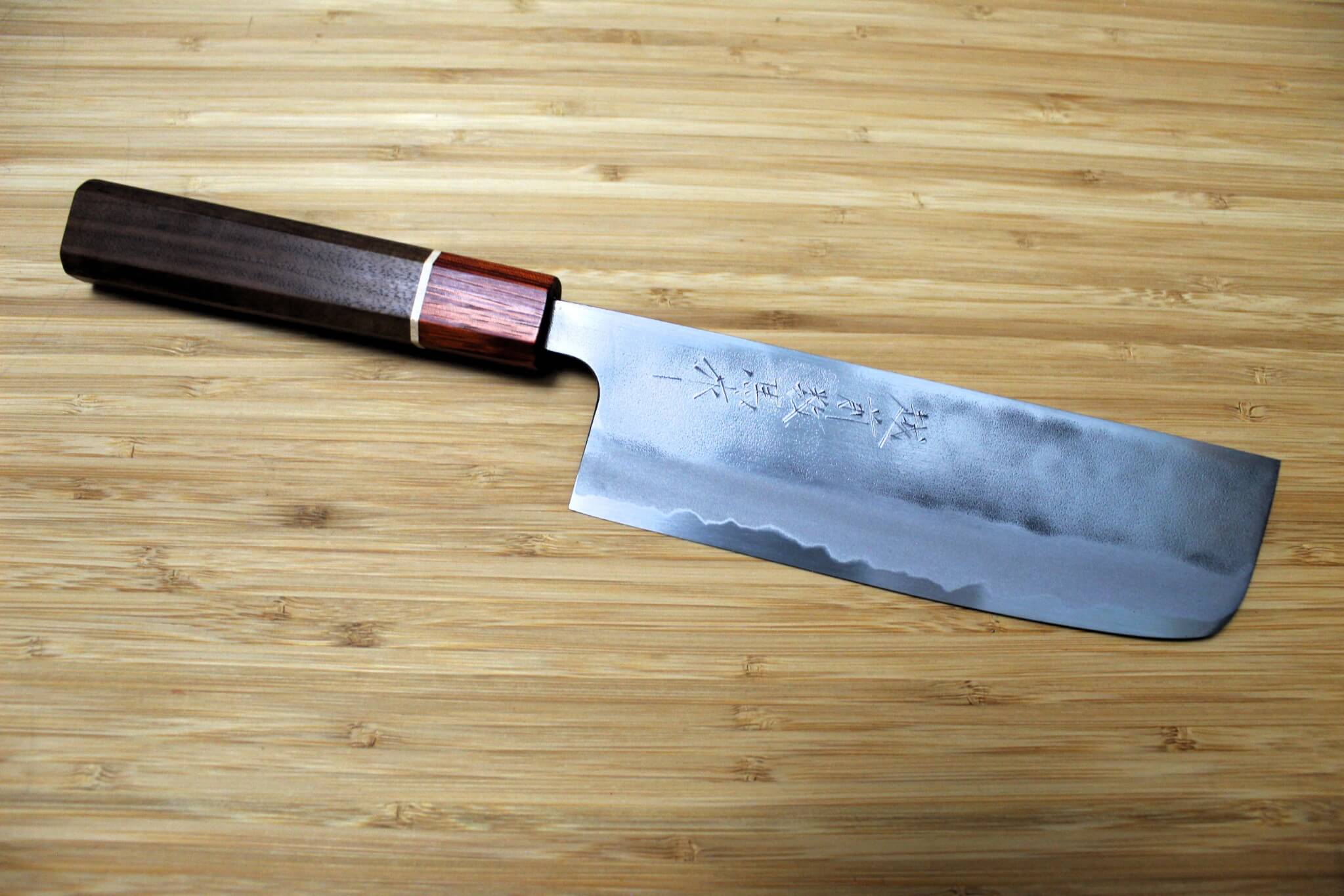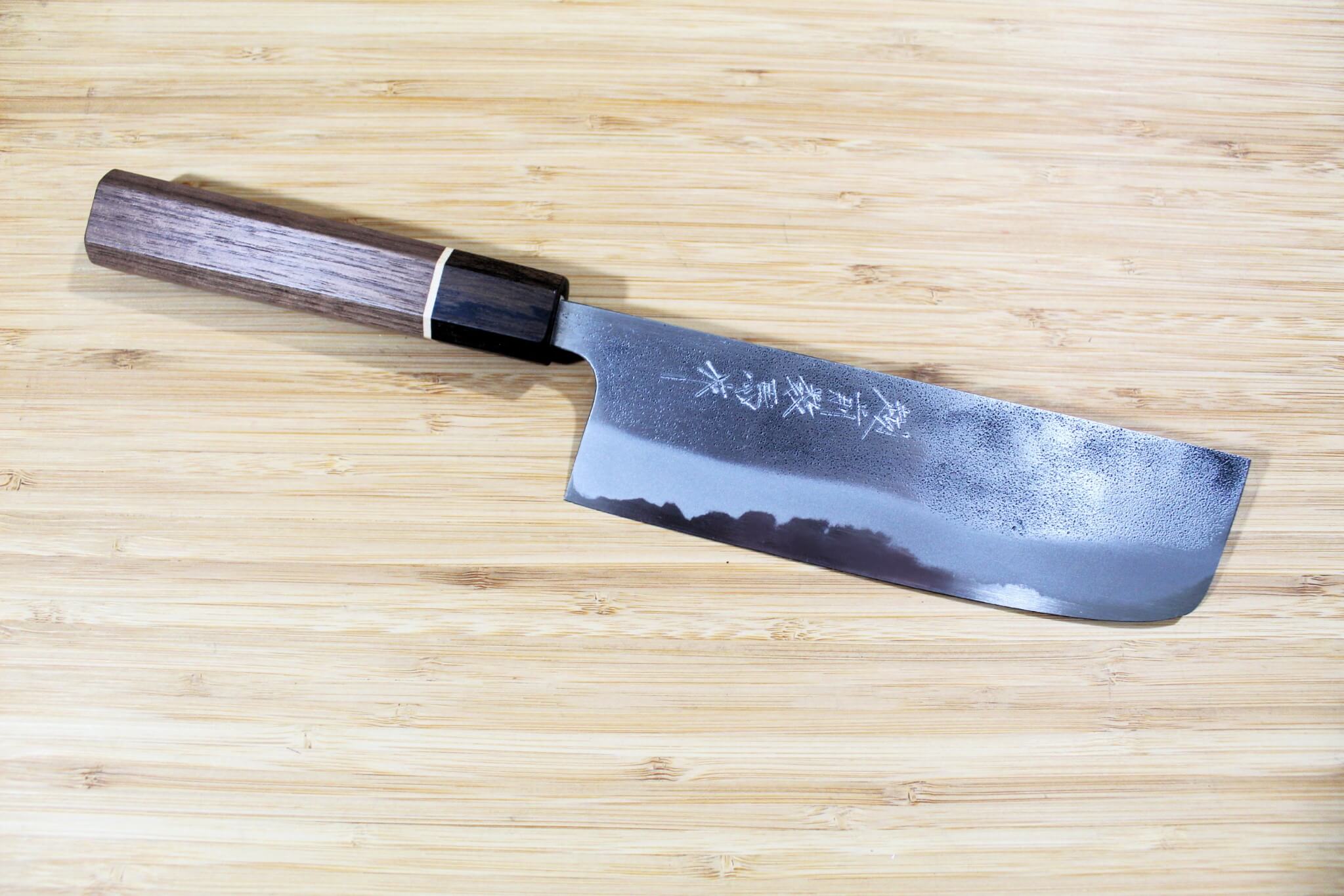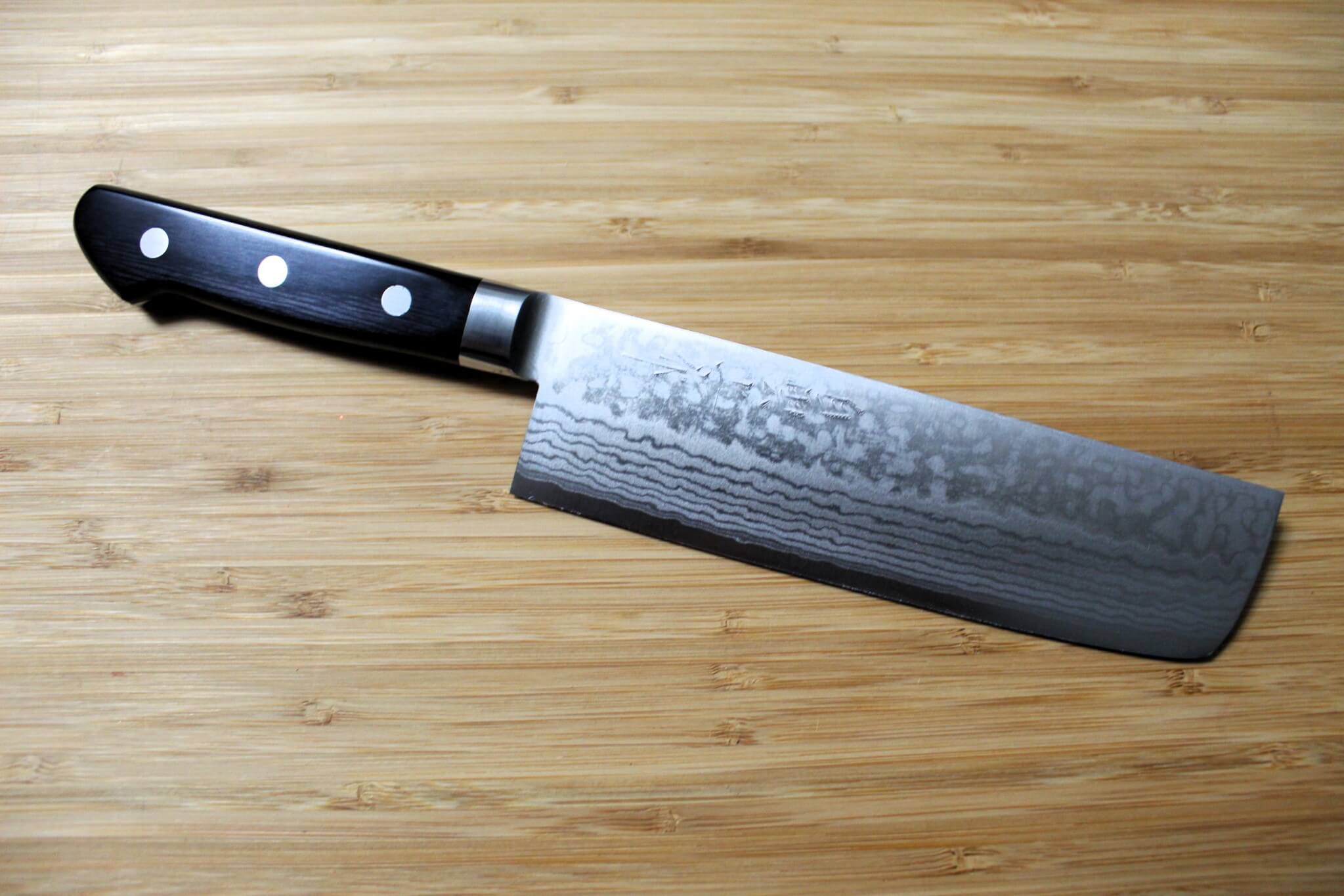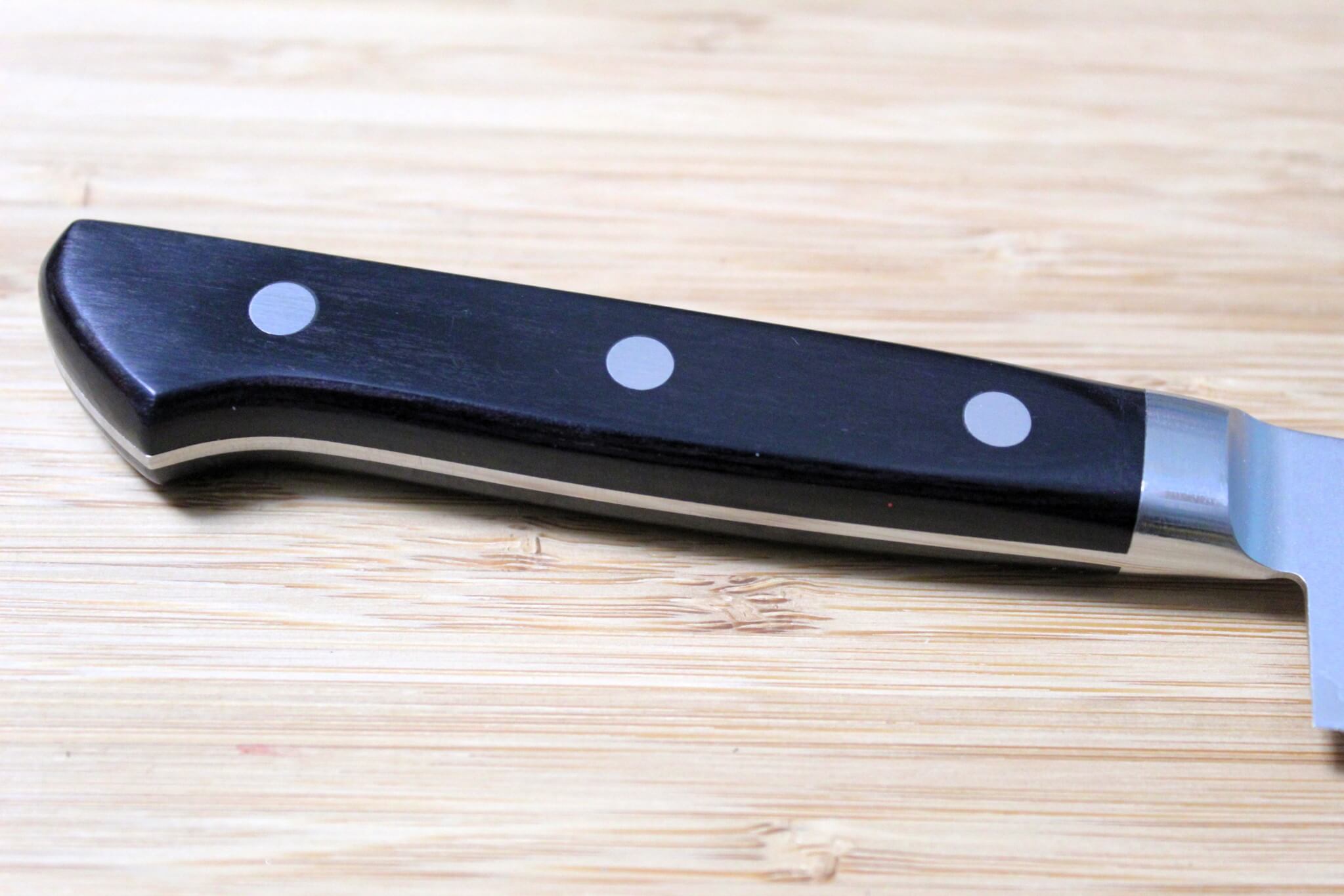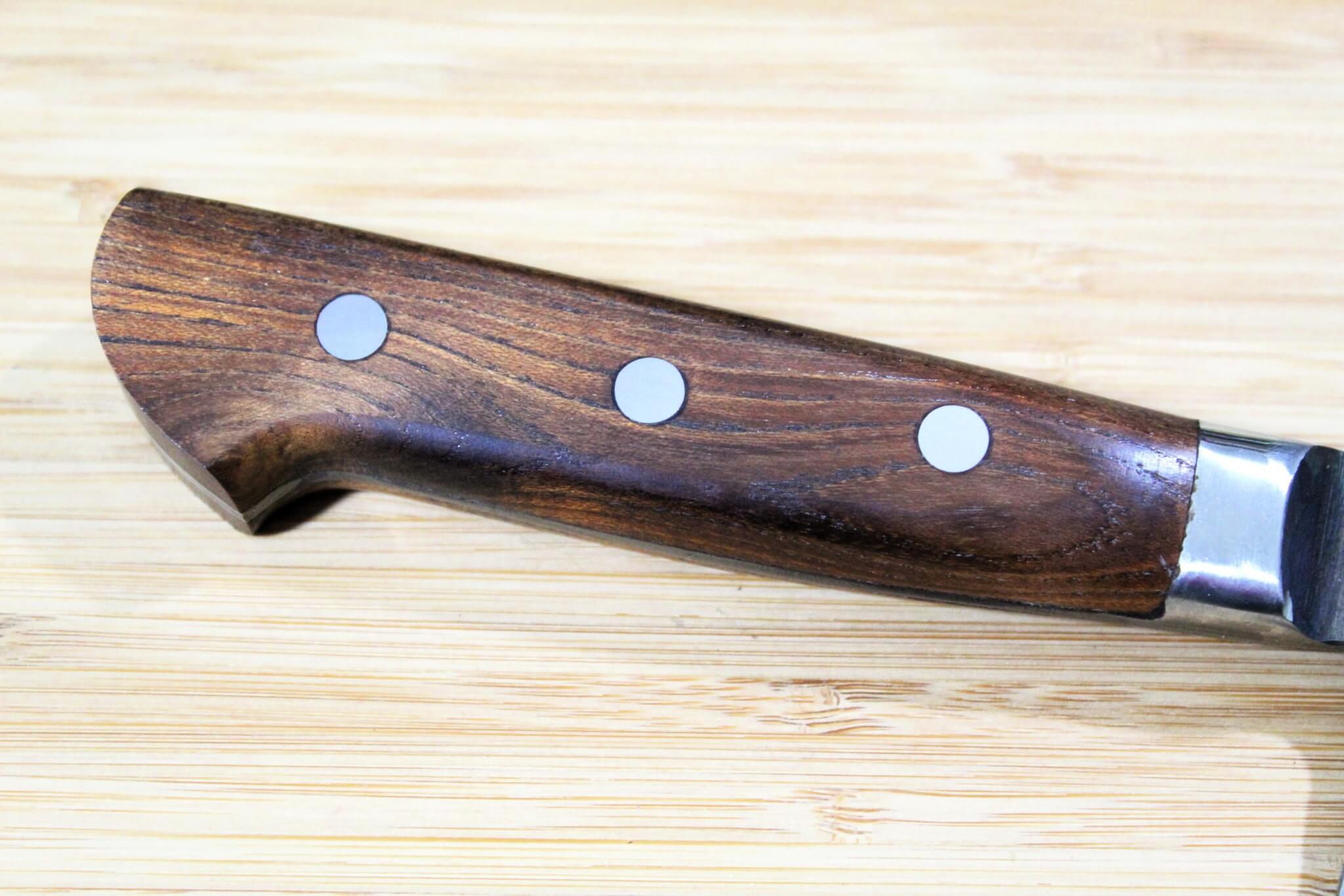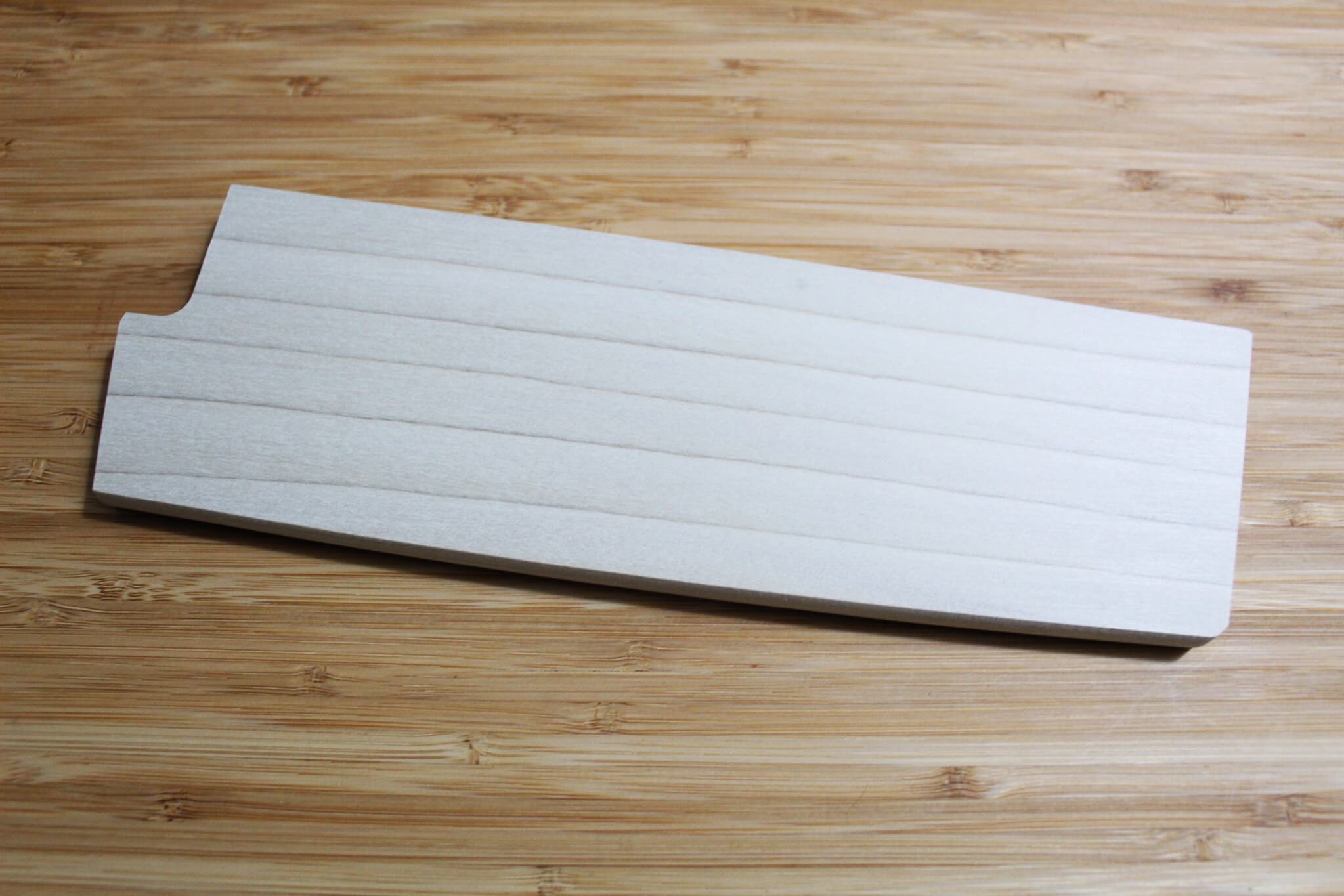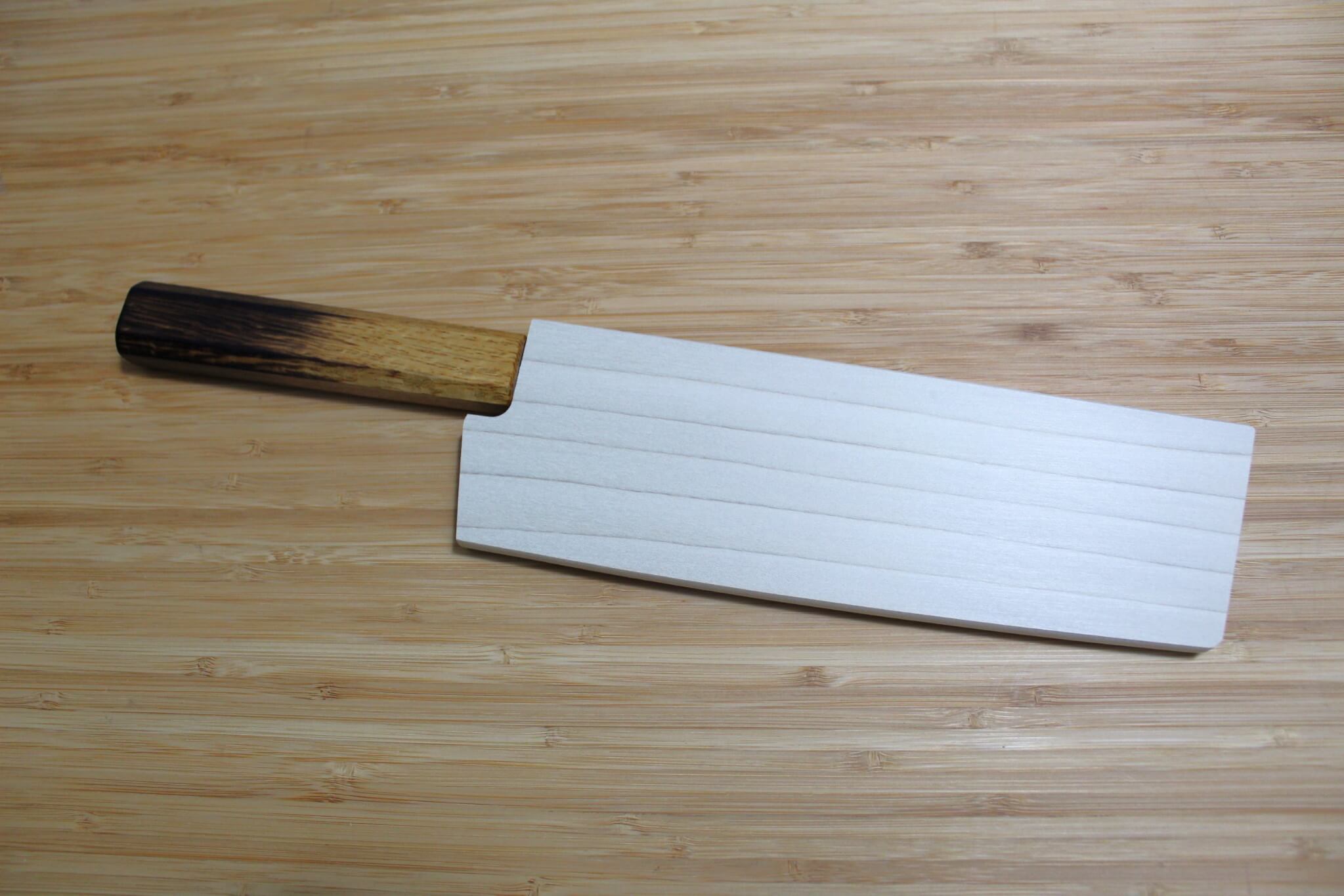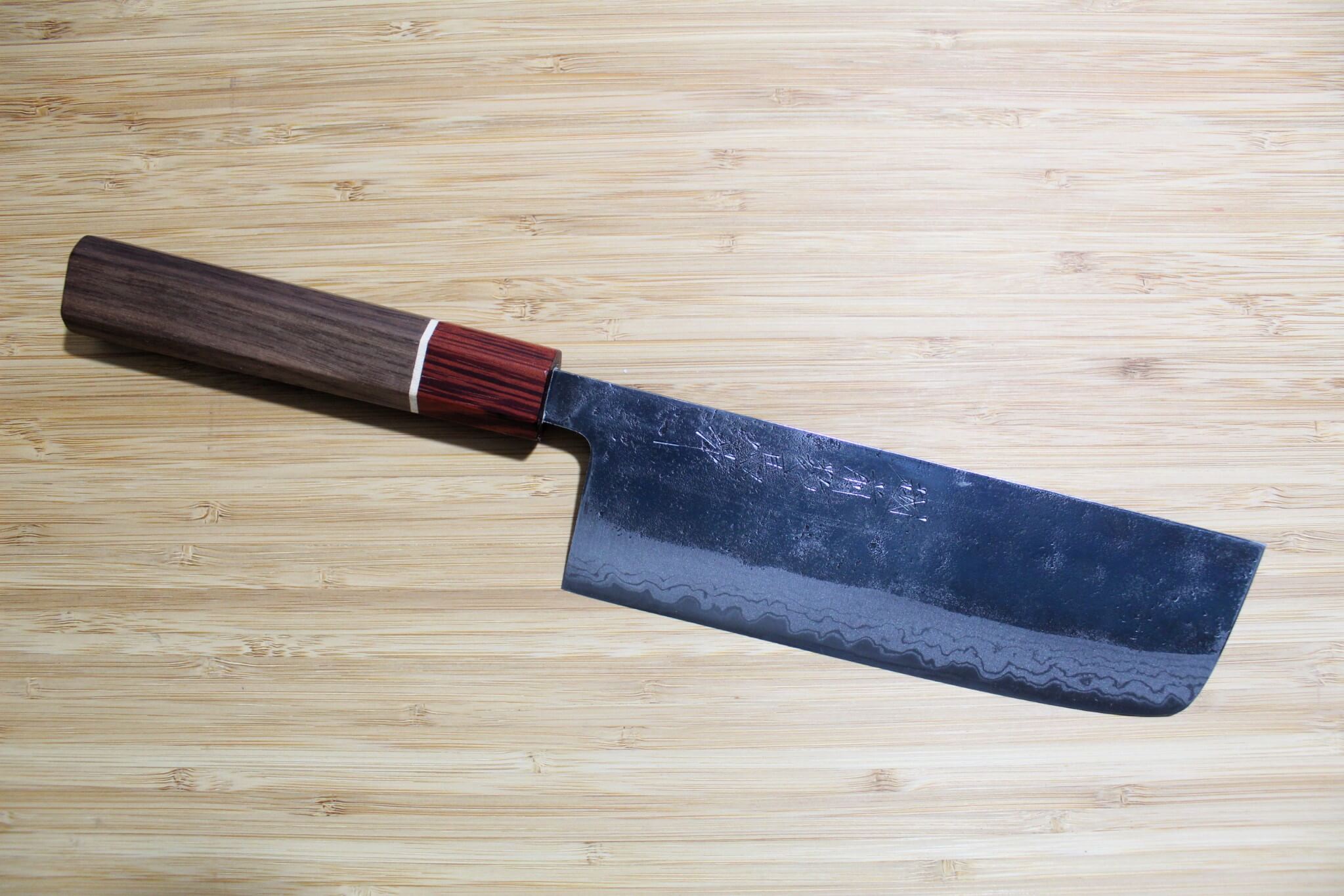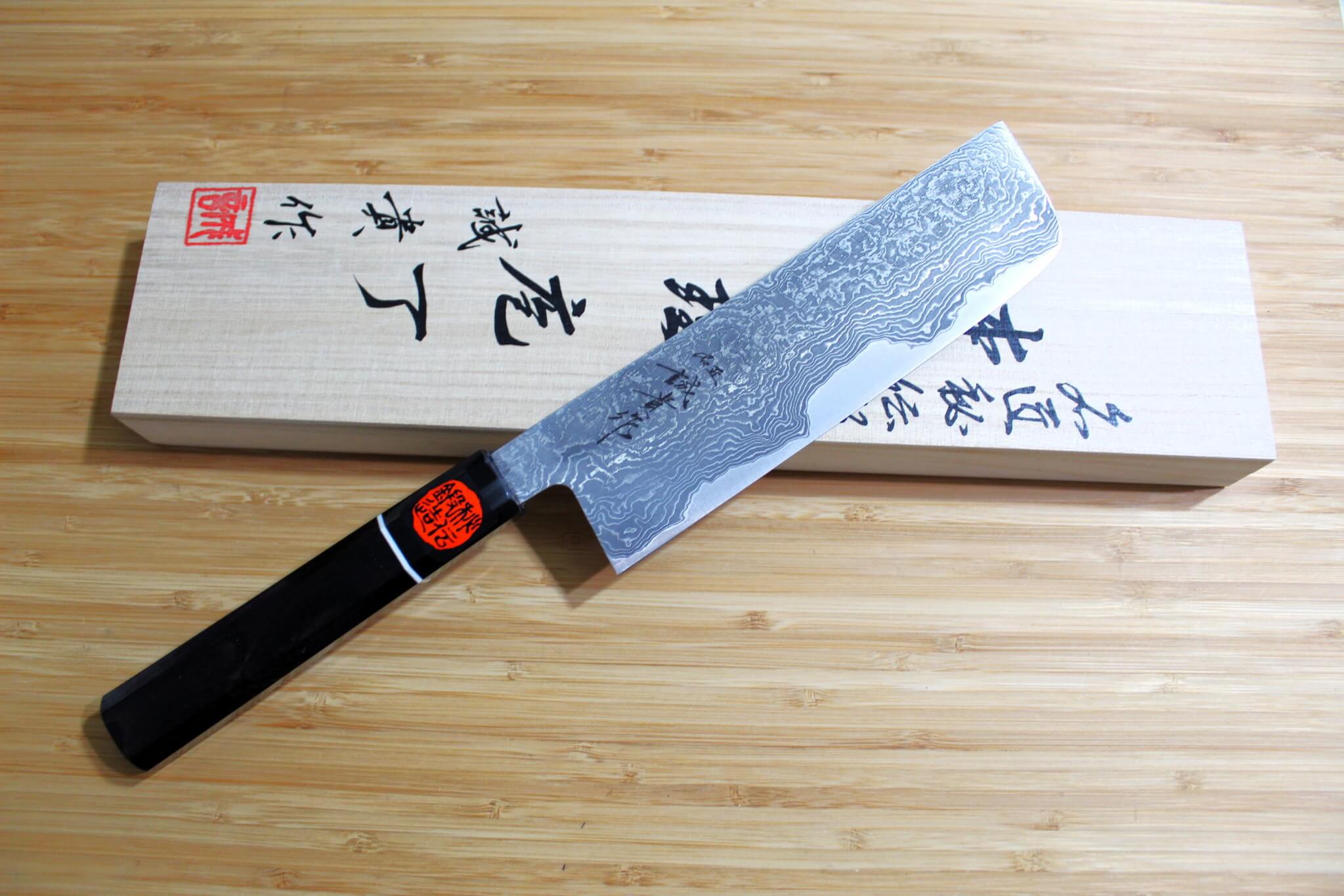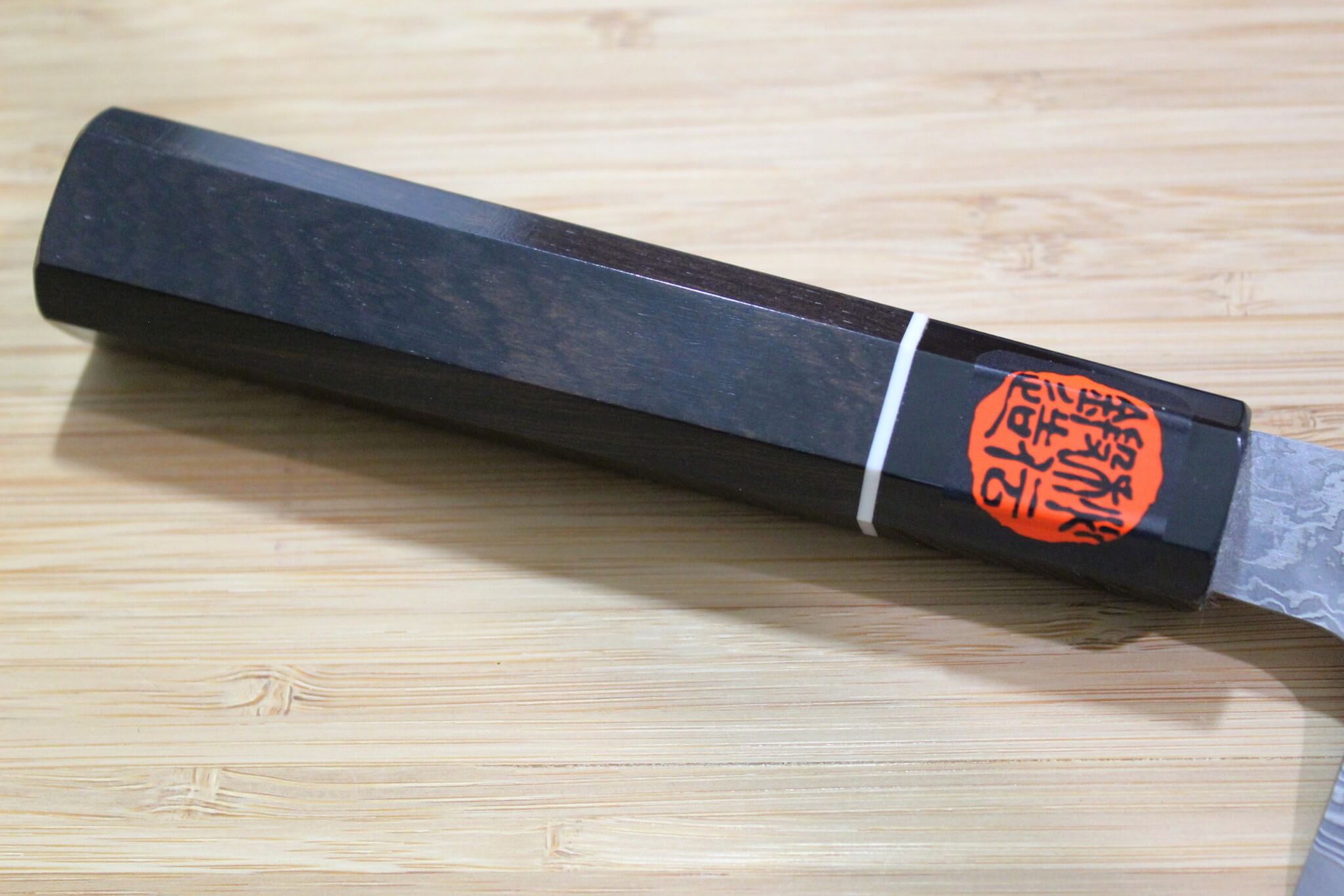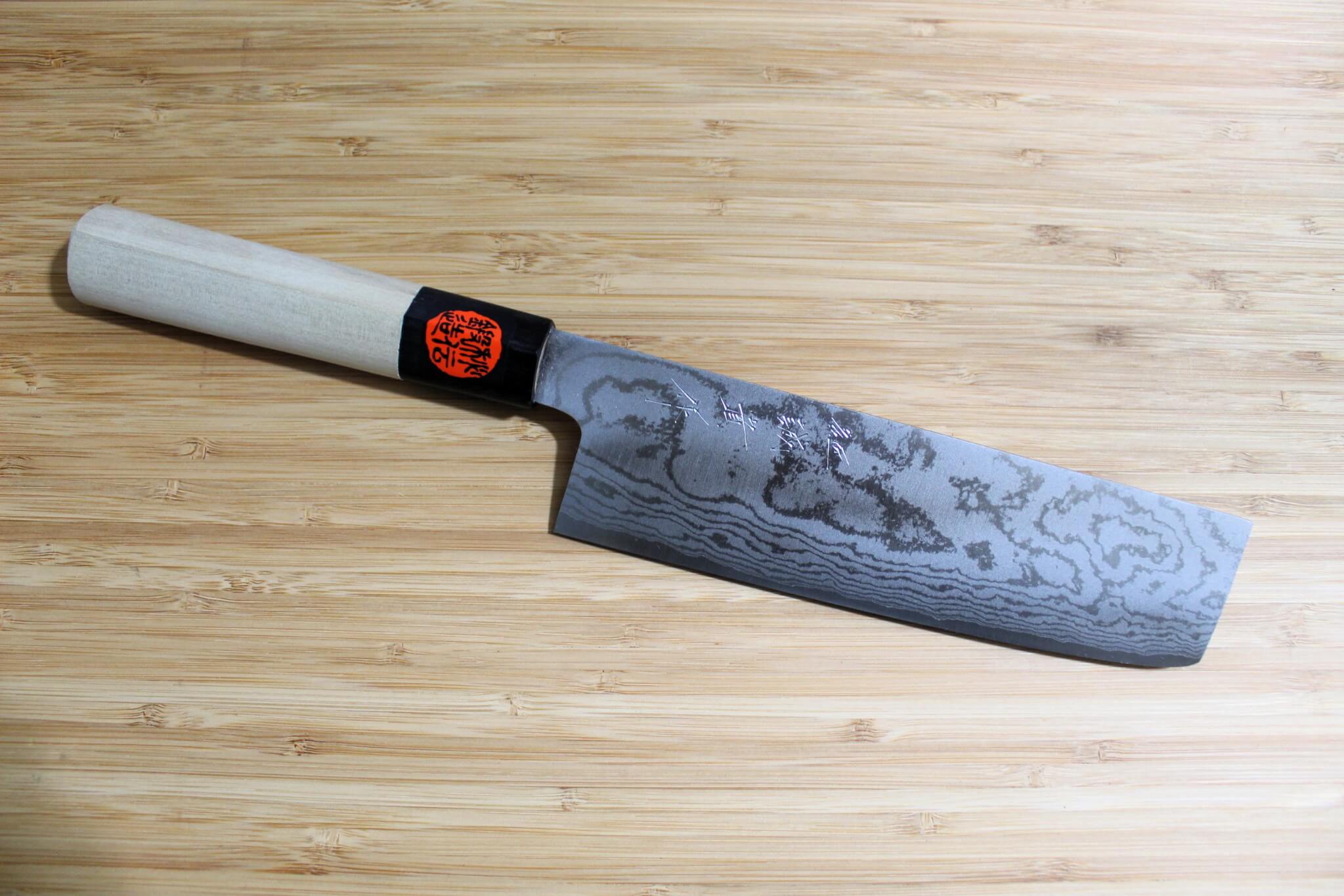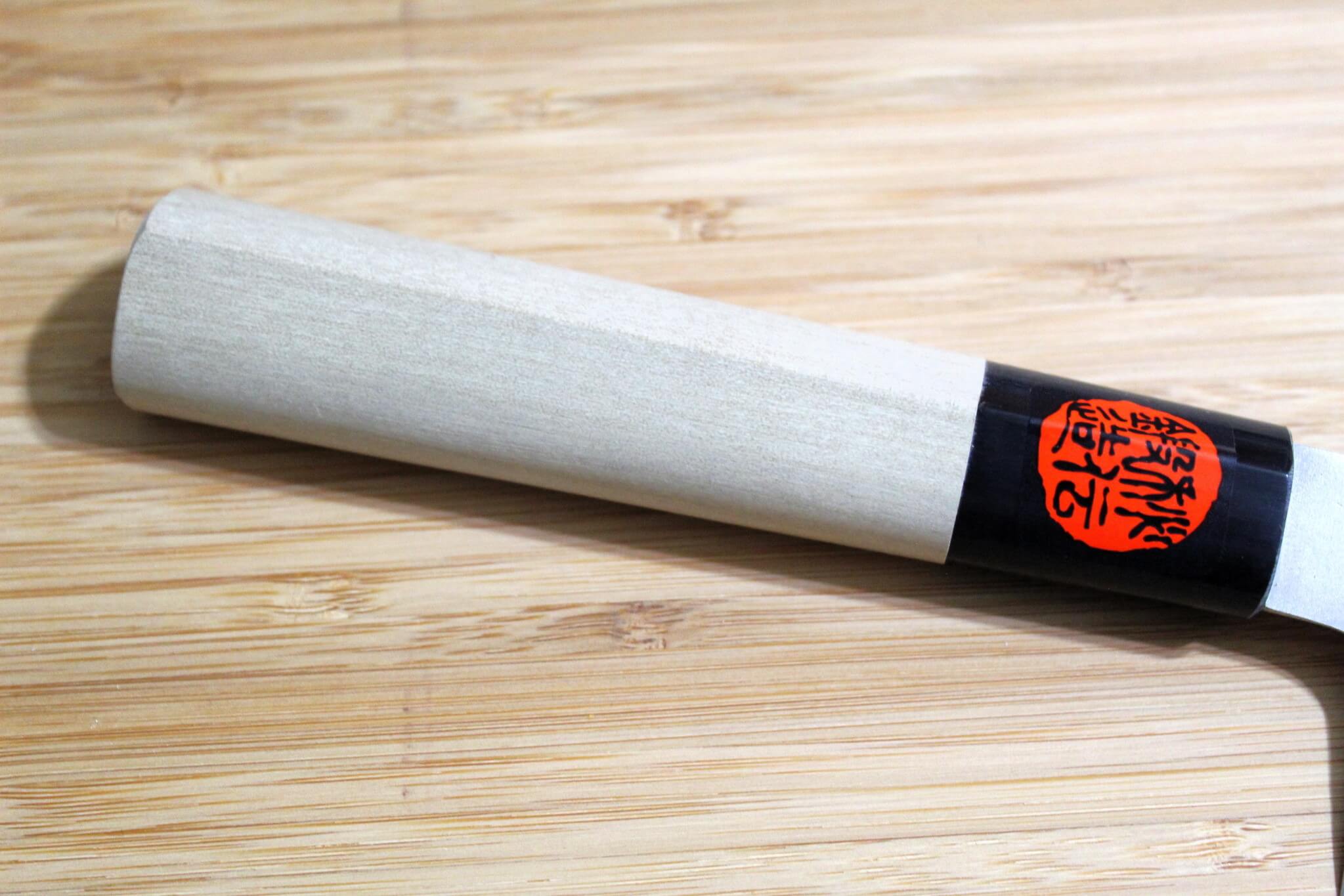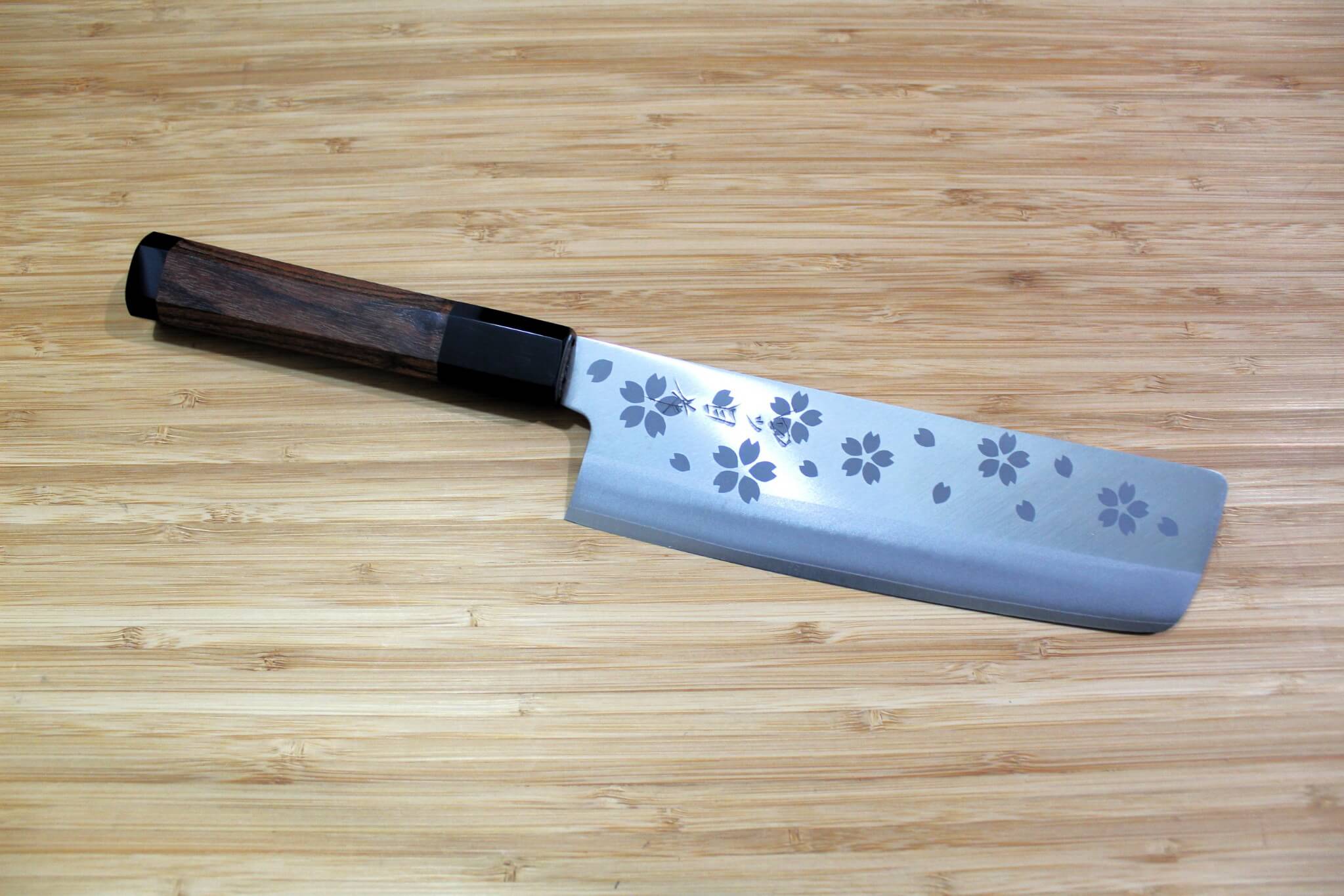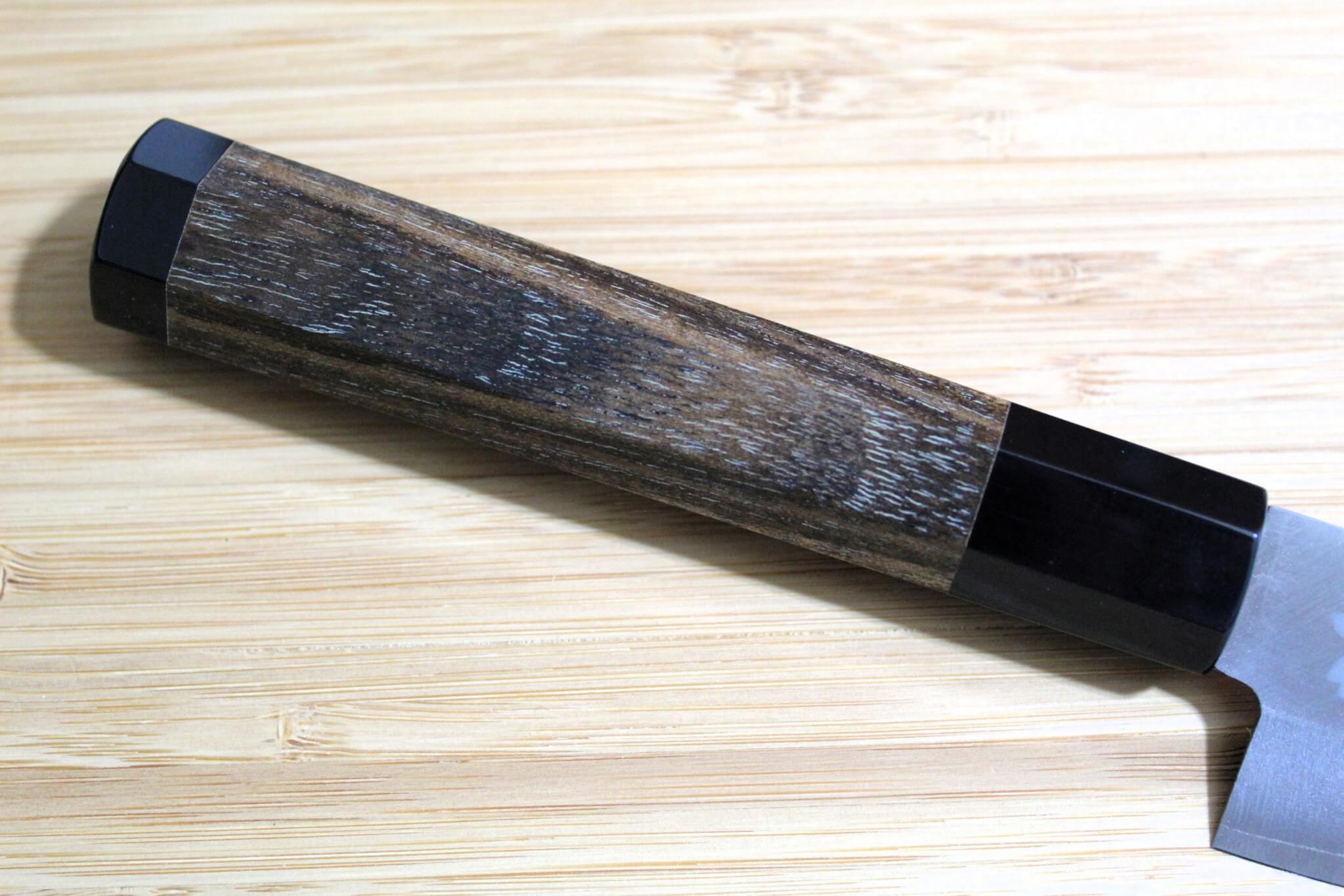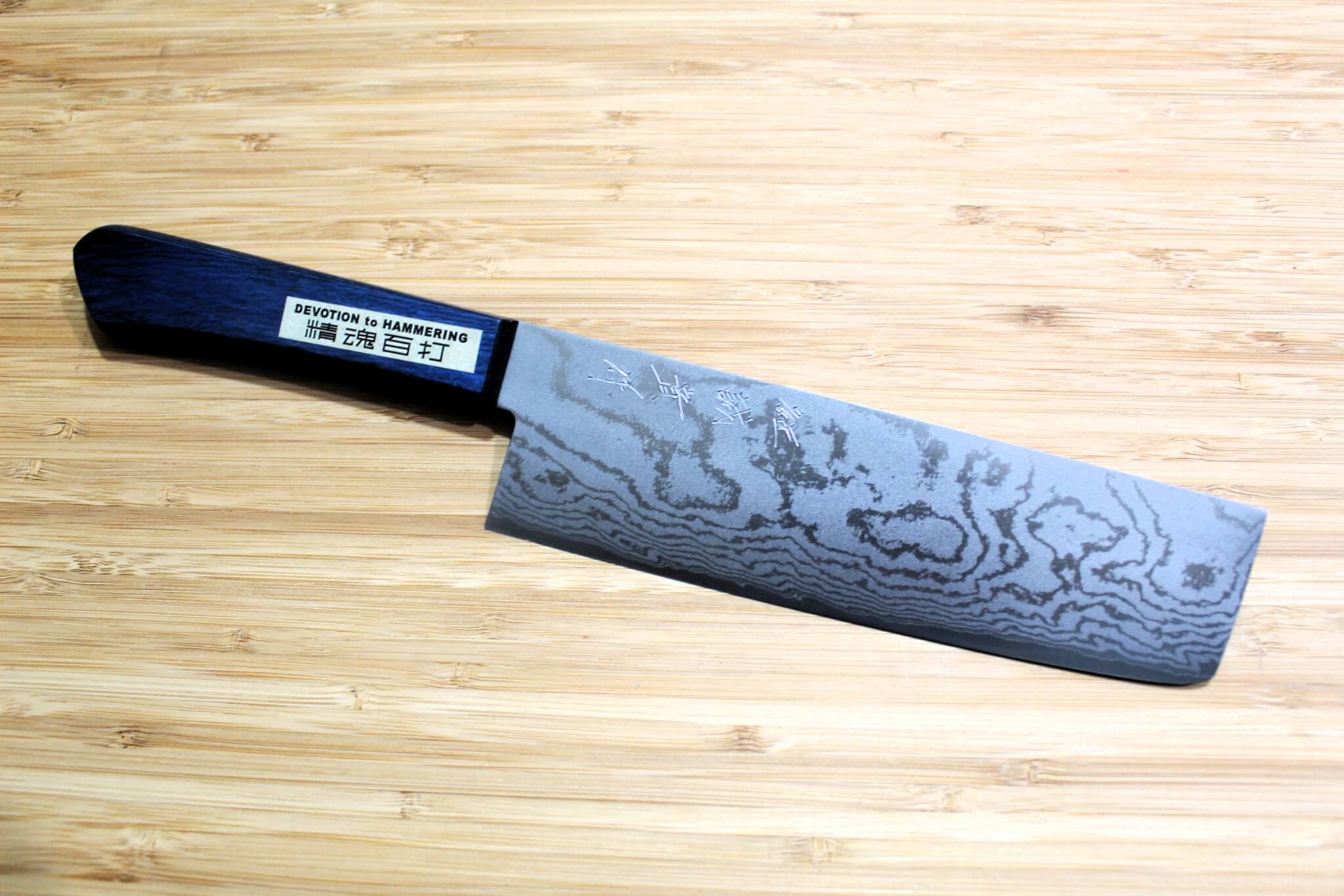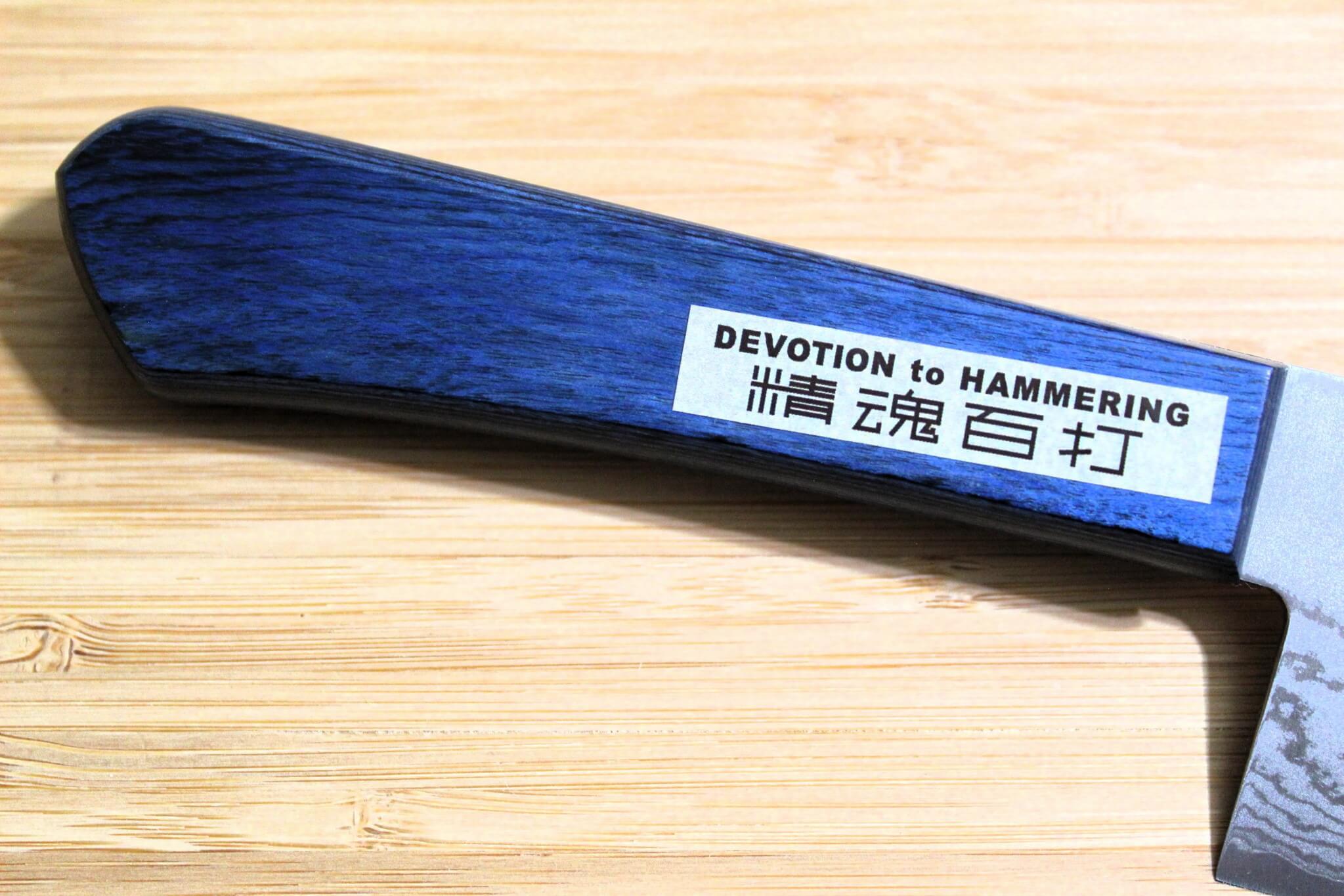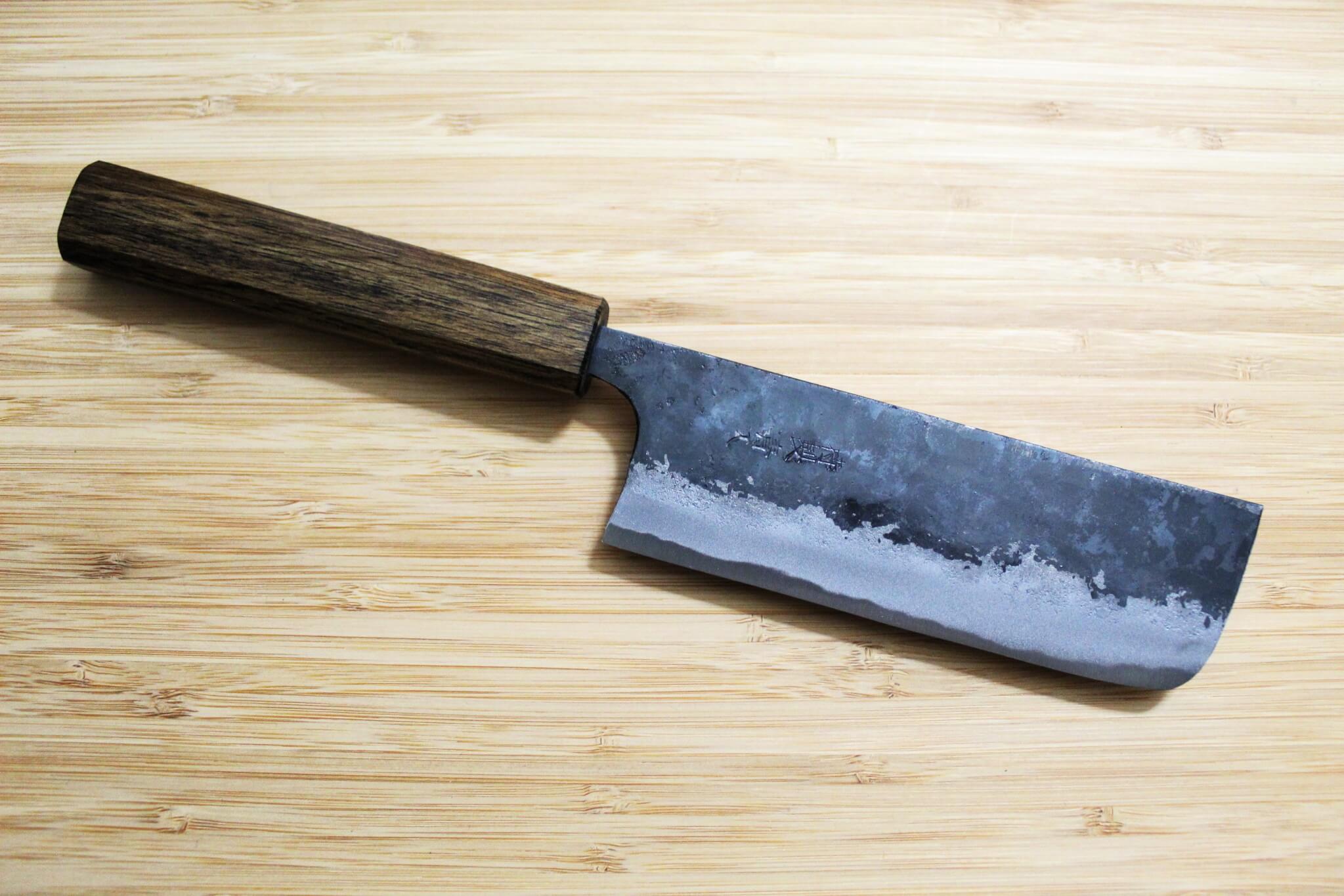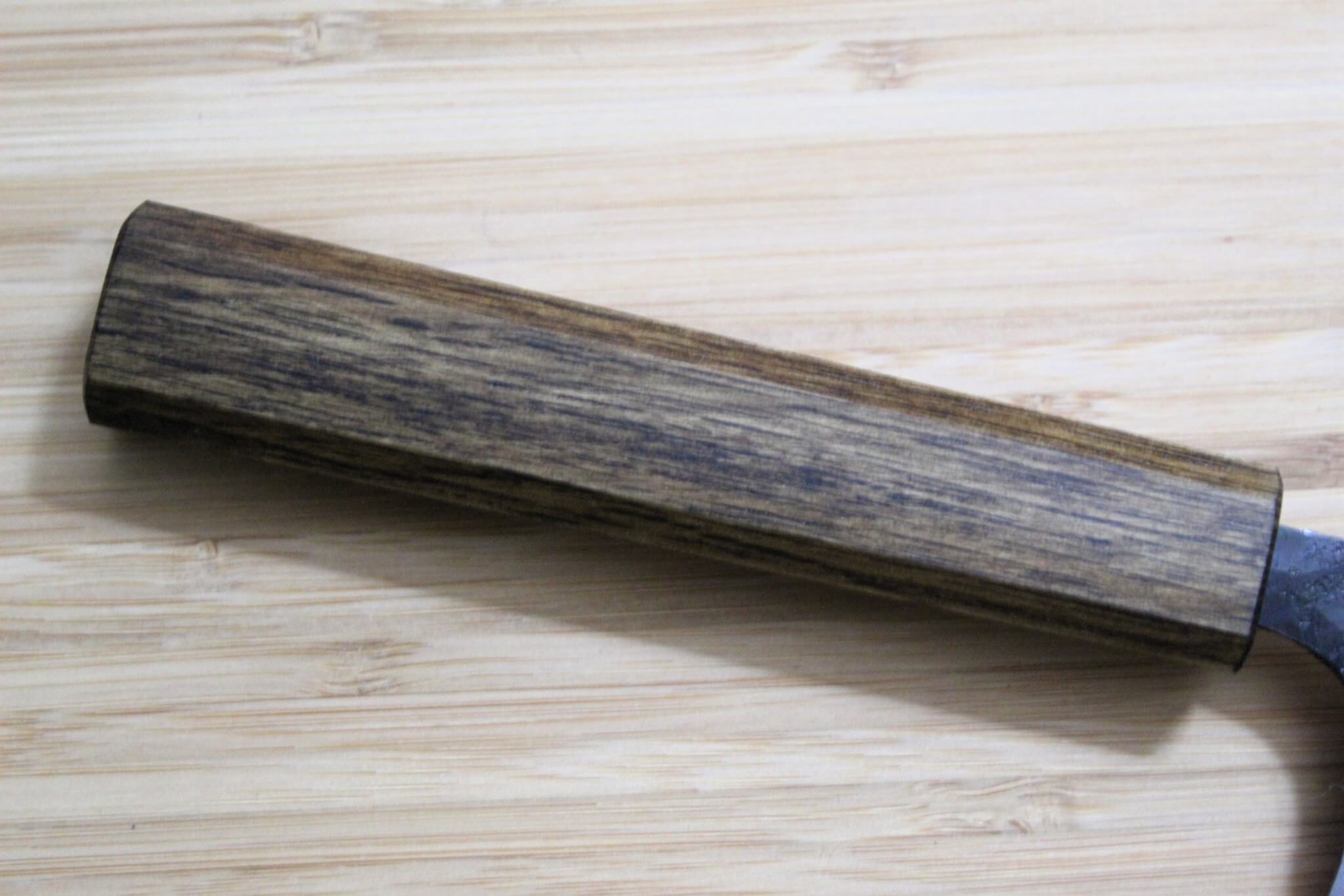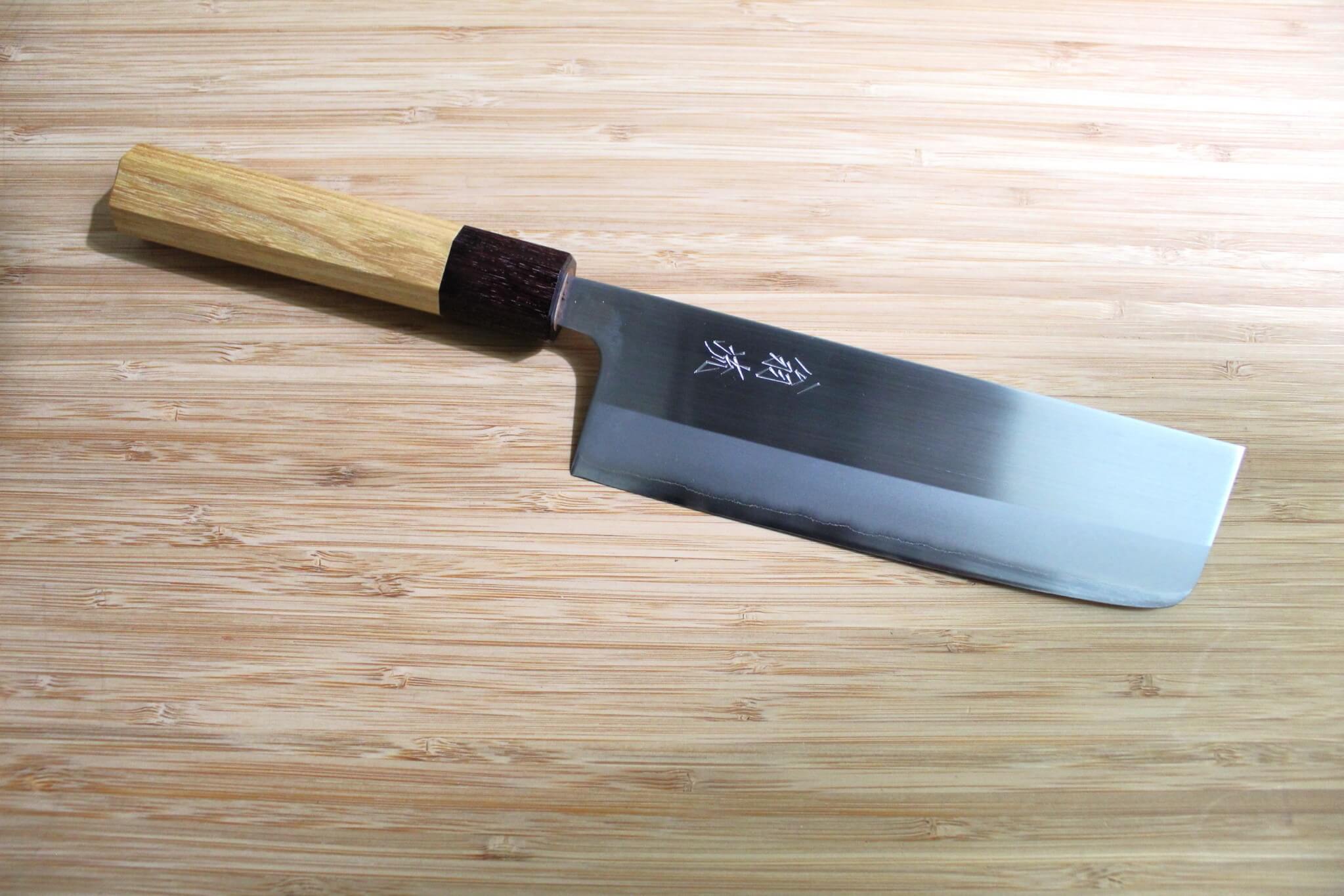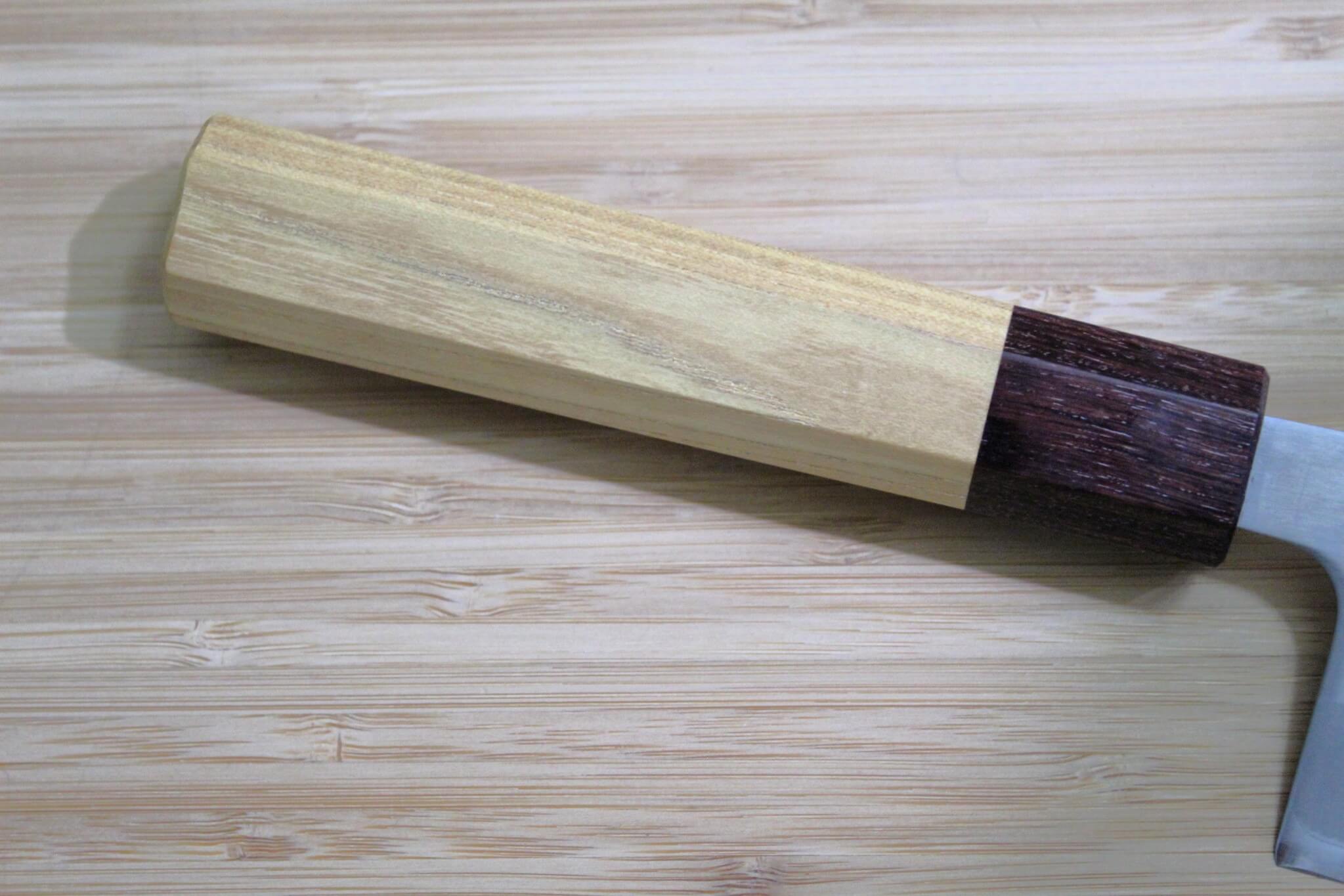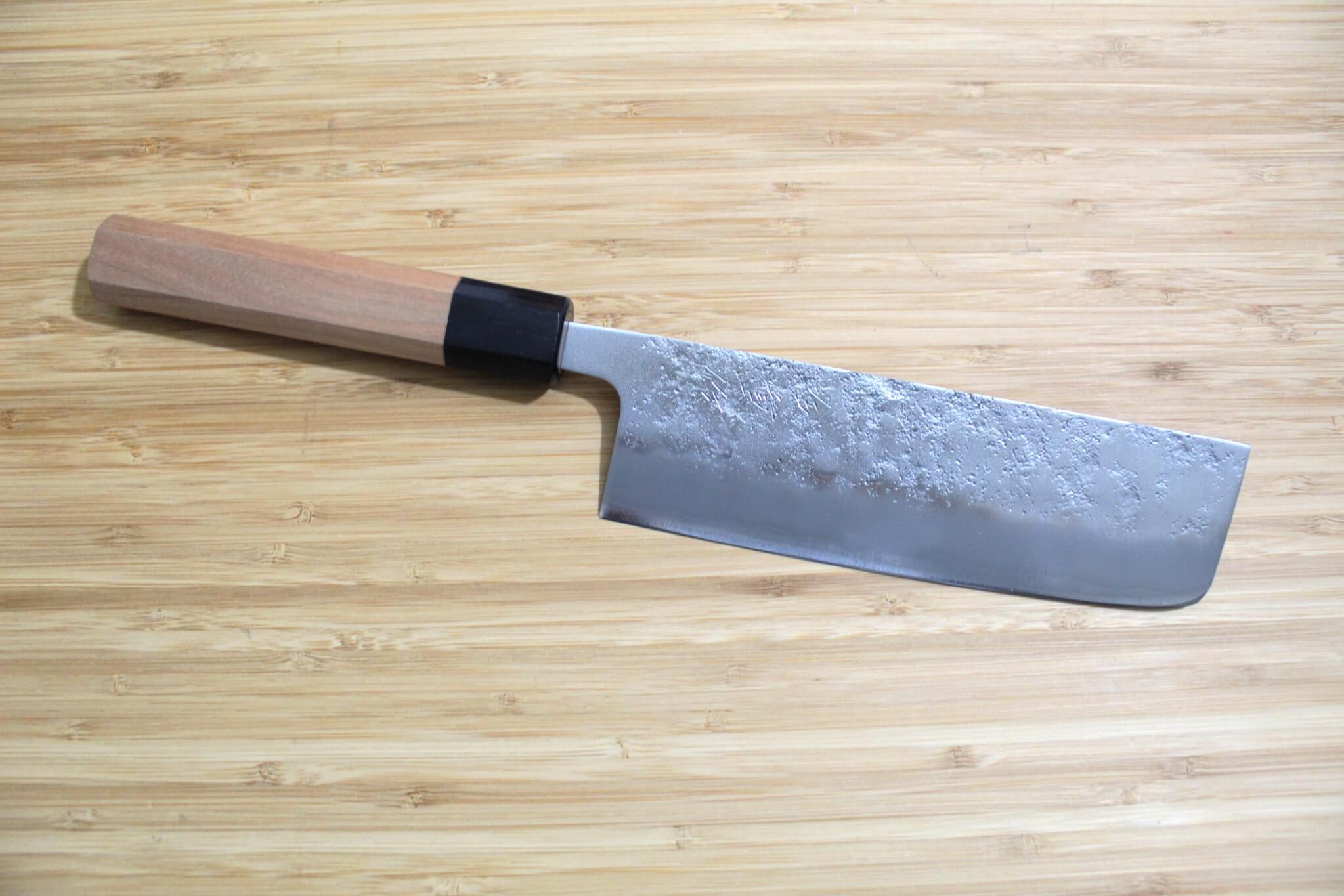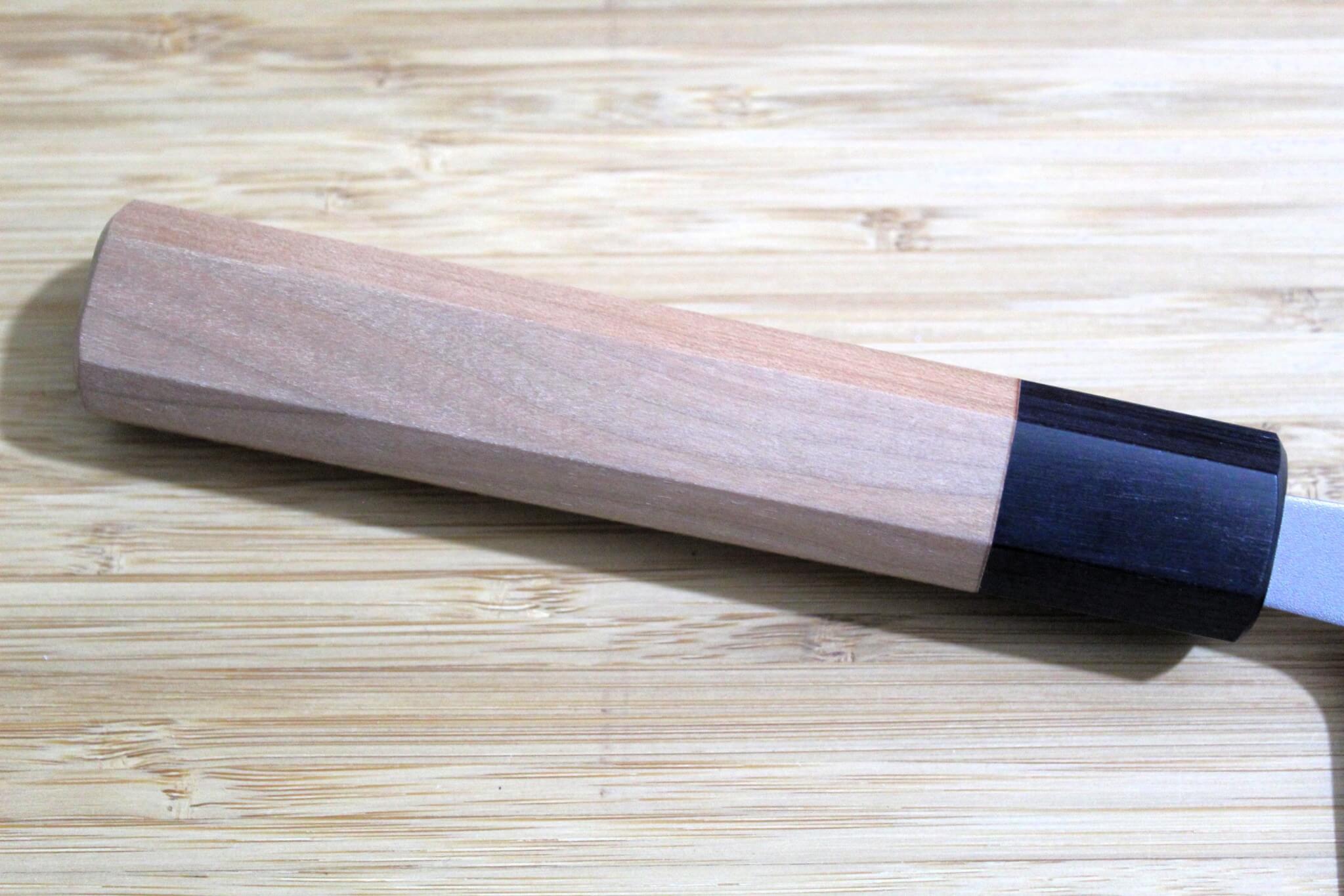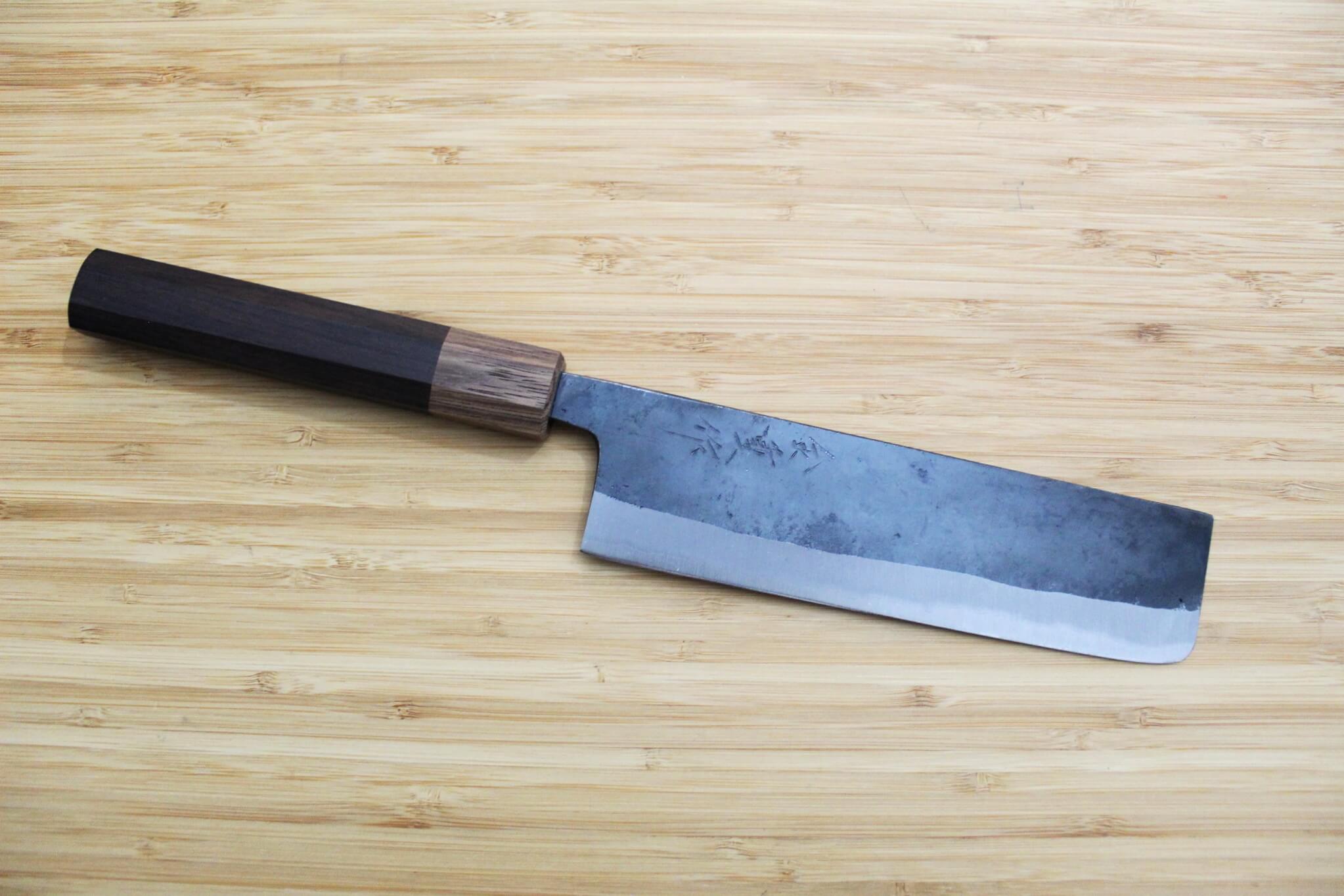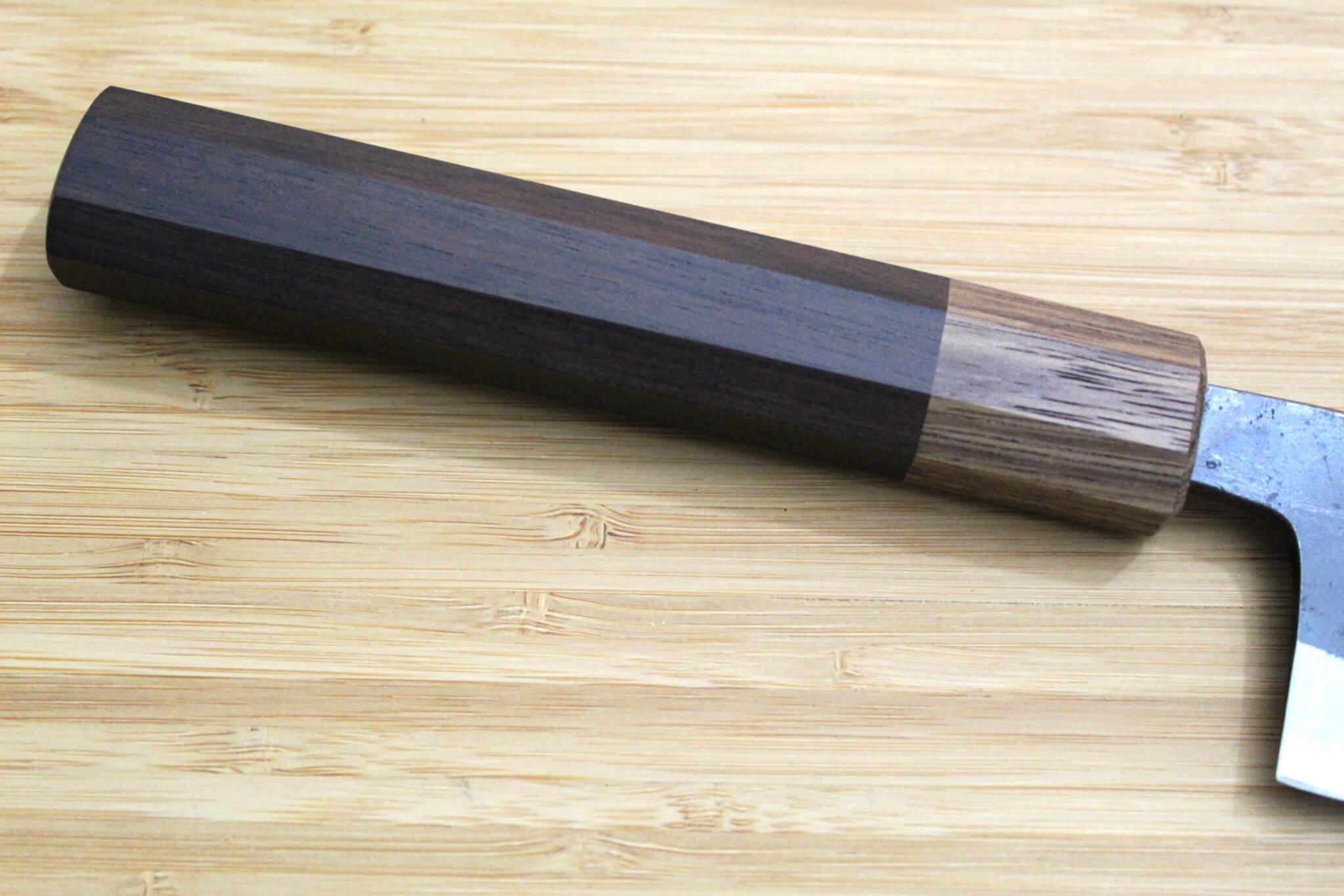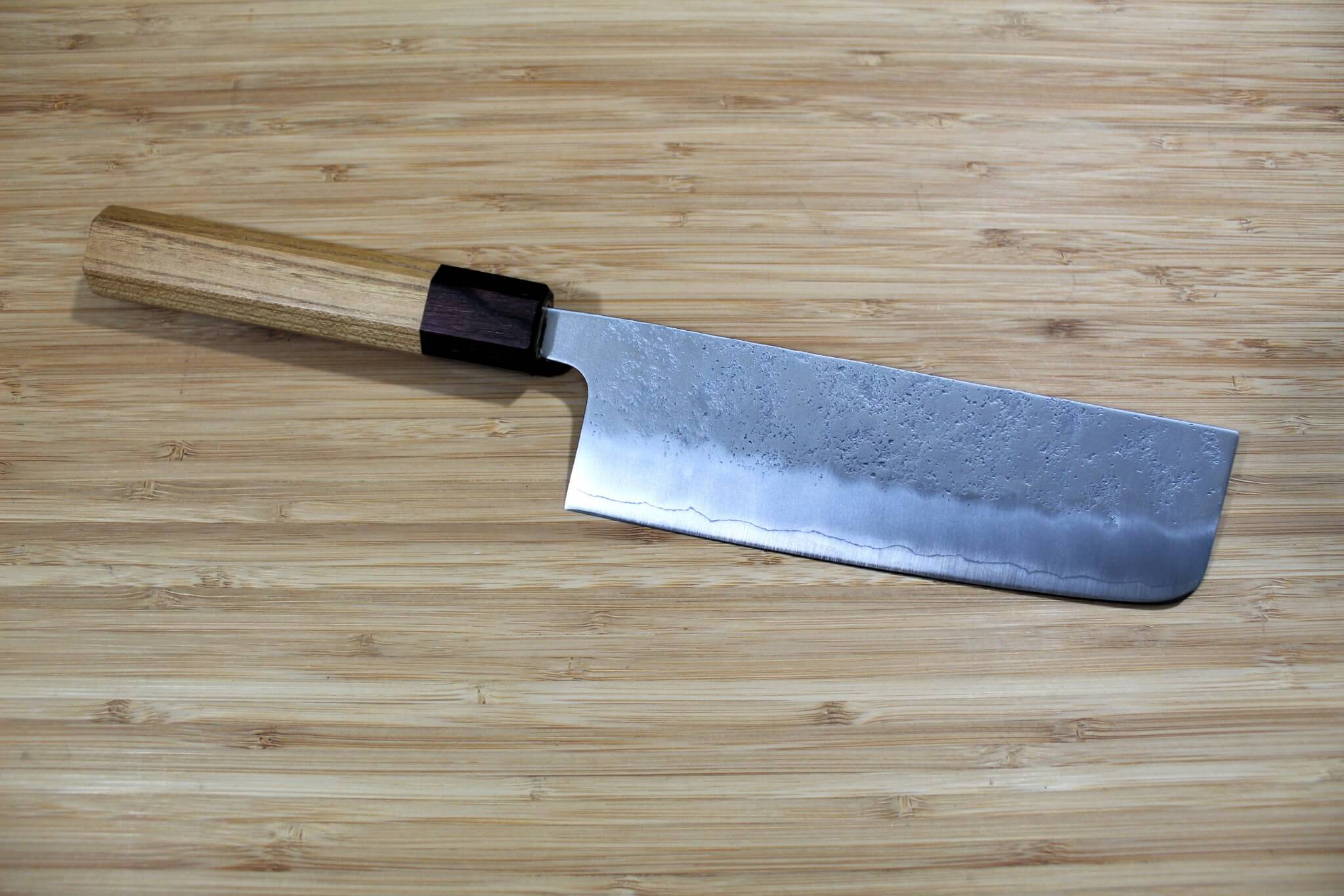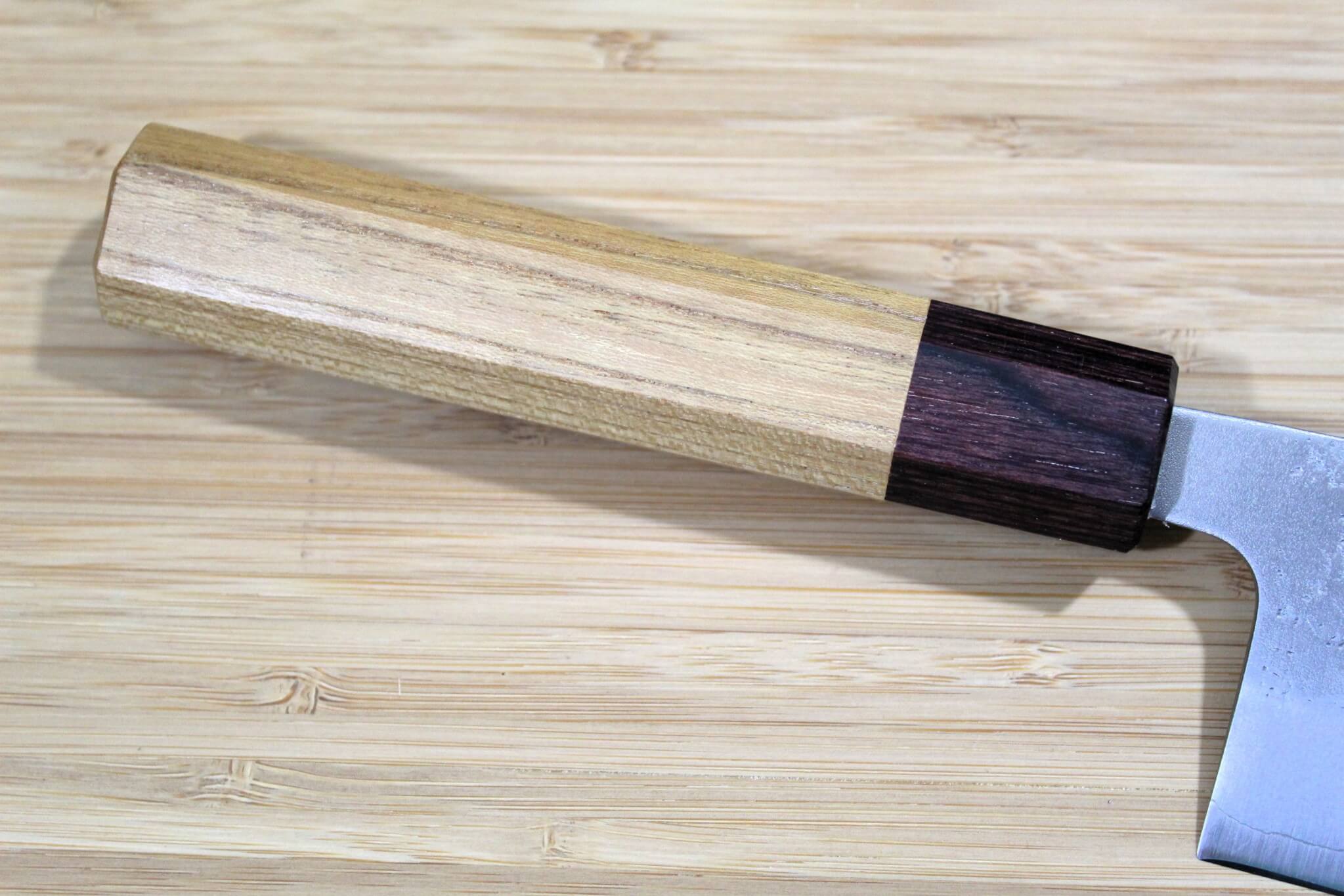Filters
FEATURES OF A NAKIRI KNIFE
At first glance, Nakiri knives may seem identical to a cleaver. This is far from the case in practice; a Nakiri is the quintessential Japanese vegetable knife. Designed for use in kitchens, both residential and commercial, throughout Japan, it features a body and design that comes from countless years of human craftsmanship, carefully cultivated from one master artisan to the next.
Similar in shape and design to a cleaver, the Nakiri is less than ideal for heavy-duty cutting and chopping, as with beef or meat with bones still in it. However, its physical characteristics are effective for working with all kinds of veggies, greens, and herbs. Here’s a look at some of those characteristics:
DOUBLE BEVEL DESIGN
Nakiri knives feature a double-beveled blade with a sharpened edge that can be manipulated with either hand. This design, coupled with the thin blade, allows you to easily slice through denser vegetables such as carrots or daikon radishes. Additionally, a double-beveled blade makes working with a whetstone to maintain your blade even easier.
FLAT & BROAD DESIGN
The Nakiri knife was created to help chefs work with greens and vegetables. Its flat, long, and broad design offers stability as you’re working with produce. With the wide blade, you can prep whole cabbages with ease and the handle clearance allows plenty of room for your hand as you’re cutting.
HIGH-QUALITY STEEL
Certain Nakiri knife manufacturers like Sakai Takayuki utilize high-carbon steel such as Aogami #2, also known as Blue Steel #2, as well as the more standard option of stainless steel. The high-carbon steel offers supreme sharpness, excellent for holding an edge, as well as long-term durability. Blue Steel #2 features an ideal grain structure for cutting with minimal impurities throughout. These high-carbon knives can be sharpened to a very fine edge to make slicing and dicing a breeze.
NAKIRI KNIVES — COMMON SLICING TECHNIQUES
The Nakiri is a remarkable blade with a deceptively simple design. Long, flat, and exceptionally durable, these knives were developed by artisans with a fervent desire to tackle the most repetitive tasks in vegetable preparation:
- Chopping
- Slicing
- Dicing
- Mincing
- Julienning
Always make sure to rinse and completely dry your Nakiri knife after use to prevent rust and potential damage to it.
EXPLORING THE HISTORY OF THE NAKIRI KNIFE
Nakiri knives are traditionally referred to as Nakiri hocho or 'cutting greens'. Although they can be found in professional kitchens the world over, they were originally introduced by craftsmen for use in the household.
Knives and blades have always been venerable items in Japanese society dating back to the 8th century. However, understanding that traditional blades like samurai swords were not ideal kitchen implements, bladesmiths handcrafted the first cooking knives. Many of these were sourced out of the Osaka prefecture, home to Sakai city and the Hasu-Seizo family brand Sakai Takayuki.
Come the 17th century, Japan opened its doors to imported knives and other Western goods. This inspired knifemakers and artisan steelworkers to craft the Nakiri chef knife as we know it today. Widely used and still remarkably close to its original design, the Nakiri knife offers timeless utility for professional and home chefs alike.
CREATE INSPIRED TEXTURES WITH NAKIRI KNIVES IN YOUR COLLECTION
Discover a new way to prep your produce with the Nakiri in your kitchen. Elevate your cooking skills and bring forth unexpected textures in your dishes with a purpose-built knife crafted by artisans renowned for their skill.
Hasu-Seizo specializes in handcrafted Japanese knives sourced from our family-owned manufacturing facility Sakai, Osaka. Upgrade your collection today with a quality Nakiri chef knife.
FEATURES OF A NAKIRI KNIFE
At first glance, Nakiri knives may seem identical to a cleaver. This is far from the case in practice; a Nakiri is the quintessential Japanese vegetable knife. Designed for use in kitchens, both residential and commercial, throughout Japan, it features a body and design that comes from countless years of human craftsmanship, carefully cultivated from one master artisan to the next.
Similar in shape and design to a cleaver, the Nakiri is less than ideal for heavy-duty cutting and chopping, as with beef or meat with bones still in it. However, its physical characteristics are effective for working with all kinds of veggies, greens, and herbs. Here’s a look at some of those characteristics:
DOUBLE BEVEL DESIGN
Nakiri knives feature a double-beveled blade with a. . . Show More >


